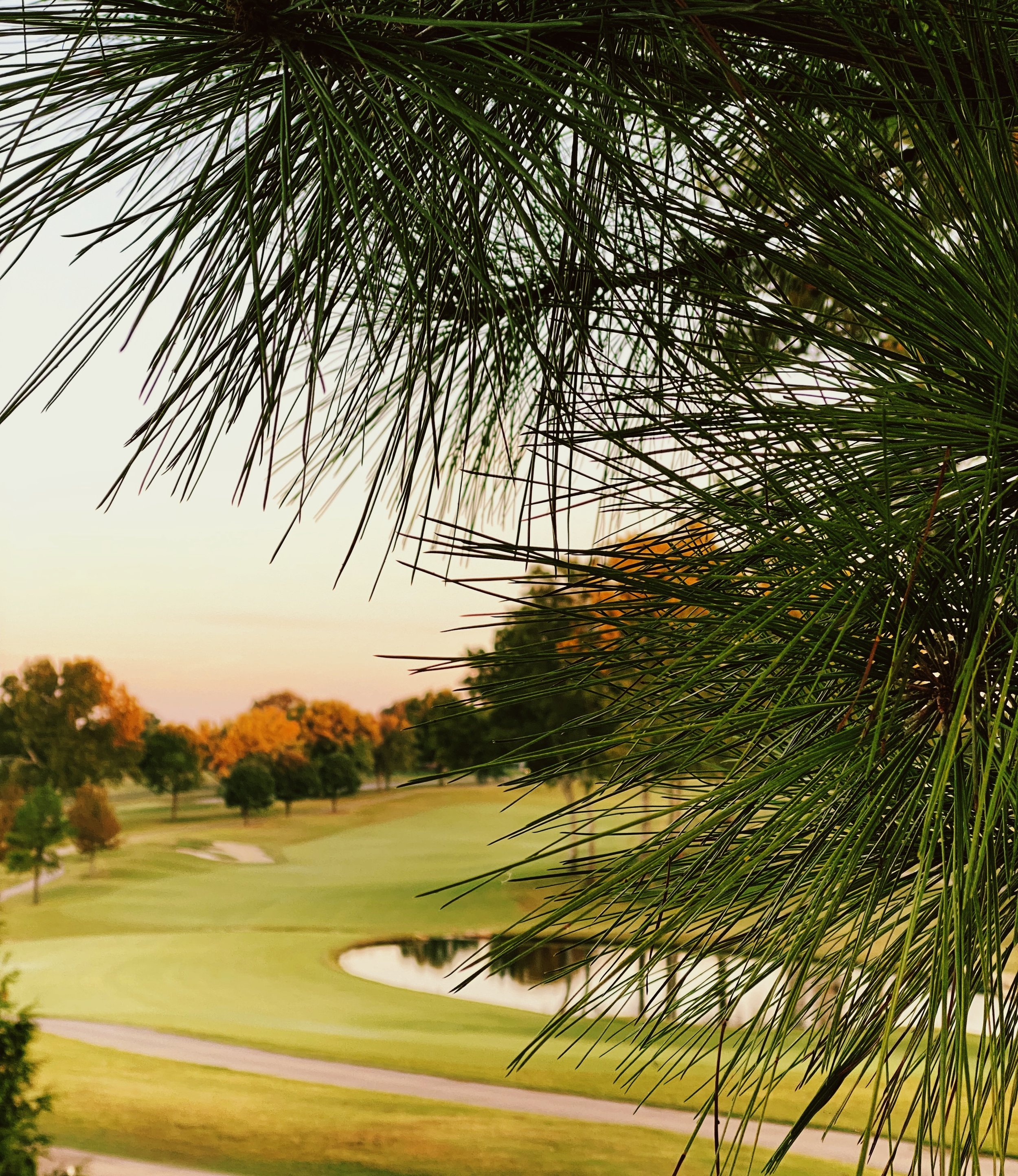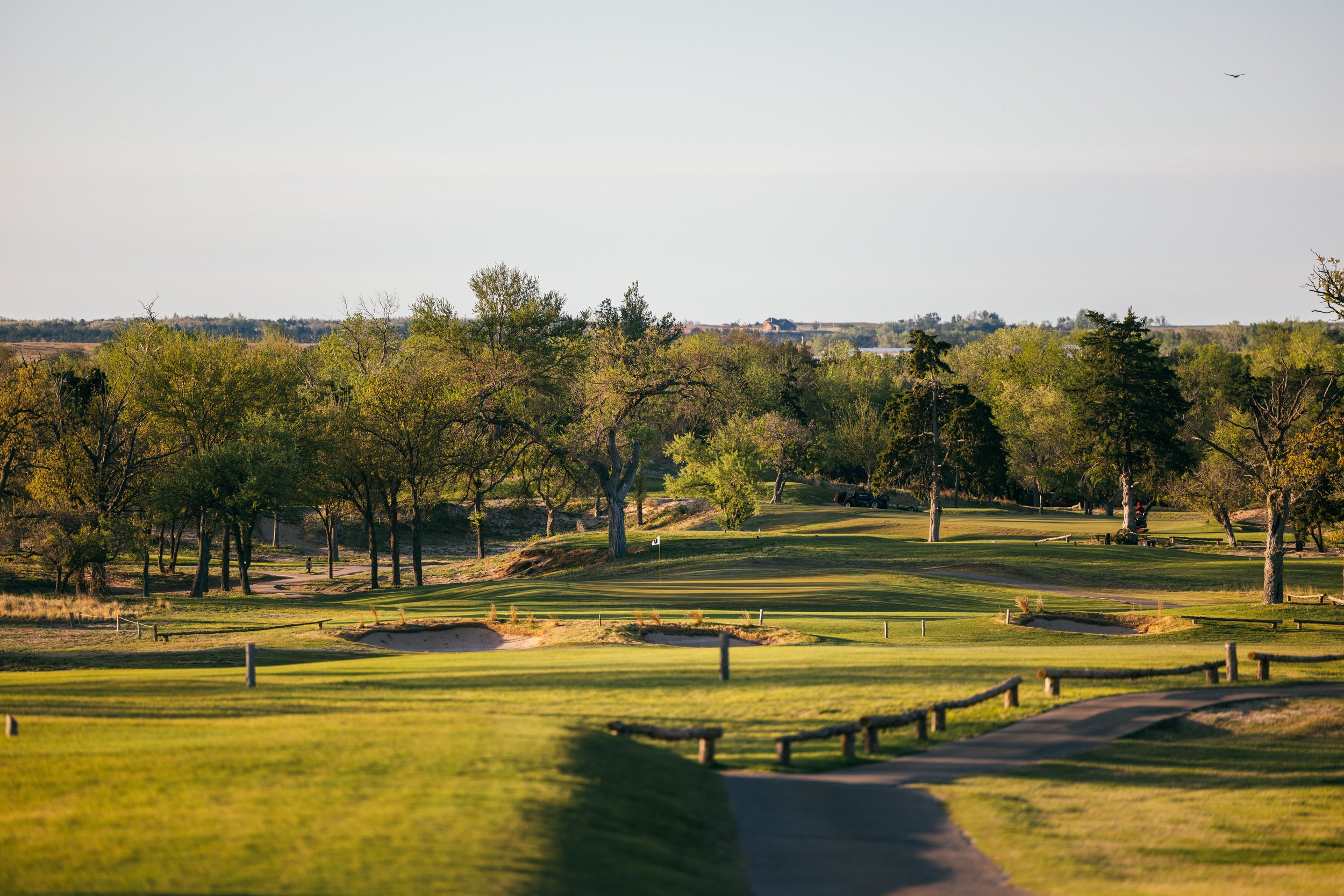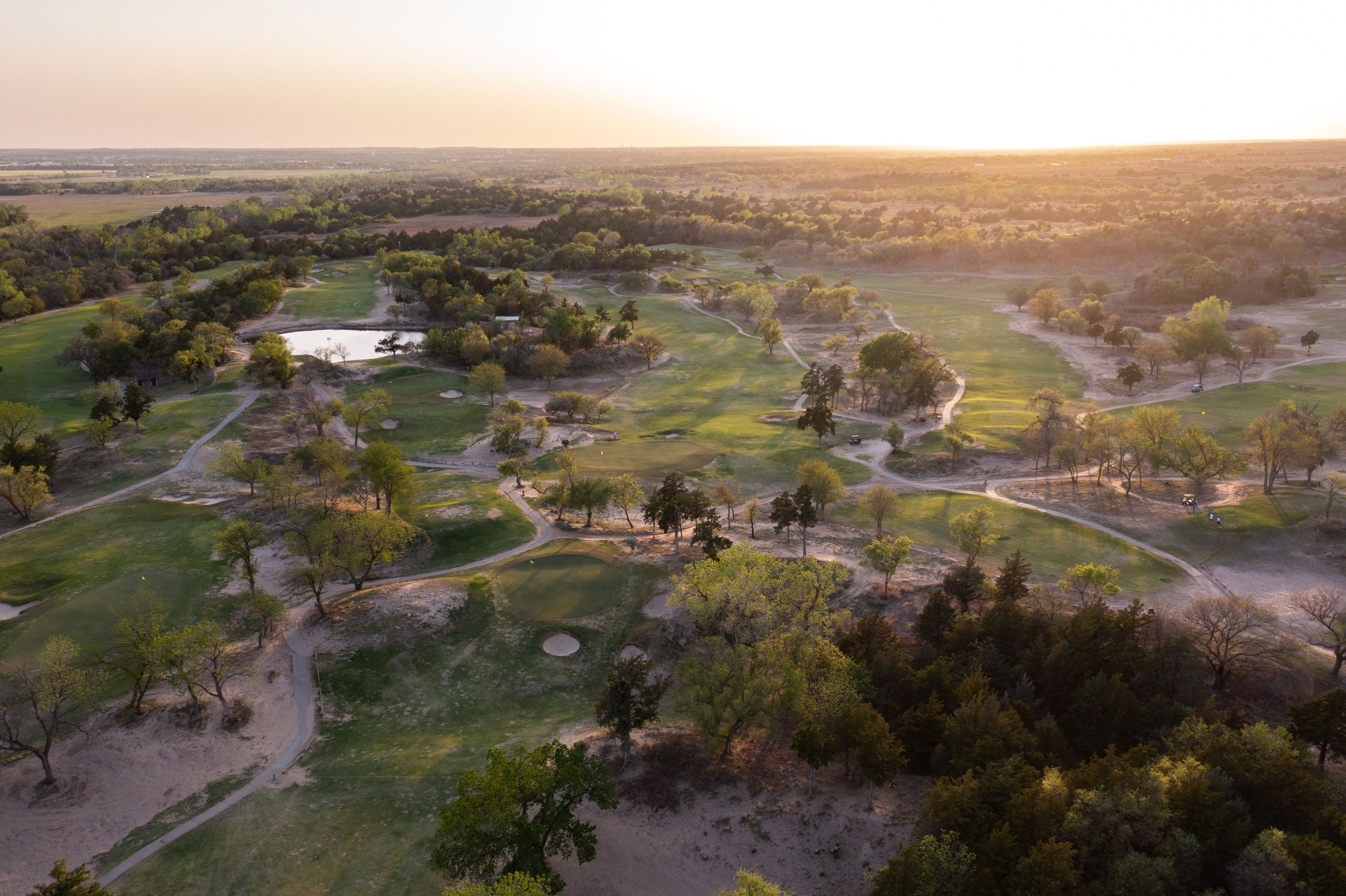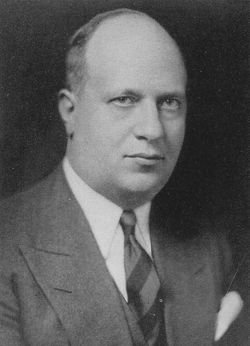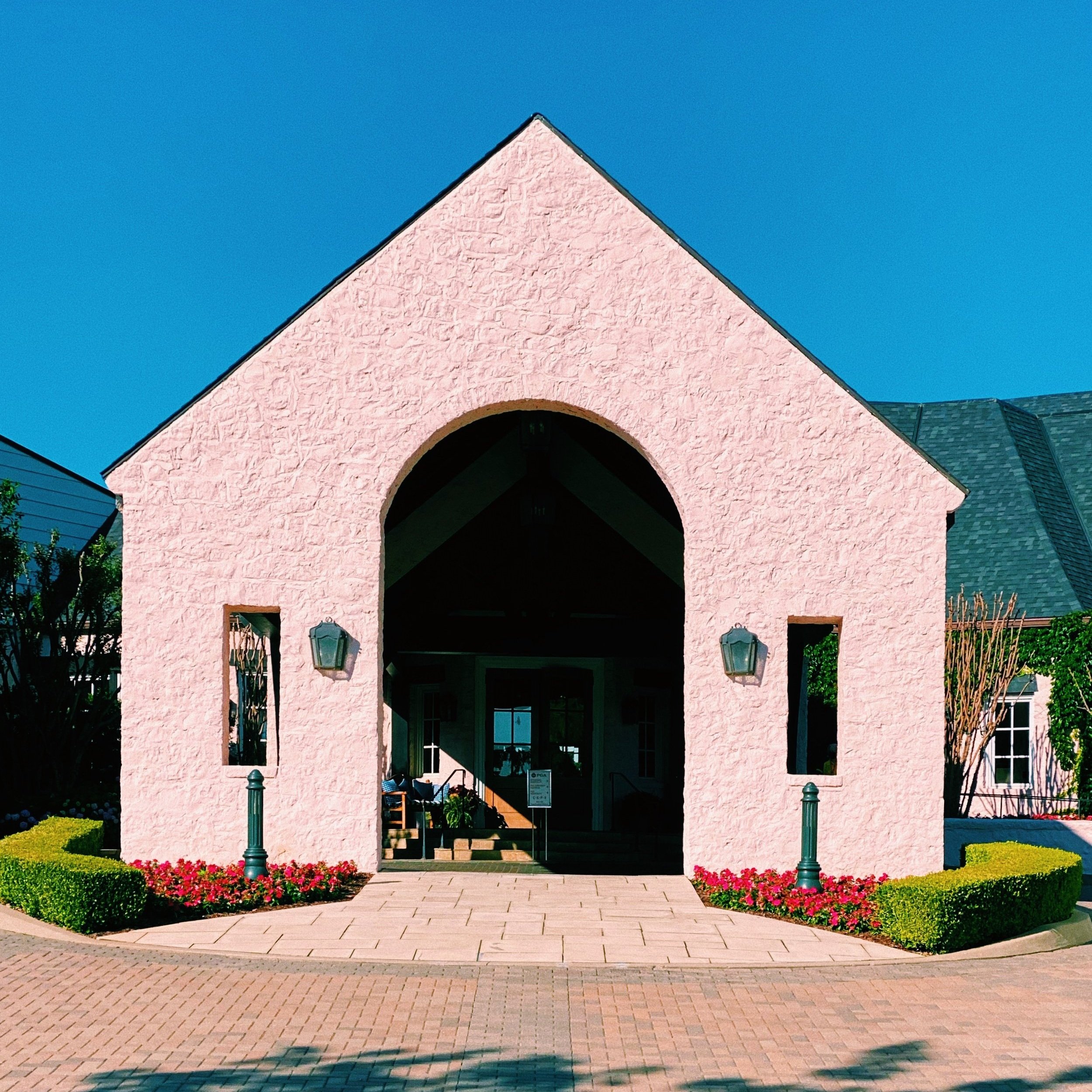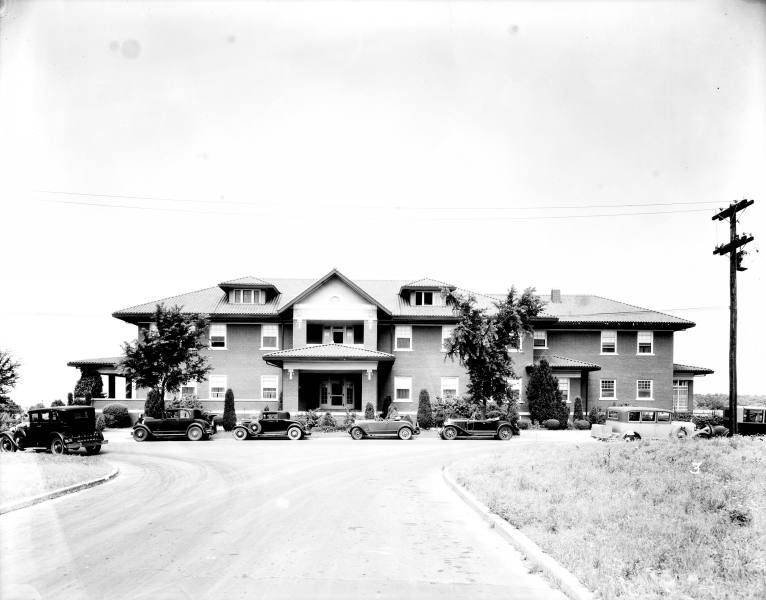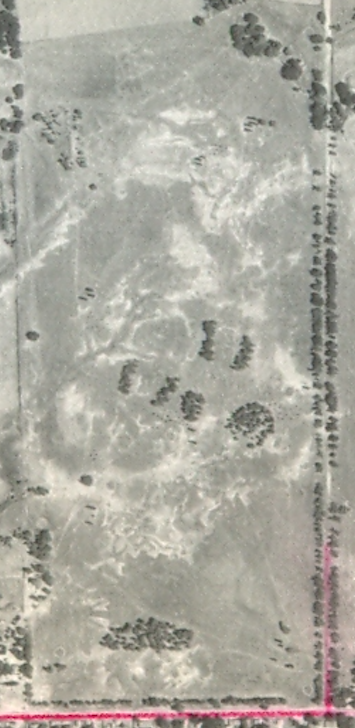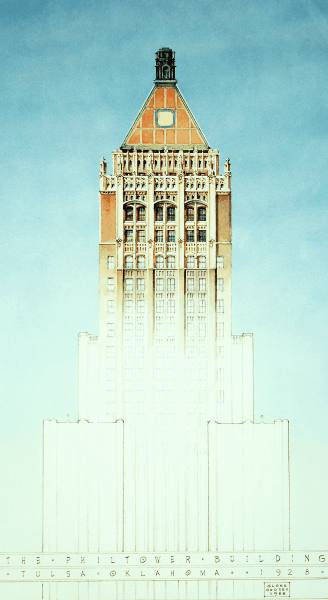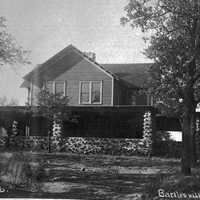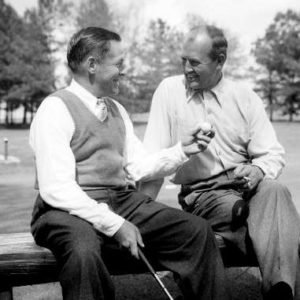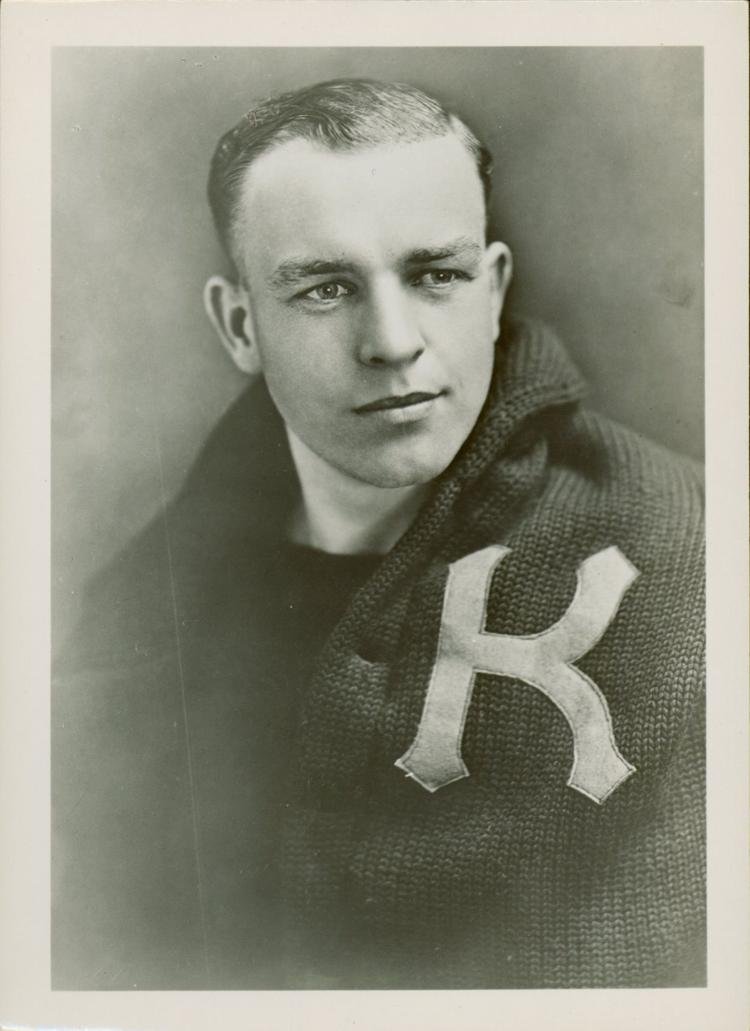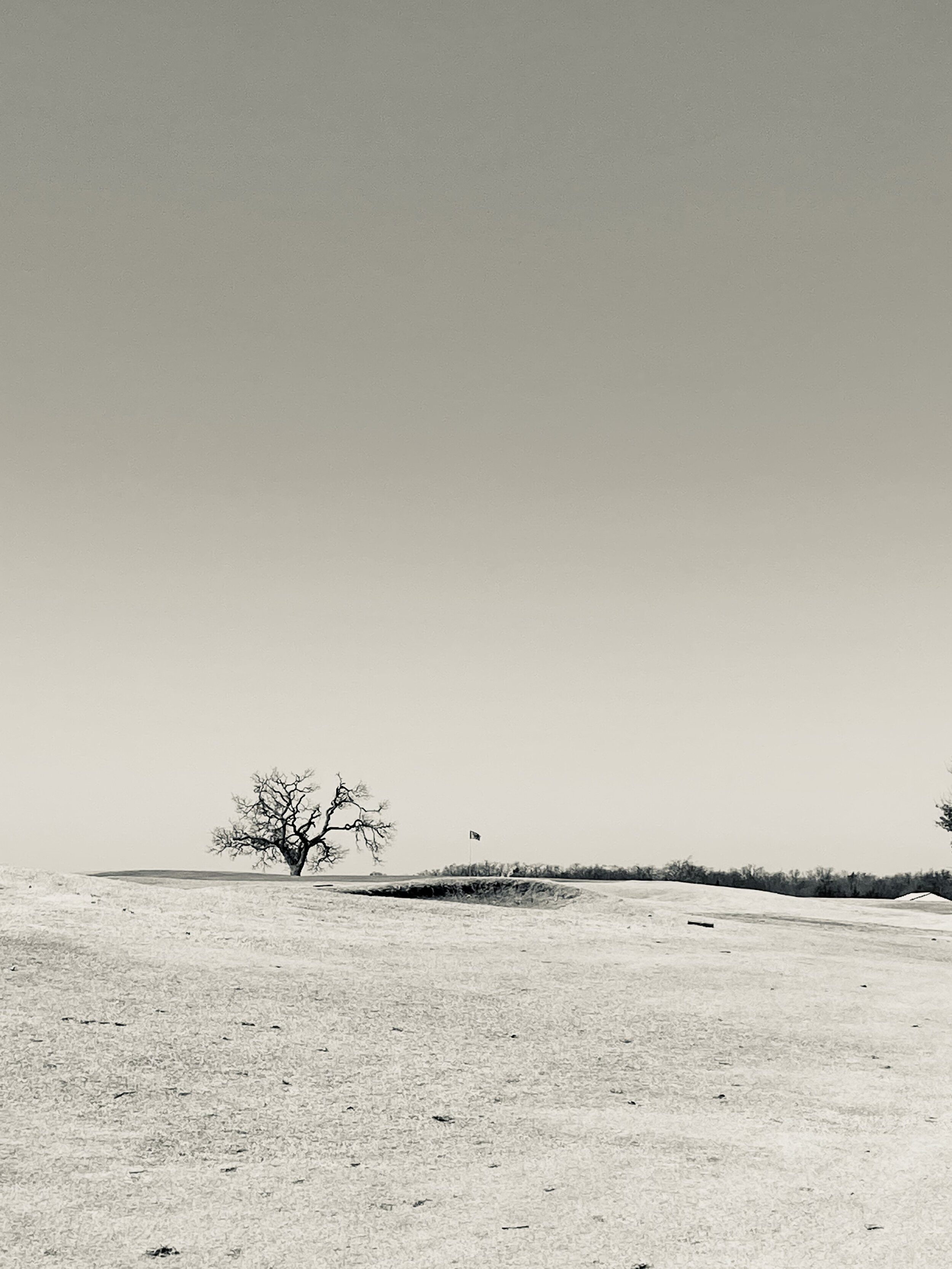Poor Boy’s Revenge
“From this valley they say you are leaving,
We shall miss your bright eyes and sweet smile.
For you take with you all of the sunshine,
That has brightened our pathway awhile.”
- Woody Guthrie, Red River Valley
Foreword by Barbara Sessions, Curator
Turner’s Lodge Pro Golf Museum at Falconhead Resort, Burneyville, OK
FOREWORD
The Oklahoma City Thunder’s victory in the NBA basketball finals “is for every Oklahoman who’s ever been underestimated,” read the headline over a guest column in the Oklahoman newspaper on June 23, 2025.
“Along with all overlooked states between the coasts, Oklahoma is the punchline until we’re the headline,” opined Laura Albritten, a writer from Oklahoma who now lives in Colorado.
Agreed, Laura, 100%! I’ve made a study of Waco and Opie Turner for the past 35 years and even created a museum in the Pro Shop to celebrate their significant importance to competitive golf in the United States.
The couple built a challenging course in little Burneyville, Oklahoma, and, counting earlier Pro Tour sponsorships in Ardmore, they put up the money for 19 of the richest and most entertaining professional golf events of the 1950s and 1960’s.
The great men and women pros of the era competed and golf history was made. Players and Tour officials sang the Turners’ praises. But through the decades, (coastal) golf writers tended to ignore the duo or diminish them. Too many have treated Turner’s Lodge as a punchline when it should have been a headline.
Now comes Jared Gallagher to give Mr. and Mrs. Turner the serious attention they have long deserved. Gallagher spent three years doing research then turned loose his exceptional writing talent on this deep dive into a history about which all players and fans can take pride.
The reddirtgolf.com creator has posted several other profiles of course builders, many of them oil millionaires like the Turners. Gallagher humanizes these Oklahoma giants by examining their entire life and motivation. No flyover hit and run piece this. It is the whole truth.
And for all the Oklahoma golfers who wished, just once, they could play a Pro Tour course, there’s only one non-private club to have been an official stop on both the LPGA and PGA Tours. That is the course the Turners built, now a golfing community, complete with hotel and restaurant, known as Falconhead Resort, at Exit 15 (Marietta) of Interstate 35, then 12 miles west on State Highway 32.
Credit: Fonville Studio, courtesy of Turner's Lodge Pro Golf Museum
This valley is known for many things.
Peanut fields and cattle farms. Humble ham sandwiches and empty promises of great riches veiled by the facade of flashing lights and ringing bells. And – most notably - the river that runs red, bisecting the Oklahoma standard from the Texas spectacle.
It was along this valley that a small band of the Wichita tribe ruled following a series of forced removals. From the confluence of the Washita and Red Rivers (now present-day Lake Texoma) to the Wichita Mountains, the Hueco people lived alongside other tribes and an increasing number of white settlers.
Hueco – or “Waco,” in the English language – means “of magic power.”
And on the northern flanks of the Red River Valley, the remnants of one spectacular magic saga remain. It’s a tale of great riches and glory tangled with tragedy and strife. And it has left a legacy that’s almost hard to believe.
Almost.
Drive through the unassuming rock and iron security gate at Falconhead Resort and Country Club in Burneyville, Oklahoma and you might expect that you’re entering one of Oklahoma’s spectacular WPA-era state parks. You’re greeted by a wide four-lane drive divided by a winding streetscape – the kind that were built in those idyllic Post-War, suburban neighborhoods the Cleaver family made so famous in the 50s. As you drive, you’re curious about the eclectic layout of this community – clumps of homes are juxtaposed among massive empty spaces of manicured lawn, wild grasses and native woodlands. If you stray from the main thoroughfare, you’ll get lost in a maze of side streets - many of which are named after Oklahoma towns: Sapulpa Drive, Pawhuska Place and Marietta Circle.
Curious as you may be, you decide its best to stay on Falconhead Drive until you reach a cluster of low-roofed, ranch-style buildings and a parking lot dotted with SUVs and pickups. From above, the centerpiece spreads its wings in every direction: north toward Oklahoma City, south toward Fort Worth, southwest toward Lubbock, northwest toward Denver, southeast toward Dallas and east toward the 18th green.
This structure was once the domain of a boisterous and incollapsible man.
Oklahoma’s only public-play Pro Tour course: Front gate of the 300-home golfing community of Falconhead Resort & Country Club, Burneyville, OK, on July 4, 2025. From 1958-1968, the property was known as Turner’s Lodge, where the golf course hosted a combined six official stops on the LPGA and PGA Tours. This is the only public course in Oklahoma and one of few in the nation to have been visited by both Tours. Eight PGA Sectional Championships also were played on the course (1958-1965), and an Oklahoma Open (1965). (Photo by Barbara W. Sessions)
Waco Turner was slightly built with hawklike vision. His father, a schoolteacher, relocated to Indian Territory from Mississippi in the 1890s. He moved his family to Burneyville, Oklahoma in 1891 to teach at the subscription school there.
Waco followed in his father’s footsteps, teaching at the Hox Bar School after attending higher education at Oklahoma A&M College and Southeastern State Normal School.
He was drafted into the United States Army in May of 1918. The world was suffocated by the first Great War, so Waco packed up and reported for duty at Fort Sam Houston in San Antonio. The United States needed pilots, but his captain needed a caddie. He would shine shoes and carry the captain’s clubs, who would let him hit a ball every so often. It was here – on the grounds of the Fort Sam Houston Golf Club and A.W. Tillinghast’s Brackenridge Park – that Waco first fell in love with the game. As the war winded down, the great influenza epidemic of 1918 raged. In December, while stationed at Fort Sill in Lawton, he was summoned home on account of the death of one of his brothers. When he made the roughly 110-mile trip home, he found his father and two other brothers gravely ill. This moment may have changed his life forever. Suddenly thrust into the breadwinner’s role for his family, he set his sights toward the new-and-bustling oil industry.
Within a year, Waco transformed himself into an enthusiastic wildcatter with a penchant for gab who bounced around working for various drilling outfits aside from his teaching duties in Overbrook, Oklahoma (seven miles south of Ardmore). Each day before and after classes, he would pass by crews prospecting for black gold. One morning as he ambled by, his nose tipped him off that this particular team had hit the big time. That sweet, yet pungent sulfuric fragrance in the air meant one thing: the students in Overbrook would be without a teacher on that day.
He spent the entire morning, afternoon and night racing around the territory on his horse, gobbling up drilling options. He did the same thing the next day. When he finally took a break, Waco Turner was a rich man.
This discovery near Overbrook sent Turner on a lifetime of chasing the proverbial black golden goose. One of his other early successes was at the Hewitt Oil Field in Wilson, Oklahoma, just east of the prolific “Poor Man’s Field” in Healdton. The two fields, which became indistinguishable throughout the years, were known as such because of the ease of drilling and producing – any “Poor Man” could do it.
By the early 20s, Turner had begun his reign of influence on south-central Oklahoma. He ran for Love County Treasurer and was a member of several fraternal orders and societies, including the Knights of Pythias, the American Legion and the Aahmes Grotto, an order of Masons. According to reports, the “desire of Aahmes Grotto is to bring together in the spirit of sympathy the entire Masonic body of southern Oklahoma to get acquainted and cultivate a friendly relation that ought to exist between all men who have taken the same solemn vows, and to build lasting friendships as a monument to endure forever.”
Scrolls of Aahmes Grotto included Robert A. Hefner (Ardmore mayor and attorney to oil and gas giants), Samuel Lloyd Noble (oilman and philanthropist) and Perry Duke Maxwell (banker and soon-to-be world-renowned golf course architect).
Throughout the 1920s, Waco Turner worked his way through the Poor Man’s Field and others like it. He was a risk-taker, gambling on each lease he could acquire. He had built a nice life for him and his new wife, Opie, but that came crashing down when the Depression hit.
When he was tipped off about prospects in East Texas, he couldn’t convince any bank in the area to loan him money. That could be where his distaste of banks – and bankers – was derived. Legend goes that one banker wouldn’t loan Turner $500 to get up and running in East Texas. Years later, after many successes, Turner returned to Ardmore and bought the bank just so he could fire the man who wouldn’t offer him the loan.
Within a matter of months, Waco and Opie were erecting their oil empire. They had just built a home at 1501 3rd Avenue SW in Ardmore, but by 1932 were splitting their time between Ardmore and the East Texas oil fields. When he was in town, he could be found at Dornick Hills Country Club, Perry Maxwell’s home course and first design, where he held a membership. He was an average golfer, shooting anywhere from 80-95, but was passionate about the game. In February of 1934, he was first elected to the board of directors of the club. Maxwell was unanimously reelected as the club’s secretary.
In early April of 1935, as Gene Sarazen hit the “shot heard ‘round the world” to win the Augusta National Invitation Tournament, Turner was camped out beside the No. 1 Munson, a deep test well he was drilling in Fox, Oklahoma, nearly within earshot of the original Poor Man’s Field. By the beginning of May, he had drilled to a depth of 3,400 feet. With no payoff yet, Waco claimed he would drill to 6,000 feet to find a payoff if he needed to. By October 1, Waco’s deep test had hit a standstill at 5,025 feet. He decided to rack his drilling tools and wait for new prospects to come. That same day, he took a private plane to Tulsa, then to Detroit where he attended the 1935 World Series between the Tigers and the Cubs.
Turner, always the avid sportsman and spurred on by his trip to the World Series, bought a baseball franchise in Ardmore as part of the Oklahoma State league in the spring of 1936.
By 1937, Waco had become the president at Dornick Hills. That was short-lived, however, as he soon moved his operations to Alice, Texas. For the next several years, Turner served off-and-on in various capacities of the board.
In 1944, clubs around the United States were shuttering. Several Perry Maxwell designs in Tulsa closed their doors during wartime, never to reopen. In August of that year, the Dornick Hills clubhouse suffered a devastating fire as it was being used by officers of the Ardmore Army Air Field. The clubhouse was a total loss, as was the furniture, equipment, golf clubs and other belongings housed in the locker rooms. Nineteen-year-old Bobby Lively perished in the early-morning blaze, his charred body found in the wreckage after the sun arose.
The fire devastated the club’s membership, but they were determined to build back. By the summer of 1945, with Turner back at the helm, the newly reorganized and rechartered club announced the construction of a new fireproof clubhouse at the cost of $55,000.
The new clubhouse opened in April of 1947 and the following summer the club hosted the inaugural Dornick Hills Invitational. Ardmore native Charlie Coe – fresh off victories at the Trans-Miss and Broadmoor – needed just 29 holes to dispatch Warren Higgins, 8 and 7, for the victory. Coe would become one of the most decorated amateur golfers in history, amassing two U.S. Amateur titles, four Trans-Miss titles, one Western Amateur title and setting records at The Masters for most cuts made as an amateur (15), top-25 finishes as an amateur (9), top-10 finishes as an amateur and most times as Low Amateur (6). He also holds the record for best finish as an amateur (solo 2nd in 1961) and the only person to earn Low Amateur honors in four different decades.
The new clubhouse and Dornick Hills opened in April of 1947.
It was after the war that Waco stumbled upon his third (and final) fortune. In the hills south of Velma, he smelled potential. Convincing Opie to move out of their home in Ardmore, they set up a tent and lived in the field for two years. By 1950, he had amassed a fortune that was estimated between $40-50 million (or 40 to 50 “barrels” as he called it) with assets including 80 producing wells, an 800-acre ranch in Burneyville, a fleet of 10 private automobiles, a yacht on Lake Murray and a house in Miami, Florida (also with a yacht).
It was also at this time that his sporting passions were catching up to him. Waco and Opie spent their winters in Miami, but traveled the United States to watch the world’s best tee it up. From Pinehurst to Palm Beach to Augusta, they traveled the professional golf circuit. It was here that he decided that he wanted to bring a professional golf tournament to Dornick Hills.
Waco got that opportunity in 1952, when – as club president once again – he persuaded PGA Tour officials with the largest potential winner’s pot of the season: $15,000. It wasn’t just that – he also bankrolled a $40,000 pro shop, hired legendary golf professional Dutch Harrison to manage the club and bought up every hotel room in Ardmore and at the Lake Murray Lodge for players and Tour officials. When Oklahoma Governor Johnston Murray was denied a room at the lodge for his summer vacation, Waco offered up his yacht – as long as the Murrays wore only new, white tennis shoes on board.
First-Tee Sight - Golfer teeing off on number one at Ardmore's Dornick Hills has this view of new $40,000 pro shop which Waco Turners donated to club. All furniture in pro shop is made of Philippine mahogany, was built in Ardmore. Date Created: 1952-07-21 | Courtesy of Fort Worth Star-Telegram Collection, University of Texas, Arlington
Assistant Pro Fred Knight stands by "Lazy Susan" putter rack, feature of the new $40,000 pro shop which Millonaire Waco Turner built at Dornick Hills Country Club, Ardmore, Oklahoma. Date Created: 1952-07-21 | Courtesy of Fort Worth Star-Telegram Collection, University of Texas, Arlington
In all, Waco spent more than $120,000 out of his own pocket to get the club and Ardmore ready for the world’s greatest golfers. The first Ardmore Open was won by Dave Douglas, a lanky Delaware man who finished the tournament at -1 and took home the $2,400 first prize. Dutch Harrison placed second and Lloyd Mangrum, third. The low amateur for the event was Oklahoma A&M standout George Bigham, who finished in 11th place – tied with George Fazio.
While the prize money topped the Tour’s list for 1952, it was dwarfed by Waco and Opie’s “pay-for-play” system. Handing out cash bonuses for birdies, eagles, low rounds of the day and so on, they doled out nearly $24,000 to the field. Douglas’ $2,400 was tops on the Tour, but Opie threw in an additional $3,000 for winning the event. Thus began an under-the-table tradition that had pros clamoring to travel to Ardmore, Oklahoma in the heat of the summer. In a season recap, Horton Smith claimed that the ’52 Ardmore Open was one of the three most talked about tournaments of the year.
While the ’52 event was considered by most a smashing success, the club’s benefactor, Perry Maxwell, wasn’t able to experience it. Bedridden by cancer, the world renowned golf course architect would pass away in his Tulsa home in November of that year.
The 1953 tournament was scheduled to be a month earlier, in May. In an effort to grow the event, Waco invited Bob Hope, Phil Harris and Bing Crosby as celebrities. They also announced an increase in both prize money and bonus money. They even offered $100 to the unlucky competitor who records the highest score on the Cliff Hole. Had they offered that in the inaugural event, Bill Jelliffe would’ve taken the prize – he took 19 strokes to complete the hole.
In fact, the bonus money in ’53 dwarfed the year prior. The rundown was as follows:
Waco and Opie loved to up the ante. Halfway through the tournament, they announced that they were increasing the prize money by $5,000. Earl Stewart, Jr. won the tournament, cashing a check for $6,900. In all, Turner doled out nearly $15,000 in bonuses.
The third annual Ardmore Open brought even more prize money, as Julius Boros took top honors and was presented a check for $7,200 - $100 for every hole of competition.
The spring golf fest was such a success that the Turners decided to host a ladies professional event in the fall. The first event featured all the top women, including Betsy Rawls, Patty Berg and Babe Zaharias. The Turner’s gave Babe a horse, but Berg took the top prize of almost $2,000.
Babe Zaharias Rides ‘Superman’: At the close of the 1954 Ardmore Open, the sponsors, Waco and Opie Turner, presented a gift palomino to LPGA President Mildred “Babe” Zaharias for bringing the LPGA to visit Oklahoma for the first time. It was the richest event ever played by the LPGA Tour, which started in 1950. Zaharias stayed overnight that week at Turner’s Lodge, where guest cabins had just been finished for the future Turner’s Lodge course. The great Olympian and golfer, voted by AP as the most outstanding female athlete of the 20th century, kept the horse there and was a frequent visitor to Burneyville until her untimely death, of cancer, in 1956. (Fonville Studio photo, courtesy of Turner’s Lodge Pro Golf Museum)
Waco ran his tournaments the way he ran his business – with complete autonomy. This ultimately rubbed the Dornick Hills board of directors the wrong way. When they approached him about giving up some of his control of the event, he felt betrayed. After all, it was he who had brought the PGA and the LPGA to Ardmore, Oklahoma in the first place. According to Tulsa World sportswriter Tom Lobaugh, Turner was “piqued by criticism and lack of cooperation” from the rest of the board of directors. In a brash decision, he relinquished his role as club president and gave up his membership, promising to build his own golf course. He told the membership at Dornick Hills when he brought the Tour’s best back to Oklahoma, they would never step foot in Ardmore again.
Thus began Waco’s quest to build his own paradise. On the ranch his father once owned near Burneyville, he planned a million-dollar dream course, complete with lakes, lodges, guest cabins, an airstrip, a swimming pool and more. Using his own imagination to design the course and his oilfield roughnecks to construct it, he promised to pattern the holes after some of the most famous in the world. Drawing from his experiences playing Augusta National, Pebble Beach, Pine Valley and Oakmont, the course was planned to be a par 72 just over 7,000 yards with prominent water and doglegs as defense on the hilly layout.
On a visit to the course during construction, Dutch Harrison claimed it would be one of the toughest courses in the nation. Before the track was completed, Waco announced that it would be ready to host a PGA event by 1958, and he planned to make it a $100,000 event.
By the end of 1957, the price tag on the Turner Lodge approached $2 million. If the duo was worried about hemorrhaging money on the project, they hid it well. They hosted several events at the lodge as the golf course was maturing, and announced that the LPGA would return to Oklahoma in 1958 for the inaugural Opie Turner Open.
LPGA Tour Officially Opens Turner’s Lodge: Mickey Wright, still considered by golf historians as the greatest female golfer of all time, is congratulated by her hostess after winning the Opie Turner Open in Burneyville, OK, on September 3, 1958. What other golf course in history has opened with a Pro Tour stop? (Photo in the Turner’s Lodge Pro Golf Museum, courtesy of Oklahoma Historical Society)
Mickey Wright won that Labor Day tournament, and the legend of “Golf the Turner Way” grew evermore. It wasn’t because of the reverence or respect the Turners had for the traditions of professional golf.
No.
Instead, they took the traditional golf tournament and flipped it on its head. Like a precursor to LIV’s motto of “Golf, But Louder,” the Turners treated their golf tournaments like carnivals. Trick ropers, comedians, live music and more dotted the fairways of the Turners’ tournaments. It would be nothing to hear shotgun blasts in the distance or feel the whir of a crop-duster crop-dusting your approach shot, or see Waco barrel a brand-new Cadillac across a green. The free-flowing cash prizes, nightly poker games in the dormitory-style cabins and fishing for monster mudcats on the banks of Lake Turner were just icing on the cake.
Cadillacs to Spare: Chris Gers, future club pro at Turner’s Lodge, Duffy Martin, owner of Brookside Golf and later to build Guthrie’s Cedar Valley and Cimarron National courses, and his brother Jack Martin load their clubs in 1958 into the trunk of a 1955 Cadillac Waco Turner gave to Duffy Martin. “My car broke down when I was at Turner’s Lodge. Waco Turner had lots of Cadillacs. He pointed to one that was parked in the weeds. He said the car needs a battery and if I got the car running, I could have it. I hitched a ride to Marietta to buy a battery and left Turner’s Lodge in style,” Martin said. For his outstanding career as a player and golf course builder, Martin will be inducted posthumously in the Oklahoma Golf Hall of Fame in 2025. (George Tapscott photo inTurner’s Lodge Pro Golf Museum, courtesy of Oklahoma Historical Society)
When Waco convinced the PGA Tour to return, it did so with a caveat. The event was to be held the same week as the Tournament of Champions in Las Vegas. That meant that the Tour’s top members would never step foot on Turner’s golf course. But that was just fine with him. He didn’t host the event to rub shoulders with Byron Nelson or Ben Hogan – he already knew them. He did it for his pure, unadulterated love of the game. Thus began the unofficial moniker of the “Poor Boy Open.”
The times were high for the Turners, but friends and acquaintances grew concerned for the couple – both for their finances and their well-being. Waco, ever-wary of the banking and financial system as a whole, never invested his wealth. The tax rate for the uber-wealthy was astronomical – up to 85%. It is estimated that he spent close to $30 million of his own money on bankrolling his tournaments.
Silver Service at the 1959 Opie Turner Open: Waco and Opie Turner were assisted by Miss America 1958 Mary Ann Mobley (right) in presenting the low amateur prize to Jean Ashley of Kansas, in the 1959 Opie Turner Open at Turner’s Lodge. Ashley had to go two extra holes with Oklahoman Susie Maxwell (Berning), age 18, for the win. Maxwell-Berning turned pro in 1964. She went on to win the U.S. Women’s Open three times and was a multi-winner on the LPGA Tour before being inducted into the World Golf Hall of Fame in 2022, with Tiger Woods. (Fonville Studio photo, courtesy of Turner’s Lodge Pro Golf Museum)
The other issue was his penchant for the bottle. Always up early, Waco insisted on a mid-afternoon siesta, one that usually included a “jug of bourbon.” Opie was also drowning in the drink. One evening in late August 1962, Waco was in the golf shop attending to end-of-day business. He instructed an employee to walk a note to his house, letting Opie know he’d be home soon. The employee walked in and found a drunk Opie stumbling about the home, bleeding from two holes in her side. They were .38-caliber gunshot wounds, and they were later ruled to be self-inflicted. Opie was rushed to the hospital, and for a few days it seemed she would recover. But a bout with pneumonia took hold and never let go. Opie died at the age of 61.
Waco never quite recovered from Opie’s passing. The tournament lasted a few more years, but when the PGA threatened to make the event’s status unofficial, he reportedly wrote back, “If my tournament is so insignificant, then it should be called off.” The 1964 Waco Turner Open was the last to be played. That year, an affable young Black man from Jackson, Mississippi was in the field. His first official year on the PGA Tour (even though Blacks were only allowed to play in half of the full field events), Pete Brown showed up to Burneyville with a smile and his friend, Charlie Sifford, in tow. Brown found favor with Turner and his track, and led by one heading to the 72nd hole, a daunting and dead straight 232-yard uphill par three. Adrenaline surging, Brown blasted his tee shot beyond the green, the ball resting in a loose pile of rocks. If nerves were getting to him, he didn’t show it, as his chip off the rocks came to rest two and a half feet from the hole. He would sink the putt, earning more than $3,000 and shattering barriers as the first Black man to win an official PGA Tour sanctioned event.
Historic First Win on Tour by a Black Golfer: Waco Turner presents the winner’s check to Pete Brown, the first African-American member of the PGA to win an official PGA Tour event. Falconhead Resort and Turner’s Lodge Pro Golf Museum hosted the late Pete Brown’s family, golf dignitaries, historians and the public to the 60th anniversary celebration of that historic win on May 1, 2024. (Ron Cross photo courtesy of Turner’s Lodge Pro Golf Museum)
The victory earned Brown an invitation to the following week’s Colonial Invitational in Fort Worth, where he would become the first Black man on the tournament’s history to compete. Brown was admittedly “scared to death,” and Waco would ease his nerves by escorting the golfer on the grounds with a pair of pistols on his hips. Sixty days following Brown’s victory in Burneyville, President Lyndon Johnson signed into law the Civil Rights Act of 1964, the most sweeping civil rights legislation since Reconstruction, 101 years earlier. Brown wouldn’t win again until 1970 at the Andy Williams-San Diego Open. It would be his last victory on Tour.
Many oilmen have created generational legacies in the game of golf in Oklahoma. Waite Phillips and Southern Hills. His brother Frank and Hillcrest. Turner sold his interest in Turner Lodge in the late 60s and never revisited the game. He would die in 1971 from a longstanding illness. That same year Robert Trent Jones redesigned the course and it was renamed Falconhead Resort Country Club. The only thing of significance that remains in the oilman’s name is Turner High School, which is located about 900 yards off the golf course property. Of the 11 state championships in the school’s history, seven have come from golf. The Lady Falcon’s most recently finished 2nd in the 2025 Class 2A state championship, ending a run of four consecutive state titles.
Historic 18th Green at Turner’s Lodge: Pete Brown sank a must-make one-putt for par to secure a one stroke victory over Dan Sikes in the 1964 Waco Turner Open and make history as the first African-American member of the PGA Tour to win an official event. The original hole played as an uphill, 232-yard par 3. In this 1971 photo architect Robert Trent Jones has added the island tee to extend the hole to a 287-yard par 4. (Photo courtesy of Turner’s Lodge Pro Golf Museum)
Impeccable Bent Grass Greens: Falconhead Course Superintendent Edward McKinney’s bent grass greens rival the best in Oklahoma. Seen is the #10 green and in the background, the #15 green on July 4, 2025. (Photo by Barbara W. Sessions)
Today, Turner's Lodge, the Turner residence and other original cabins, and the Pro Tour course that the generous couple built still stand, full of life and tribute to the founders and to the hundreds of pro players who walked these fairways. The Turner's Lodge Pro Golf Museum, open daily in the pro shop at Falconhead Resort, tells the stories of the 19 professional tournaments underwritten by Waco and Opie Turner at Dornick Hills (1952-1954) and Turner's Lodge (1958-1965). Those include three visits by the LPGA Tour and seven PGA Tour stops, as well as eight consecutive South Central PGA Championships and an Oklahoma Open. Thanks to the Turners, Falconhead Resort is the only public-play course in Oklahoma and one of a handful in the nation, to have hosted official events of both the men's and women's golf tours.
In 2024 Falconhead held a national celebration on the 60th anniversary of Pete Brown's historic victory as the first African American to win on the PGA Tour (the 1964 Waco Turner Open). Noted golf authors, historians, friends and former players in the Pete Brown era, spoke from the 18th green and then held a historic replaying of the 18th hole, using Waco Turner's golf clubs.
Writers and golf leaders of the 1960s recognized the tremendous boost to professional golf brought by the Turners' imagination, wit, generosity, and quality presentations. Bud Shrake, golf columnist, wrote in Sports Illustrated in 1964, "This course (Turner's Lodge) is good enough, tough enough, and interesting enough to be a championship one." Thomas Crane was PGA Executive from 1944-1964, long enough to have witnessed all the events the Turners put on in Ardmore and Burnevyille. Crane said, while attending the 1963 Waco Turner Open, "I personally feel that Waco Turner has done more for professional golf than any man I've ever known." Marilynn Smith, an LPGA co-founder, was president of the LPGA when that Tour held its annual meetings at the Opie Turner Open in 1958 and 1959. She later wrote a book about the Tour's first 10 years (1950-1959) saying of the Turners, who sponsored three LPGA tournaments in that decade, all paying top prize money and bonuses, "We couldn't have done it without them."
Turner was a living symbol of maverick generosity: a ruggedly independent soul who returned countless dollars and opportunities to the “also-rans” of the pro golf world because he believed in making sure everyone got a shot. Whether he was blasting turtles with his .410 shotgun, rolling out potato-sack bonuses in cash or cheekily co-opting a Cadillac as a 19th-hole shuttle, his life was a grand gesture against the polished pretenses of the golfing elite.
Turner didn’t chase headlines or alliances. His conviction was equal parts savvy and showmanship, played out on a stage populated by ducks, bullfrogs and oilfield roughnecks -Turner’s own crowd. And in doing so, he made room for the underdogs and the overlooked: for them, and perhaps more importantly, for all of us who’ve ever felt like the “Poor Boy.”
“So come sit by my side if you love me.
Do not hasten to bid me adieu.
Just remember the Red River Valley
And the cowboy that has loved you so true.”
- Woody Guthrie, Red River Valley
The Turner Bonus Plan – Cash for birdies, eagles, chip-ins, and other exceptional scores, was a generous innovation of the couple (seated here behind envelopes of cash). The Turners paid out almost as much in bonuses to all players as in prize money to the top finishers. (Fonville Studio photo, courtesy of Turner’s Lodge Pro Golf Museum)
Most Competitive Waco Turner Open: Johnny Pott had to shoot a tournament record 276 (16 under par) to hold off rookie Jack Nicklaus (right) and others in the 1962 Waco Turner Open in Burneyville, OK. (Photo courtesy of Turner’s Lodge Pro Golf Museum)
A Turner Favorite, Bo Wininger, in 1962: The Commerce native and Oklahoma State University golfer won seven times on the PGA Tour in the 1950s and1960s. He finished in the money in the Waco Turner Opens and twice won the South Central PGA Sectional Championship at Turner’s Lodge. Wininger was inducted in the Oklahoma Golf Hall of Fame in 2023. (Fonville Studio photo, courtesy of Turner’s Lodge Pro Golf Museum)
1964 Waco Turner Open: Dale Douglass, born in Wewoka, was a 28-year-old assistant pro in Denver when he posted a one-under par 36-35 - 71 in the opening round of the 1964 Waco Turner Open at Turner’s Lodge in Burneyville. Douglass compiled a record of three wins on the PGA Tour and 11 wins on the Senior (Champions) Tour. (Photo in Turner’s Lodge Pro Golf Museum, courtesy of Oklahoma Historical Society)
Turner’s Lodge Pro Golf Museum in the Pro Shop at Falconhead Resort, Burneyville, OK: The first official win by a Black golfer happened at Turner’s Lodge in the 1964 Waco Turner Open. The museum sponsored the Pete Brown Diamond Jubilee in 2024 on the 60th anniversary of his historic win. (Display in the Turner’s Lodge Pro Golf Museum)
Opie’s Rising Stars Features Susie Maxwell Berning and Betsy Rawls: The two LPGA stars finished their careers in the World Golf Hall of Fame. Both won three U.S. Women’s Opens. Their paths crossed for 10 years in LPGA Tour stops in Oklahoma. They competed first in the 1959 Opie Turner Open, when Berning was an Oklahoma City amateur and Rawls a young LPGA winner, including the Opie. By 1964 Berning had turned pro and she beat both Rawls and Mickey Wright for her first LPGA Tour win, in 1965, in Oklahoma, at the Muskogee Civitan Open. (Display in the Turner’s Lodge Pro Golf Museum)
POSTSCRIPT
In all, Waco and Opie Turner hosted 19 professional events in their lifetimes.
Ardmore Open (PGA event at Dornick Hills Country Club)
1952 –Dave Douglas
1953 – Earl Stewart
1954 – Julius Boros
Ardmore Open (LPGA event at Dornick Hills Country Club)
1954 – Patty Berg
Opie Turner Open (LPGA event at Turner’s Lodge)
1958 – Mickey Wright
1959 – Betsy Rawls
Waco Turner Open (PGA event at Turner’s Lodge)
1961 – Butch Baird
1962 – Johnny Pott
1963 – Gary Brewer, Jr.
1964 – Pete Brown
Oklahoma Open
1965 – Buster Cupit
South Central PGA Sectional Championship
1958 – Ted Gwin
1959 – Buster Cupit
1960 – Buster Cupit
1961 – Pete Fleming
1962 – Francis “Bo” Wininger
1963 – Francis “Bo” Wininger
1964 – Chris Gers
1965 – Ted Gwin
In all, the Turners handed out $343,638 in prize money.
The Walkability Index
I dropped flat on the 13th tee box at Karsten Creek Golf Club, the sun beating down on my face. My water bottle dried up somewhere after the turn and my mouth was full of cotton. Dizzy but conscious, I crawled over to a patch of three-inch rough shaded by the thick grove of oaks.
This was it, I thought. I’m going to die right here – 21 years old… alone… on this damn tee box… on this damn course I had no business playing in the first place. My last thoughts weren’t about my family. They were spent recounting how in the hell I got here…
As the club’s transportation specialist (cart barn boy), I was lucky enough to enjoy playing privileges. And for some reason on this late July afternoon, yours truly decided to walk the course alone. Teeing off just after lunch, the front nine went as planned. I took full advantage of the water coolers strategically tucked away along the cart paths.
But somewhere around the turn (a quarter of a mile walk up a hill and around the corner at Karsten), I started to feel it. I was in the best shape of my life, but no amount of hydration could save me on this day. Instead of calling it after nine, I stupidly pushed on. Around the 11th and 12th holes along the creek, the humidity is oppressive. A hundred yards and 20 vertical feet from the 12th green to the 13th tee was the straw that broke my back.
Maybe if I survive here long enough, a member might stumble upon me. Maybe it’ll be one of the guys or gals on the Oklahoma State golf team, who – after laughing at this pathetic sight – can call up to the clubhouse and send a cart (or an ambulance) for me.
Thirty minutes and no passersby later, I’d recovered enough to stand on my own two feet. I finished the 13th, then took the maintenance shortcut straight back to the clubhouse. Karsten may have won that battle, but I survived to see another day.
Since that time, I’ve been wary of walking a golf course. Not that I don’t do it – but I’m often suspicious of those psychopaths who exclusively shun carts. They probably wear socks to bed, too. How am I supposed to enjoy a round if I’m barely surviving it?
Mark Twain once famously claimed, “golf is a good walk spoiled.” Posthumously, that is, until the quippy line was discovered to have been attributed to no less than seven others. No matter the origin of the quote, its spirit rings true in this author’s bones.
In a game full of choices (shorts or pants, send it or lay up, Caesar wrap or hotdog at the turn), the first – and possibly most important – choice of the day is encountered from the onset.
For me, a husky fellow who is riddled with creaky knees from years of church league basketball, that answer is easier than most – if a cart is available, you’ll probably find me in it. But there are many “purists” out there who would admonish me for such a decision.
“You’re lazy,” they may chide, never knowing the hurtful impact of their slanderous statements.
(Laziness is subjective. Energy levels, however, are objective according to the laws of quantum mechanics, and I choose to conserve mine for the far more important decision of never laying up.)
And while these pretentious folks sashay about the golf course on their fleet feet, I choose to take the high road. Because at the end of the day, it’s a choice. MY choice. Whether to survive the walk, or to thrive in my game.
But HOW do you choose? Some may want to walk, but are afraid they may regret the choice somewhere deep in the round. After years of struggling with this myself, I developed a proprietary algorithm that helps me answer that question before I ever get off the couch.
Enter: The Walkability Index
I wanted to assign an objective walkability score to any given golf course. I say objective because there are groups out there (looking at you, Walking Golfers Society) who use subjective ratings like “Course is easy to walk” and “Course is essentially unwalkable.” Just like some might think climbing to the top of Mt. Everest is manageable, it’s an impossible task for someone of my fitness level. With an objective rating on a scale of 100, one can determine their own threshold for walking a golf course. If there’s a track over 70/100 on the Walkability Index, I’m seriously considering the riding option.
The five factors by which a Walkability Index is determined are:
Total Length Walked (the distance measured from the tips of the first tee to the 18th green assessed by natural walking paths and middle of the fairway – not necessarily cart paths)
Total Elevation Gained + Lost (the sum of elevation gained walking up hills and lost walking down hills)
Average Slope
Max Uphill Slope
Max Downhill Slope
The grading system is simple - each factor is graded on a 1-10 point scale. The sum is multiplied by 2 and that total out of 100 is the Walkability Index for that course. Here are a few examples:
Lake Hefner (South), Oklahoma City, OK
6405 yards on the scorecard
Total Length Walked: 4.22 mi
Total Elevation Gained + Lost: 521 feet
Average Slope: 1.9%
Max Uphill Slope: 9.3%
Max Downhill Slope: 9.1%
With these factors plugged into the algorithm, Lake Hefner South’s Walkability Index is 40/100. This is a straightforward municipal golf course that could be walked by most any day of the week.
The Patriot Golf Club, Owasso, OK
7158 yards on the scorecard
Total Length Walked: 6.26 mi
Total Elevation Gained + Lost: 1,543 feet
Average Slope: 3.7%
Max Uphill Slope: 24.2%
Max Downhill Slope: 24.1%
The algorithm gives The Patriot a Walkability Index of 98/100. It is technically walkable, but do you want to?
Again – not scientific and there are other factors at hand that aren’t taken into account, like soil conditions, temperature and humidity, etc. But I think this is a simple way to determine what is feasibly and enjoyably walkable for YOU. I’ll leave you with a few others.
Karsten Creek Golf Club
7417 yards on the scorecard
Total Length Walked: 5.47mi
Total Elevation Gained + Lost: 1,416 feet
Average Slope: 4.2%
Max Uphill Slope: 25.4%
Max Downhill Slope: 19.1%
Walkability Index = 92/100
Southern Hills Country Club
7184 yards on the scorecard
Total Length Walked: 4.74 mi
Total Elevation Gained + Lost: 900 feet
Average Slope: 3.2%
Max Uphill Slope: 18.0%
Max Downhill Slope: 20.7%
Walkability Index = 70/100
Pinnell’s Playground
It’s a warm, clear early Autumn evening. Matt Pinnell is working his way through a throng of guests during a luau-themed celebration in his honor on Monkey Island.
If you were dropped into the middle of this scene, it might be a shock to your senses. This isn’t an island (it’s a peninsula), there are no monkeys (at least none that I saw) and we’re not on Maui. That doesn’t matter. No one here on this night would prefer the sandy beaches of Hawaii over this time and this place – especially Pinnell.
He’s in his element. Donning a brightly colored shirt and a lei around his neck, Pinnell works the crowd masterfully. There aren’t many in the room he doesn’t know by name, and by the end of the night he’ll work that number down to zero.
It’s a lively group here this evening. We’re at The Anchor Sports Bar at Shangri-La Resort and Golf Club. I’ve been up here once or twice before as a kid, but this is NOT what I remember. What was once a location considered an afterthought by many Oklahomans, Checotah native Eddy Gibbs – a self-proclaimed fence builder – has invested millions into revitalizing this resort over the last 10 years (I should’ve gotten into the fence business).
Inside by the bar, many attendees are catching an early-season football game on one of the many vibrant televisions. Out on the patio, the sun is setting and the buffet line is growing. Gibbs calls this part of the resort “The Activity Park.” There’s an arcade, golf simulators, basketball courts, cornhole pits and even a wiffleball field designed to look like a miniature Fenway Park.
Tonight, it’s a party. Tomorrow, we hit the golf course.
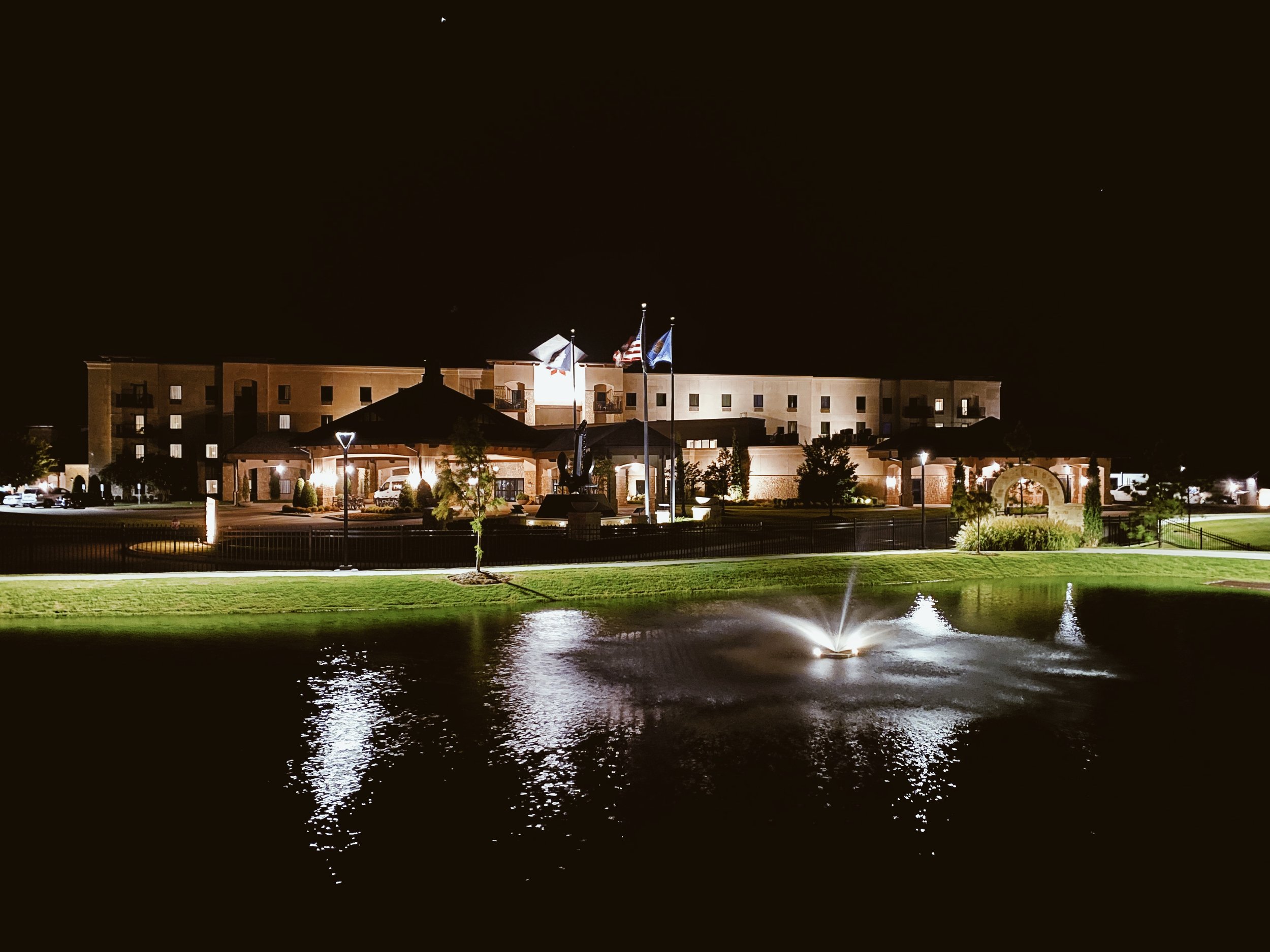
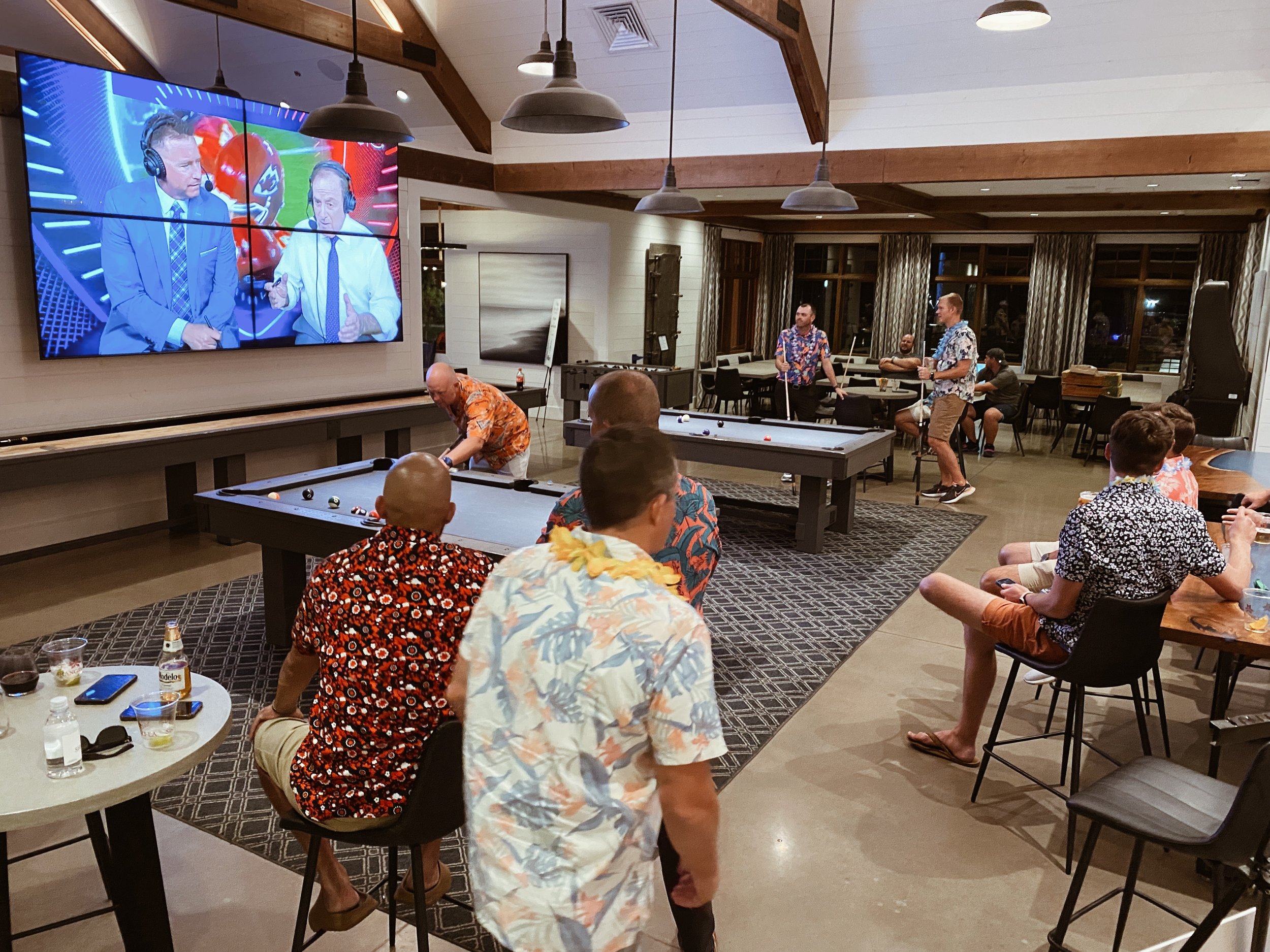
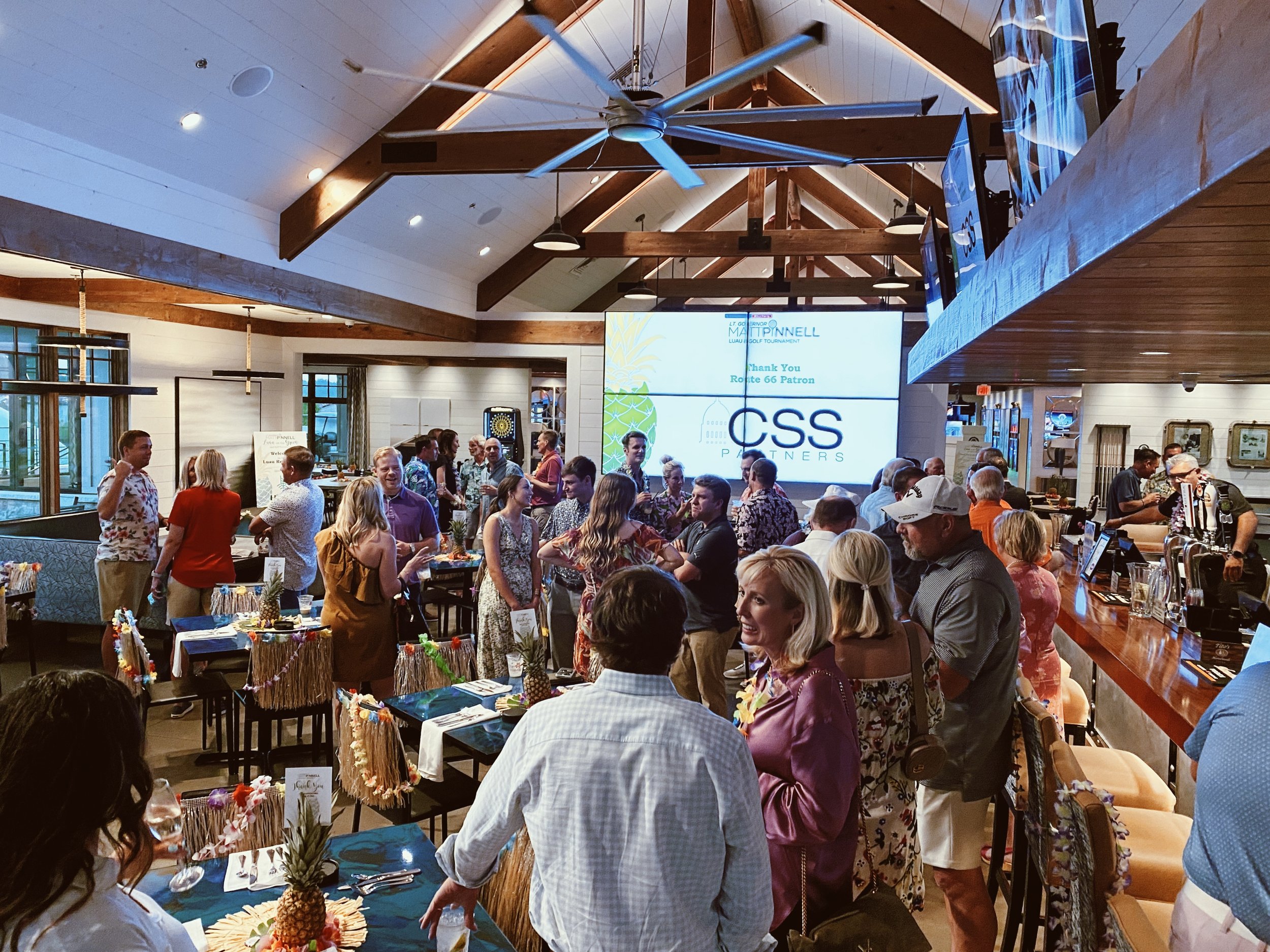
It’s a crisp morning on the island. The sun hasn’t broken the horizon when the first golfers start to trickle into Shangri-La’s grand clubhouse. There’s a pan of breakfast burritos and a carafe of steaming hot coffee. One-by-one, participants sign in, grab a gift bag, load up on breakfast and head out to the range. It’ll be a full day of golf on a historic track along the banks of Grand Lake, and Pinnell can’t stop grinning from ear to ear.
It's not because of his swing; he carries a 12-15 handicap and doesn’t get to play as much as he’d like (“I’ve got four kids at home, so when I can play, it’s usually when I’m traveling somewhere,” he says). It’s not even about the prime conditions this morning has in store. Pinnell’s smile is a reaction to a driving range full of like-minded individuals who have come together to support and show appreciation for one of Oklahoma’s most ambitious revitalization projects.

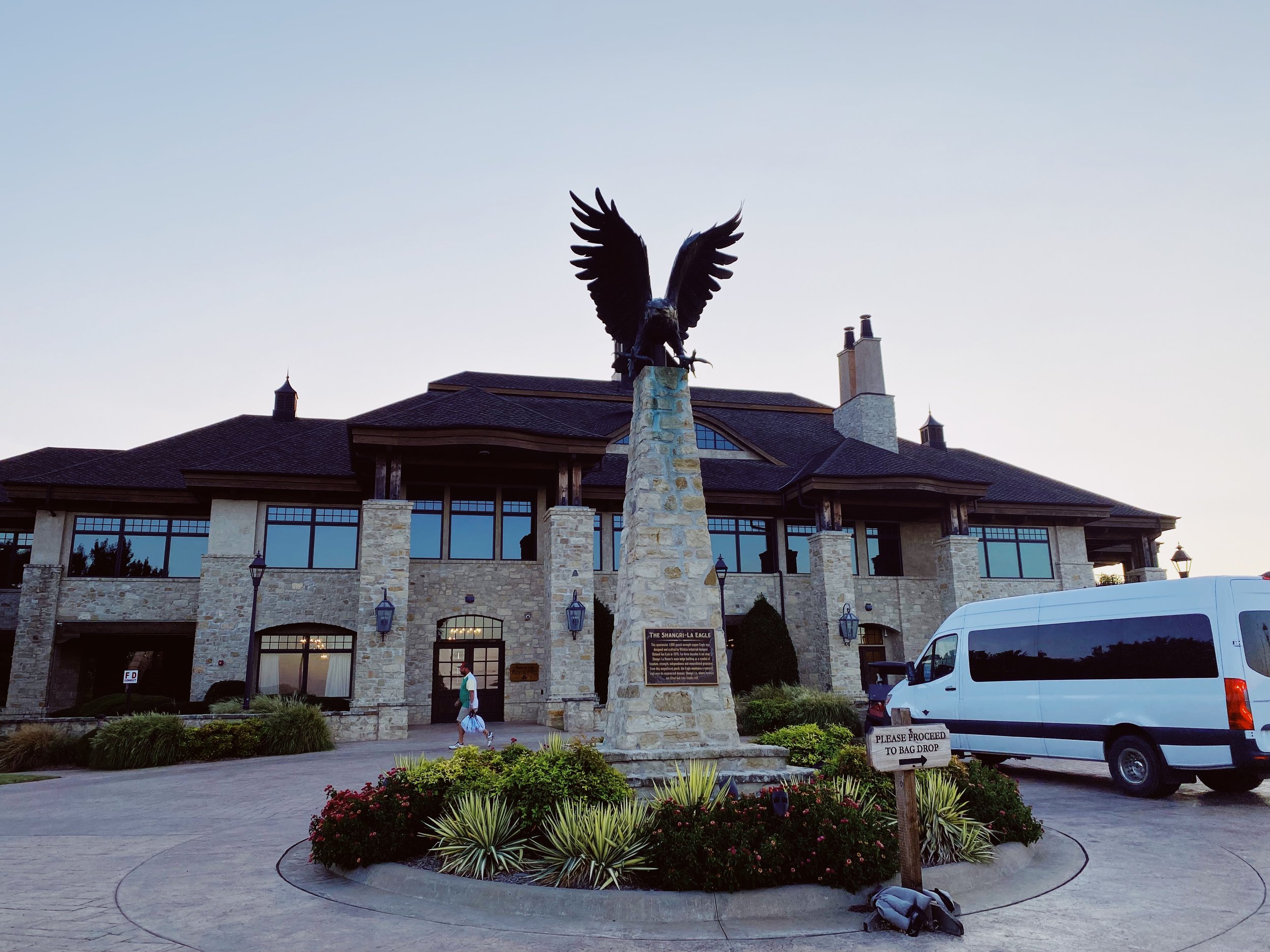
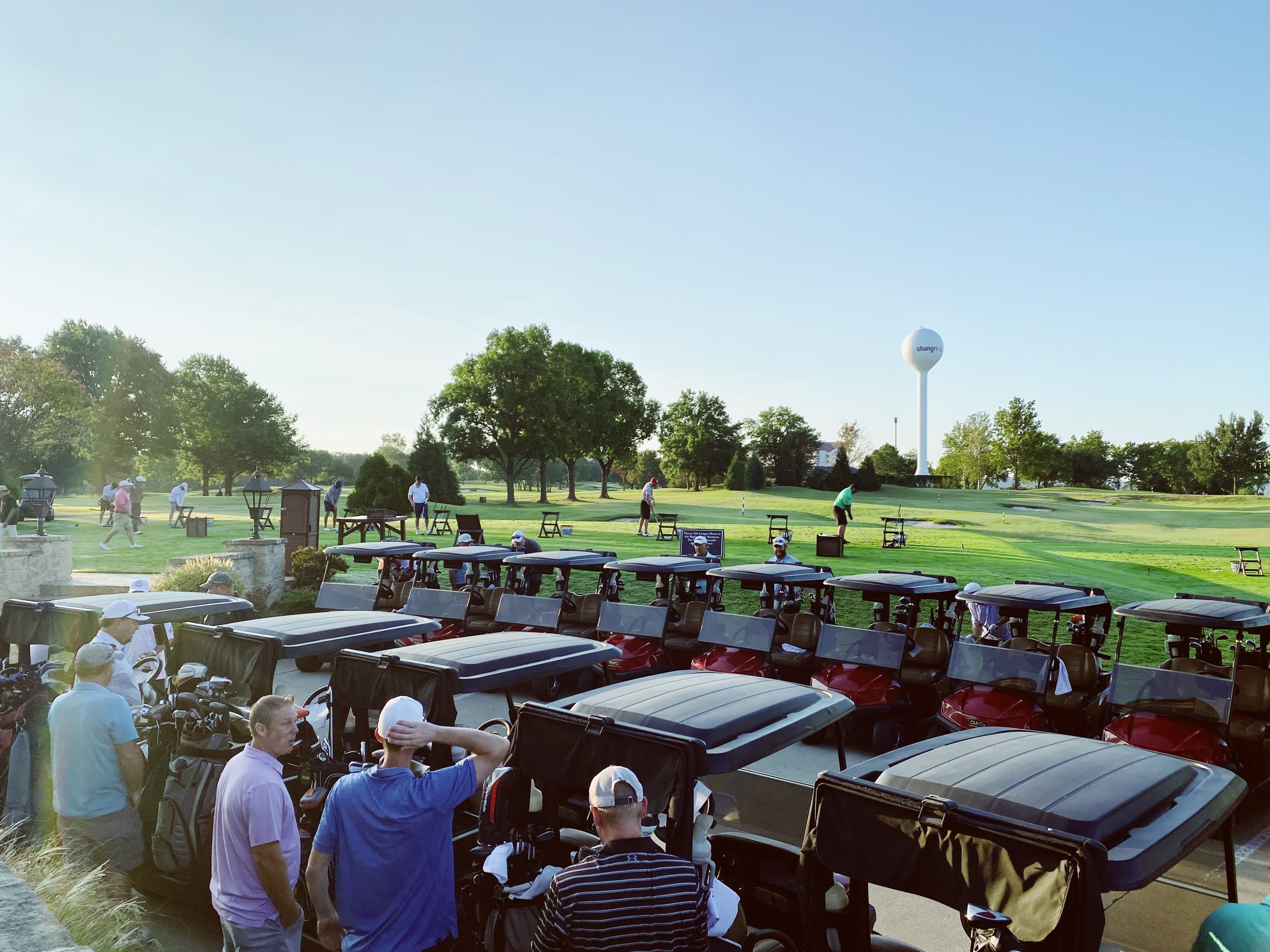
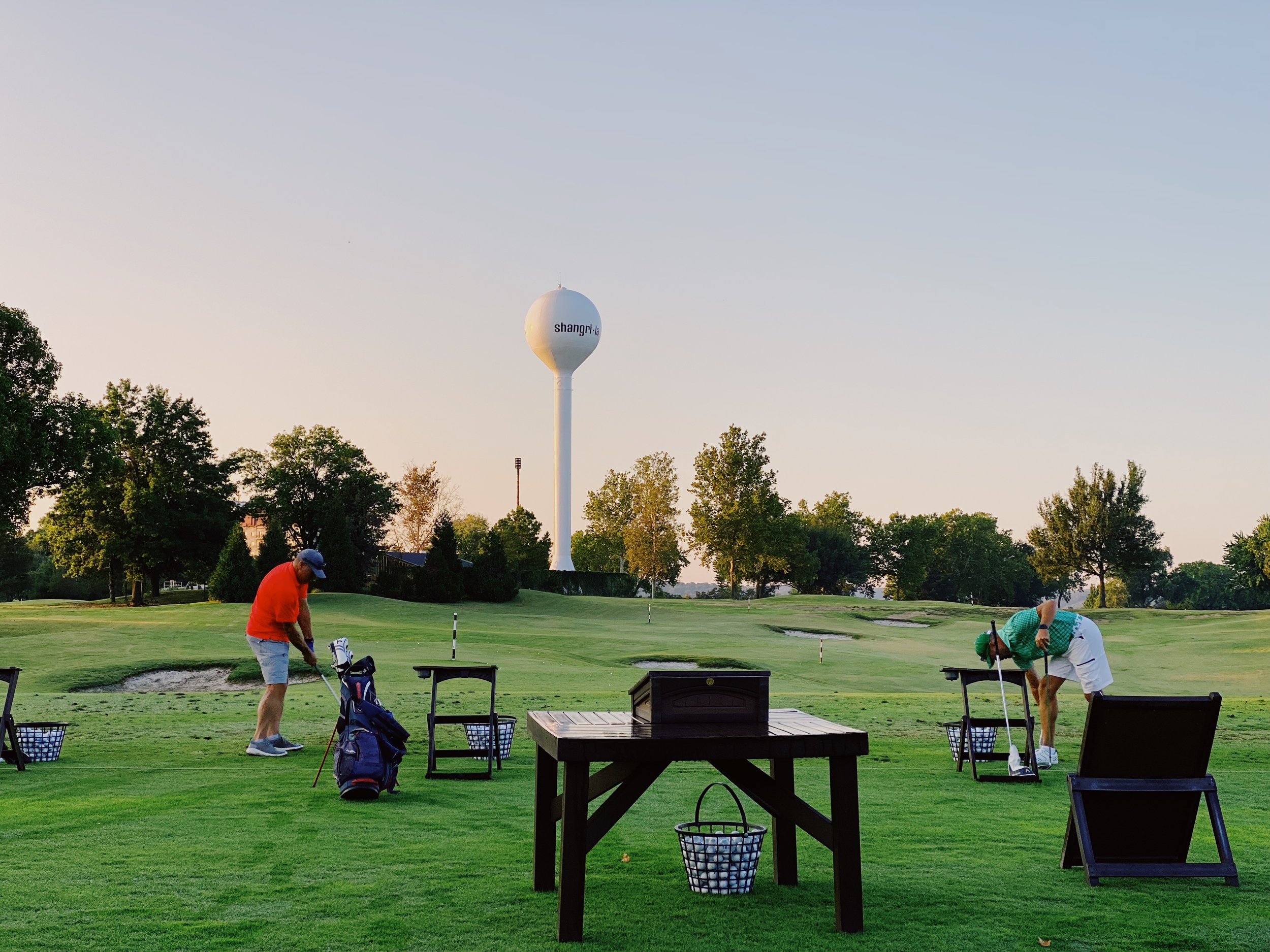
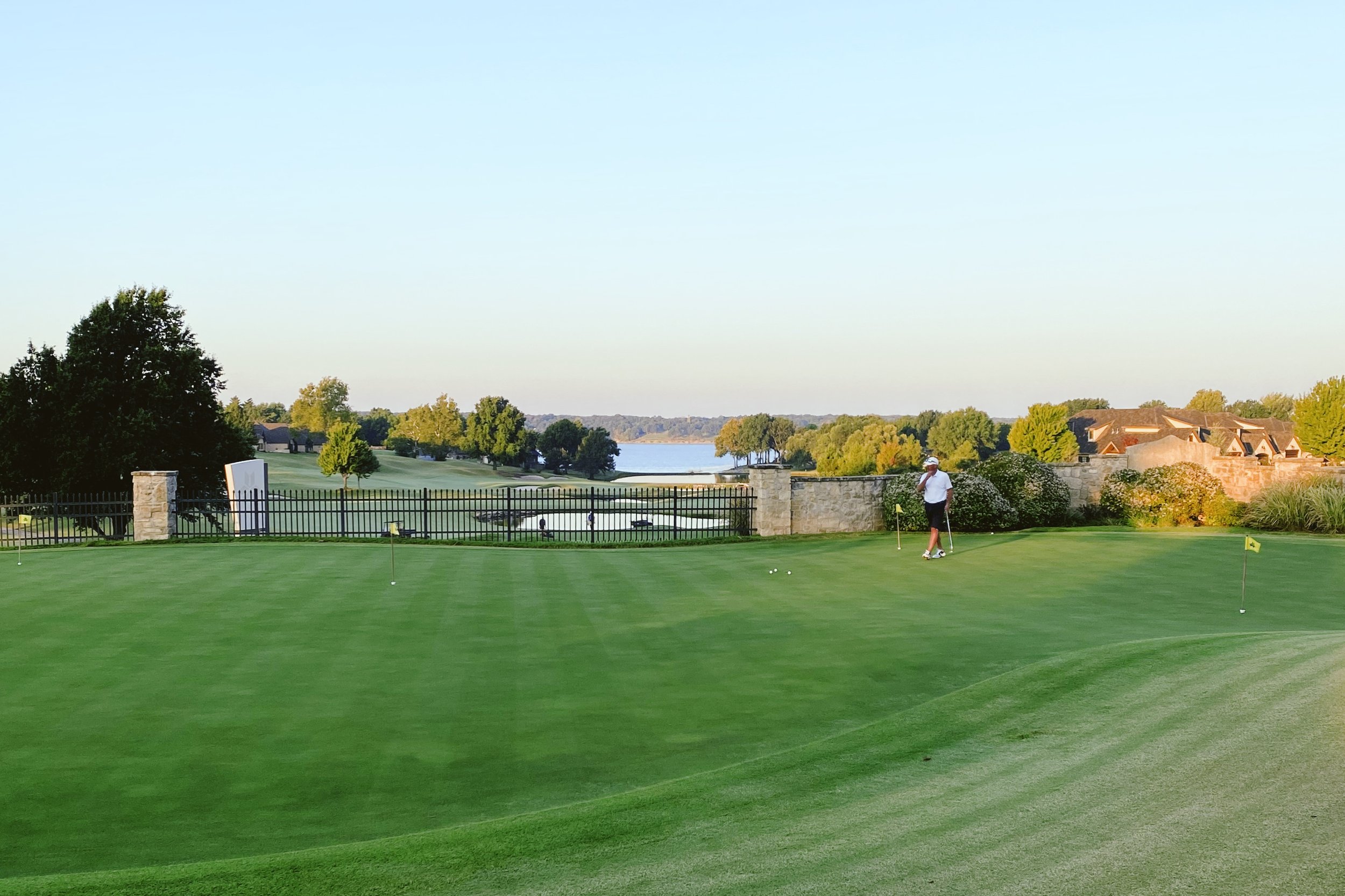
The resort has been a staple on Monkey Island for nearly 60 years. The original hotel was opened in May 1964 by Oklahoma City’s Frank Richards. Management changed hands multiple times before falling to Wichita native Charles Davis in 1969, who owned 1000 acres and ran Angus cattle on the island. For the next two decades, Davis transformed the sleepy fishing lodge into a world-class resort, earning sought-after accolades such as Mobil’s Four-Star designation and AAA’s Four Diamond Award.
The resort was billed as a “Mini-Hawaii” on the tip of Monkey Island. The Tahitian Terrace became known for its live music and free-flowing tropical libations. The cattle baron even built 36 holes of Championship golf on the island, attracting some of the area’s biggest golf enthusiasts. Hall of Fame New York Yankee Mickey Mantle frequented the resort in his retirement years, hosting the “Mickey Mantle Celebrity Golf Classic” there from 1991-1994 to benefit the Oklahoma Make-A-Wish foundation. The attendee list for these events read like a “Who’s Who” of influential people in American sports and culture - Bob Knight, Stan Musial, Yogi Berra, Bob Costas, Neil Armstrong, Willie Nelson, Bill Murray, Warren Spahn, Allie Reynolds, Steve Owens, George Frazier and Eddie Sutton.
A newspaper advertisement for Shangri-La in 1975.
The ties between Shangri-La and Oklahoma’s political landscape run deep. In 1977, the resort hosted the Midwestern Governors’ Conference. Oklahoma Lt. Gov. George Nigh acted as master of ceremonies for the three-day event, showcasing the resort and its various amenities. Following the event, journalist John Young stated, “The setting, on Grand Lake O’ The Cherokees, undoubtedly was a pleasant surprise to visitors unfamiliar with Oklahoma… It was surely a big plus for the state’s effort to upgrade its tourism industry.”
The positive reaction of the event lingered as five years later, Shangri-La was once again chosen to showcase itself on the national stage.
Nigh, now the Governor of the State of Oklahoma, convinced the National Governors’ Conference to hold their annual meetings at the resort in 1982. Davis pulled an additional $25 million in resources together to expand and improve facilities in advance of the event. Attendees included Pierre S. du Pont IV of Delaware, Bill Clements of Texas and John D. Rockefeller IV of West Virginia. In all, 41 governors from around the United States attended the conference on Monkey Island.
If the National Governors’ Conference of 1982 was a high point for the resort, then the ensuing three decades were a roller coaster. Falling into bankruptcy in 1986, the property changed hands multiple times and much of its assets fell into disrepair. Shangri-La became merely a distant memory to many who had once held her in such high regard.
Enter Eddie Gibbs.
In early 2010, the fence magnate purchased the property with one goal in mind – to create a world-class golf resort at Grand Lake. Within 15 months, Gibbs and his team had begun to revitalize the Championship Blue Course and built the towering 13,000-square-foot clubhouse. By the end of 2011, The Champions Nine was open for play. By the summer of 2013, Shangri-La boasted 27 holes of Championship golf.
“One of the reasons we champion the efforts at Shangri-La is Eddie Gibbs’ investment back into a gem of a property inside the state of Oklahoma,” Pinnell said. “We’re always trying to highlight entrepreneurs and developers who take a tourism attraction that may have been hot decades ago and revitalize them. If you build it; they will come. If you demand more than just being ‘OK’, then Oklahoma taxpayers will reward that effort.”
It's because of Gibbs’ efforts to revitalize a place that holds historic value to the state of Oklahoma that Pinnell is excited to host his golf tournament there each year.
“I hear stories of people who come to my tournament who haven’t been to Shangri-La in decades or have never even been to Grand Lake before. I love hearing that someone came to my tournament and then tell me that they brought their wife or their family out there the next weekend.”
Pinnell has served as Oklahoma’s lieutenant governor since 2019. But when asked about his day-to-day, you might be surprised by the answer.
“The lieutenant governor position is a blank slate – it’s kind of what you make it,” Pinnell says. “I ran on a platform of tourism four years ago and we won all 77 counties because of that.”
He compares his platform to that of Nigh, who in 1958 became the youngest lieutenant governor in state history at age 31. During his tenure, he was noted to be Oklahoma’s greatest cheerleader, pushing the state’s agenda of tourism. As a state legislator, he introduced a bill to make “Oklahoma!” the state song. He was also known to entice movie producers to film on location in Oklahoma. During his time in public office, Nigh saw films such as “Where the Red Fern Grows,” “Rumble Fish” and “The Outsiders” filmed in Oklahoma.
“He was – and still is – one of the best promoters and champions of our state,” Pinnell said. “And that shouldn’t be discounted. We need somebody in the Executive Branch who understands sales and marketing, because if we don’t define who we are as a state, then 49 other states will define it for us.”
That’s the main reason why Pinnell wanted so badly to hit the ground running. One of his first efforts as lieutenant governor was to establish a consistent brand for the state of Oklahoma. This project brought together some of Oklahoma’s brightest and forward-thinking minds in marketing, sales and communications to develop a visual and verbal identity that the state could utilize. The result can be found on welcome signs at every major highway that enters and exits Oklahoma, on agency websites and on buildings around the state.
“When we came in, we realized the wide perception from people outside our state is ‘Oklahoma is a flat dust bowl,’ and nothing could be further from the truth. But most people didn’t know that because we weren’t promoting a positive, diverse brand. So we got 200 Oklahomans together for a volunteer-led effort to identify that brand.”
On the heels of the new brand came none other than a worldwide pandemic. For Pinnell, he saw a tremendous opportunity. His team launched #OKHereWeGo, a digital campaign designed to market Oklahoma’s outdoor assets, from hiking and camping to fishing and – of course – golf.
“That gave us an opportunity to show people what was 30 minutes outside their door,” Pinnell said. “From golf courses to state park trails, a lot of people were looking for things to do. Out of a crisis, sometimes there are positives, and I think one of those was Oklahomans got outside again.”
#OKHereWeGo was a campaign designed to get people to enjoy outdoor activities like golf, fishing, hiking and more.
From the initial push to get people outside, now Pinnell and his team are implementing opportunities to sustain that momentum. One of those ways is through the newly formed Oklahoma Golf Trail.
With newly passed legislation widely supported on both sides of the aisle as well as Pinnell’s office, a commission will designate a list of golf courses around the state that will be highlighted on the official Oklahoma Golf Trail, something that he is excited to market in the future.
Pinnell is not lost on the rich golf heritage that Oklahoma boasts. From the highest concentration of Perry Maxwell golf courses in America to the slew of major championships Oklahoma has hosted, he understands the unique opportunity we have to market the game of golf.
“Tourism is the front door to economic development,” Pinnell said. “Whether it’s a major championship or the college softball World Series, every event we can host will draw people to our state. What I know for a fact is that Oklahoma sells very well when we can actually get people to the state.”
“That’s what was so powerful about the PGA Championship,” he continues. “It’s on TV every day, so millions of people are seeing that Oklahoma is in fact not a dust bowl and actually a beautiful place, but the tens of thousands of people who visited Tulsa for the first time – I’d bet you anything that most of those people will be back because they saw a really cool city.”
The full result of Pinnell’s efforts remain to be seen; he’s hoping for another term to continue building on that momentum. But he’s also acutely aware of the public/private partnerships that are necessary to sustain that growth.
“The state government can only do so much,” Pinnell said. “A city can only do so much. You see these golf courses or any sort of city- or state-operated recreation, you really do need private partners in that effort. I am much more sensitive to seeing and recognizing those private and corporate efforts. Having a corporate partnership could mean the difference in keeping a golf course open or not.”
I have to leave the tournament early, so I’m not around to see Pinnell’s team finish in the middle of the pack. I did, however, get the chance to tour Gibbs’ latest effort at Shangri-La, “The Battlefield” – an 18-hole Par Three course that will offer dramatic green complexes and approach shots ranging from less than 80 yards to nearly 250 yards. It’s a project that superintendent Justin May is eager to see completed.
“I really think this will be a game-changer for golf tourism in northeast Oklahoma,” May told me as he drove me around the new track.
Driving off the island and back into reality, I reminisce back to the previous night’s luau, when I pulled Pinnell aside to thank him for the invitation. The sun had set and we were watching resort guests play pickleball at The Racquet Club, another gem of Gibbs’ island playground.
I asked him about reelection – he’s on the November general election ballot - and what’s next for him as lieutenant governor.
“Wherever your focus is as an elected official is where you’ll see movement,” Pinnell answered. “We didn’t have a standalone Secretary of Tourism before I asked for it. If you think about that, we didn’t have someone in the Executive Branch who every single day was trying to promote the state. I can’t say what other elected officials would or wouldn’t do to draw continued interest to our state. But I can tell you for a fact that right now, Oklahoma has a lieutenant governor who is passionate about our efforts in golf and outdoor recreation, and I’m going to try and leverage that passion into creating more revenue for our state.”
Whatever his future holds, I’m comforted to know that this mid-handicapper will continue to be an advocate for the game of golf in Oklahoma.
Way Out West
The complicated history of Boiling Springs Golf Club and one man’s mission to restore her glory.
Editor’s Note: A special thank you our friends at The Golfer’s Journal for allowing us to document their event at Boiling Springs Golf Club in June 2022 and to Matt Hahn for contributing his outstanding photography to this story.
There’s a few things you need to know if you’re planning a trip out this way.
1. Out here, distance isn’t measured by miles, but rather by time. Old-timers will tell you that you’re a couple of hours from “The City.”
2. “The City” is Oklahoma City, by all bucolic intents. Tulsa is just Tulsa. In reality, this place is 150 miles from The City, and 200 on the nose from Tulsa.
3. You’re going to have plenty of time to think.
On the way out, you may have noticed a brief respite from the otherwise persistent rolling prairie at the Gloss Mountains (not Glass) or taken a detour to visit natural phenomena boasting larger-than-life titles like “Little Sahara” or “Great Salt Plains.” But the rest of the trip leaves you ample time for reflecting on what’s ahead.
“Just off the beaten path” doesn’t do this journey justice. You won’t accidentally stumble on this place. Like generations before you, the pioneering spirit hits you somewhere between Ringwood and Mooreland. To stretch your legs, you stop at an unnamed cemetery somewhere in the vast six million acres of the old Cherokee Outlet to track down the grave of your great, great, great grandfather. Now segregated by miles of barbed wire, this used to be open range. Legendary cattlemen drove millions of Texas longhorns across this land along the Chisholm and Great Western Trails. Your mind begins to wander as you try to imagine the daily perils those early settlers dealt with...
The headstone of William Ely, Sergeant in the Union Army and 3X great grandfather of this author. He settled land along the Cherokee Strip in the late 19th Century, less than 40 miles from present-day Boiling Springs State Park.
Suddenly, like a mirage against the endless expanse of Southern Great Plains savanna, a heavily timbered spread rises on the horizon. Thickets of invasive eastern red cedars have overtaken much of the vegetation, but remnants of the area remain. Unique rock formations. Sandsage grassland. Dust Bowl-Era constructions. A steady flow of crystal-clear water bubbling from the ground.
Archeological evidence estimates that humans have inhabited this region of Oklahoma for more than 14,000 years. Bone scatter along the nearby Beaver River suggests that Paleoindians used the region as a kill site, driving hundreds of American bison off cliffs and into “arroyo traps,” spearing and butchering the noble brutes for every available resource.
The first written record of this area appears as early as 1541, when Spanish explorer Francisco Vazquez de Coronado visited in search of the “Seven Cities of Gold.” A century later, Juan de Oñate reported Indian encampments along the cool, natural springs. A fur trading post was established in 1823 by U.S. Cavalry General Thomas James, and pioneers began flocking to the area.
In 1868, as Young Tom defeated Old Tom by three strokes in the ninth playing of The Open Championship at Prestwick, Col. George Custer set up camp on the other end of the county at Fort Supply. From there, he would plan and execute his government-endorsed annihilation of Black Kettle’s Southern Cheyenne camp on the banks of the Washita River.
But it wasn’t until 1935 – on the cusp of the greatest human-influenced natural disaster – that Boiling Springs State Park began to take shape. On the backs of 350 men in Company 2822 of President Roosevelt’s Civilian Conservation Corps in the throes of the Dust Bowl, the park began to form. In the span of four years, through torrential dust storms and record heat, these men labored day and night moving rocks and establishing this oasis at the doorstep of No Man’s Land.
This land requires resilience. Naturally exposed to classic American Interior Plains elements, record temperatures in the area range nearly 140 degrees Fahrenheit. Hail the size of baseballs is common in the spring. In 1947, a 1.8-mile-wide tornado hit the nearby town of Woodward. At 8:42 p.m., the twister – which had traveled for nearly 100 miles to this point – entered city limits. In moments, 100 city blocks were wiped to their foundations. More than 1,000 homes and businesses were destroyed. In Woodward alone, 107 people were killed and 1,000 injured.
The state park is situated on the banks of the North Canadian River, which separates the Anadarko Shelf from the Anadarko Basin. Along the river’s corridor, rock formations date from the Cenozoic Era – more than 66 million years ago. Doe Creek Limestone serves as bedrock for collecting ground water. Once the underground water meets the topography of the land, a natural spring is formed.
They’re called “boiling springs” not because of the heat – they are in fact quite cool – but rather the way the water bubbles up from the earth. While you’re not here for a science lesson, it’s important to understand this phenomenon. Because instead of the hard clay soil Oklahomans know all too well, these springs beget a soft, sandy loam.
Adjacent to the park, yet sharing most of its natural resources, lies your destination. Down a winding road with a smattering of private homes, you emerge from a thicket of trees to find the understated clubhouse on the south end of a parking lot. A handful of carts are pulled out of the barn – which is more like an open-air shed that doubles as a picnic area. At first glance, nothing about the scene surprises you. This is your run-of-the-mill muni golf course in rural Oklahoma, where denim is often the attire of choice and Coors Light is the preferred cocktail.
The clubhouse is sparse. You notice the framed photos of the various high school golf programs that call this place home. On the right, there’s a sale rack with an unassuming collection of hats, towels and maybe a polo or two. The young lady at the front desk welcomes you, confirms your tee time and accepts a pair of twenty-dollar bills you slide across the counter. You stock up on a handful of crispy domestics and head outside to roll a few putts. There’s no driving range, but at 6,500 yards, you convince yourself it’s unnecessary.
After a few putts, you step off the 20 or so paces to the first tee. Looking south toward Texas, the first is as straight as an arrow. The hole’s only resistance, a trio of fairway bunkers that pinch the short grass to just eight yards wide, is often rendered defenseless by the long hitters. It’s when you find the putting surface that you begin to realize the Maxwellian influence golf course architect Donald Sechrest may have had when he designed the place in 1979. From the first green, you can hit a high wedge onto the tee boxes of No. 2, No. 7 and No. 18 and the sixth and 17th greens. This confluence of holes is a classic Perry Maxwell characteristic, who utilizes similar routings at notable tracks like Dornick Hills, Southern Hills and Prairie Dunes.
The Prairie Dunes connection may go even deeper, however, as it was a favorite course of the native-Oklahoman Sechrest. In 1964, 15 years before he built Boiling Springs, Sechrest was noted to have made a trip to the Hutchinson, Kansas site with three other Stillwater residents, Joe Adair, Theron Covey and Cmdr. Dugan Roberts. He was an assistant professional at Lakeside Golf Club at the time, working for his former college coach, Labron Harris Sr., and completing his first design which would become Stillwater Country Club.
It's not until the second hole that you start to discover the unique nature of this place. A 350-yard dogleg right par four, you send your drive through a chute of oaks and black walnuts. Anything that strays from the fairway will find a soft, sandy waste area that dominates this landscape. For the next few hours, you’re tasked with navigating this wild, untamed land.
Untamed as it might seem, that’s the furthest from the truth if you ask Jeff Wagner. Slender and bearded, Jeff has served as general manager and superintendent of the golf course going on eight years. Sporting a slightly thinned hairline styled in a classic buzzcut, Jeff wears so many hats at Boiling Springs that it doesn’t matter.
From marketing to finances and even the in-house mechanic, he touches nearly every aspect of the business.
“I’m NOT the golf pro,” he clarifies. “But I can fold a mean sweater.”
Boiling Springs’ jack-of-all-trades, Jeff Wagner.
This place was different from the beginning. Built with prison labor, one of the first assistant superintendents was a former inmate with the Oklahoma Department of Corrections who, before the project, hated golf. The course was one of the first in the state to utilize treated sewage. Rather than dumping the activated sludge into the river, it was pumped from town to water the grass.
Del Scoville, the first head pro, claimed, “if it wasn’t going on the golf course, it’d be in the river and going to the people in The City to drink.”
Tight and menacing, it took more than a year before anyone broke par. Eastern red cedars have always been a part of the story, but the 80s and 90s saw an explosion of the invasive tree. Hundreds of thousands sprang up on the property, choking off the grass and other flora. What wasn’t decimated by the trees was polished off by the pervasive nematode population.
For the first five years, Jeff and his team waged an all-out attack on this foreign enemy of the east. With two chainsaws, a tractor and plenty of willpower, they ripped the trees from their stronghold, reconfigured watering routes and peeled back the layers of this landscape, revealing towering sandy blowouts and prized species of flora.
Let me explain something: When I said “team,” I meant Jeff and his sidekick, Ivan, a kid who grew up down the road in Mooreland. That’s it.
In a land that Daily Oklahoman journalist Joyce Peterson once called “a worthless stretch of tangled woods, briars and brush,” Jeff and Ivan have gradually uncovered a work of art. The tree eradication is ongoing. There are still years of work to be done. But in Jeff’s words, “we’re closer to the end than we are the beginning.”


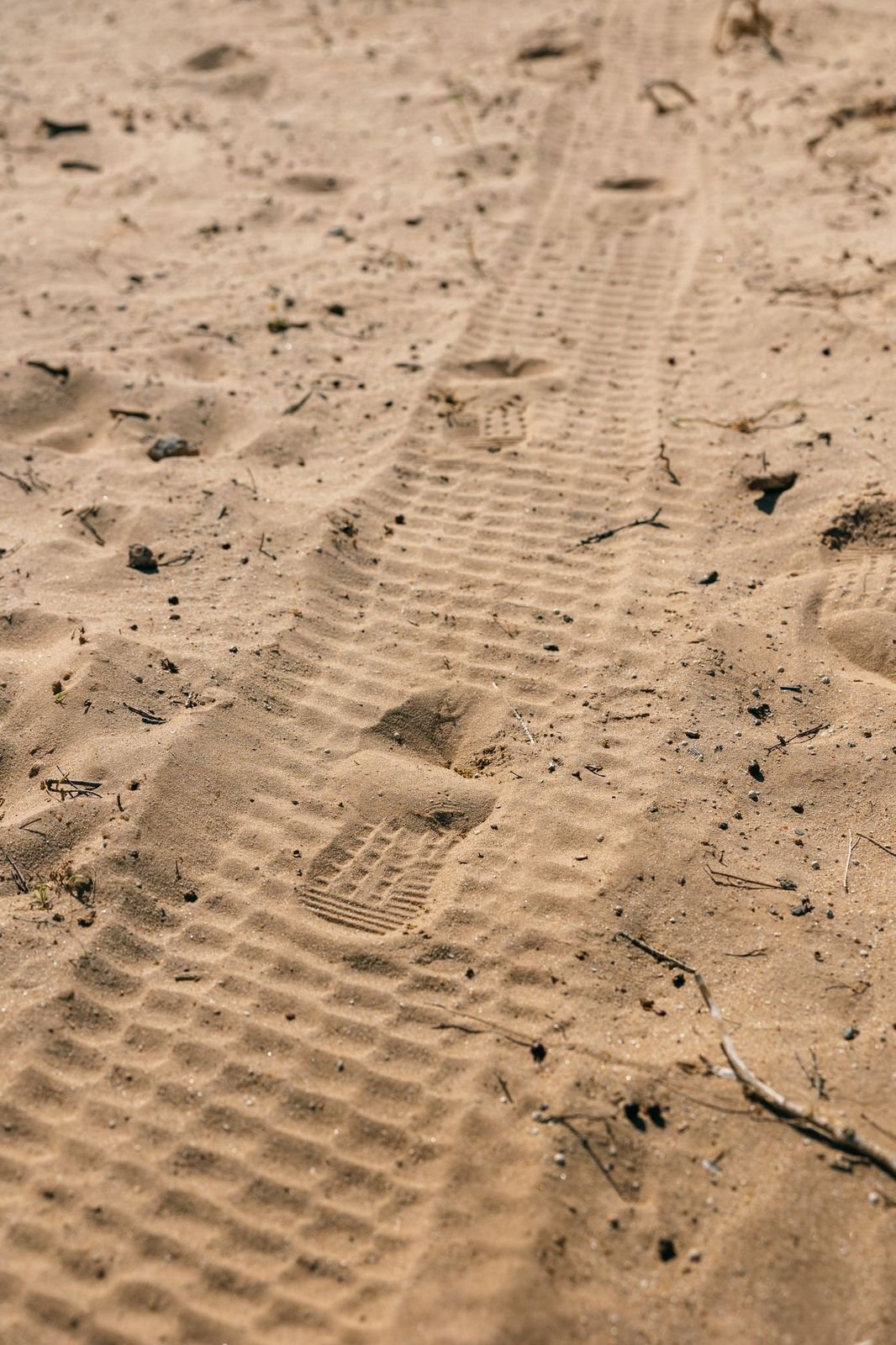

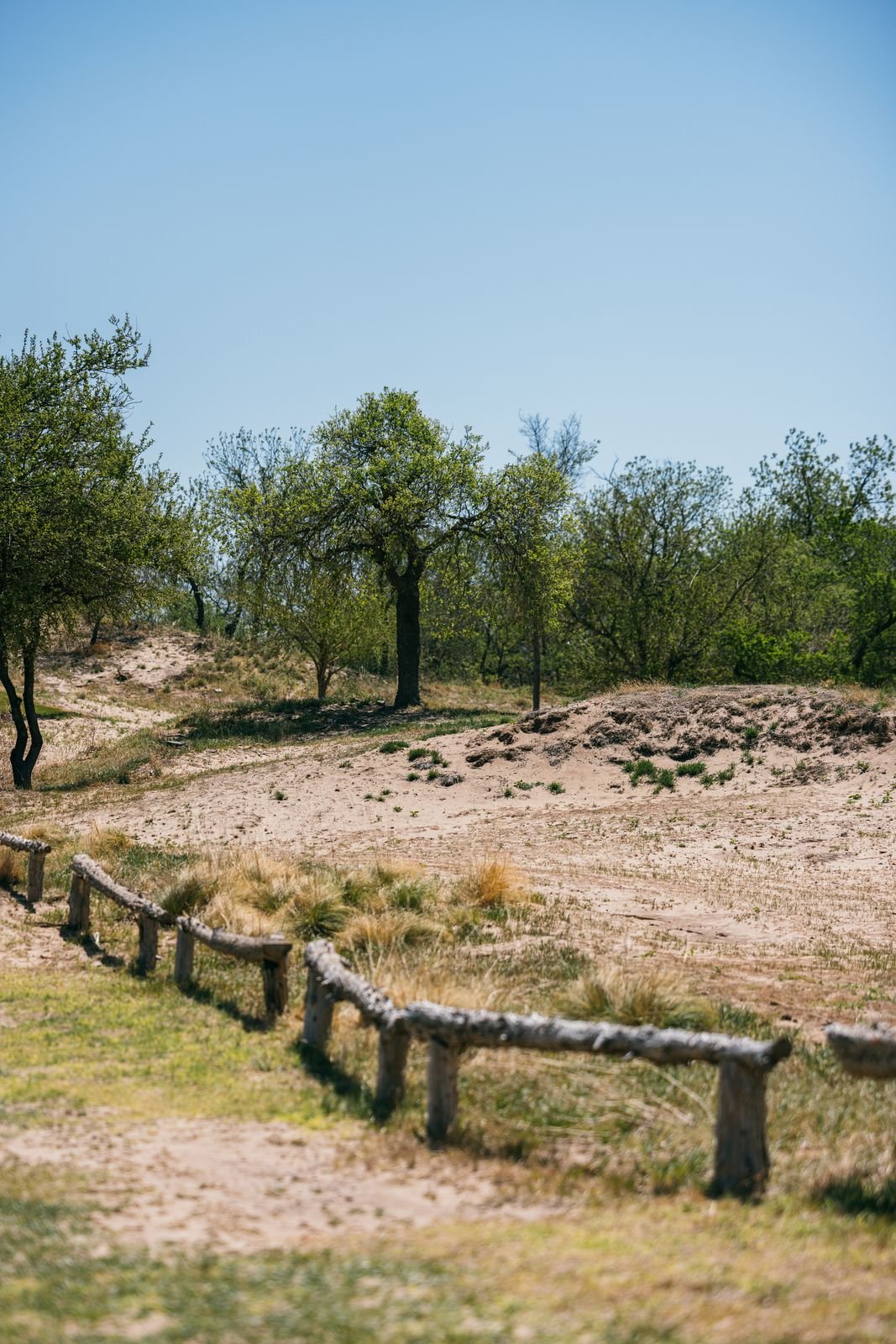
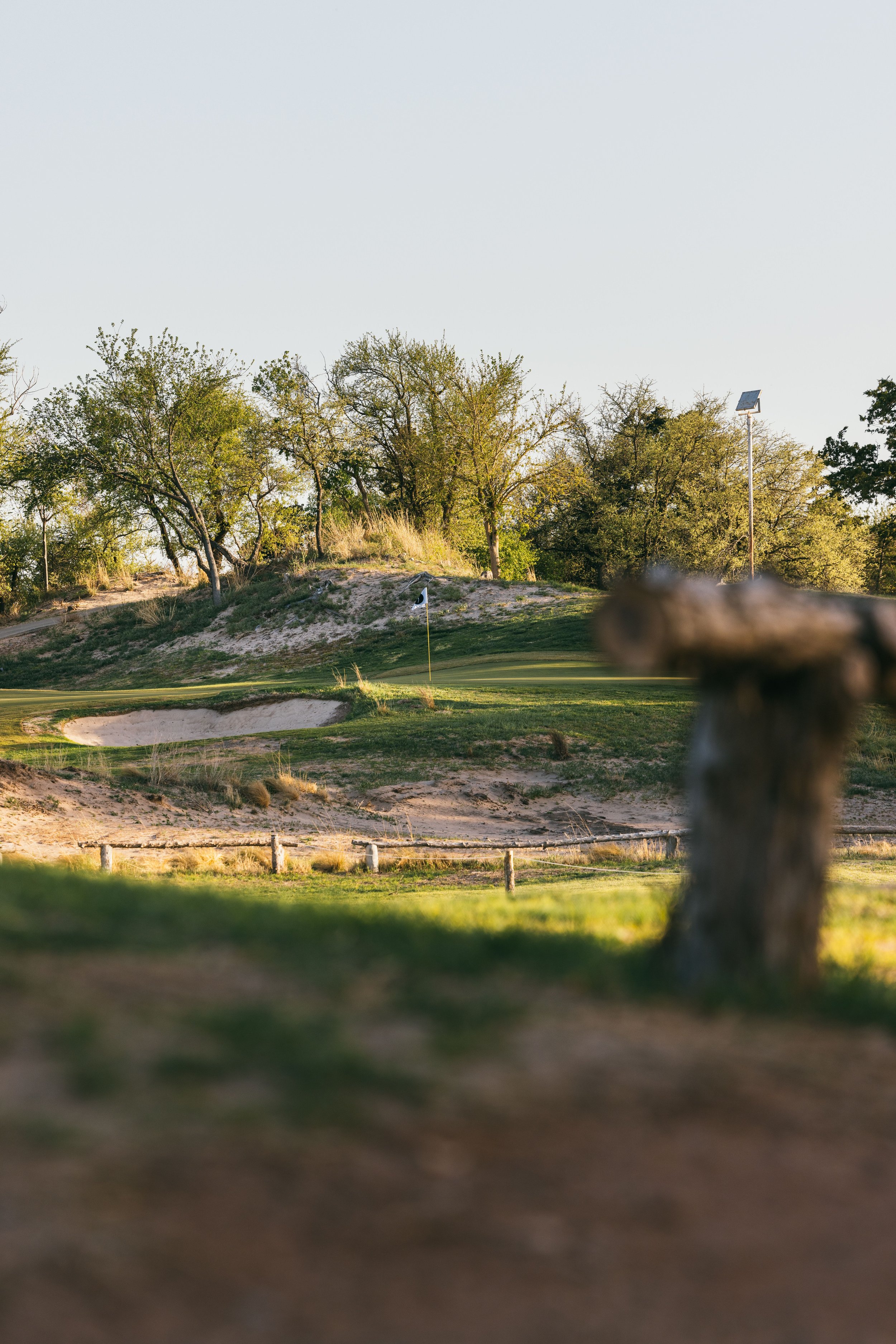
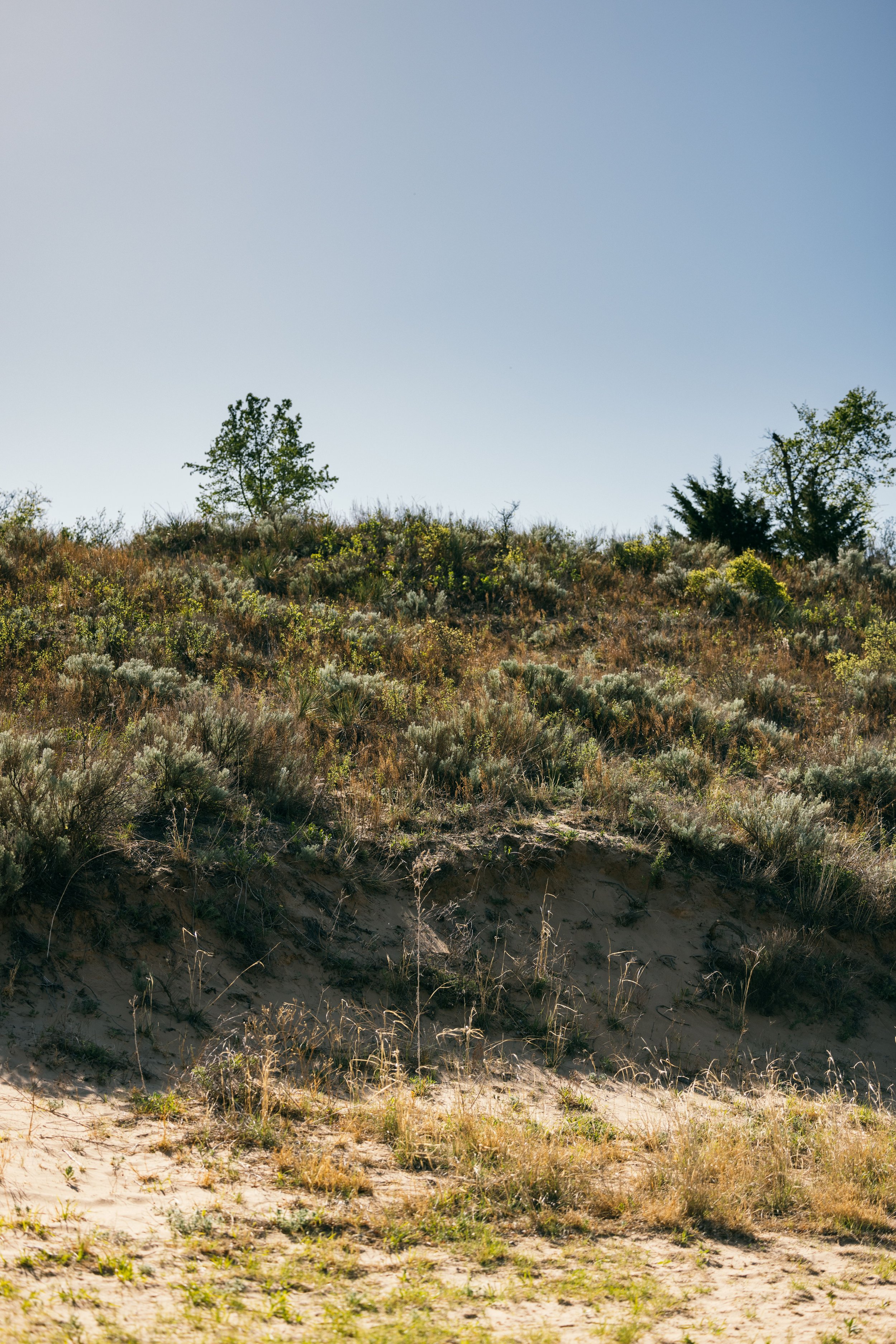
Like a man tasked with restoring a lost Rembrandt, Jeff made the decision to reduce his maintained acreage from 65 to 45 acres. With the remaining 20 acres, his team added yuccas, sunflowers and a mix of blue grama, sideoats grama and little bluestem that are naturally found in Western Oklahoma. In a few arduous years, this effort has reestablished the natural beauty of this area.
In a niche society where naturalization and minimalism are glorified, Boiling Springs has found a way to maximize its assets.
Sure, you can tell yourself you’re “roughing it” at pseudo-minimalist golf meccas in Nowhere, Wisconsin or Boondocks, Oregon. You can kick off your Jordan 4s at the end of a $400 round and head to dinner at some restaurant with a millennially-influenced name like “Forge” or “1895” or “The Tufted Puffin,” where you’ll no doubt enjoy an $85 grass-fed ribeye and a wine list the size of an Oklahoma history textbook before retiring to your rustic-yet-elegant cottage, complete with feather-top bedding and wet bar. Spartan in design. Garish in amenities. That’s great if you’re into that sort of thing.
This ain’t that.
Boiling Springs, by all accounts, is a purely unadulterated golf experience. In no way, shape or form is there an effort to compromise or deviate from the norm of Oklahoma hospitality.
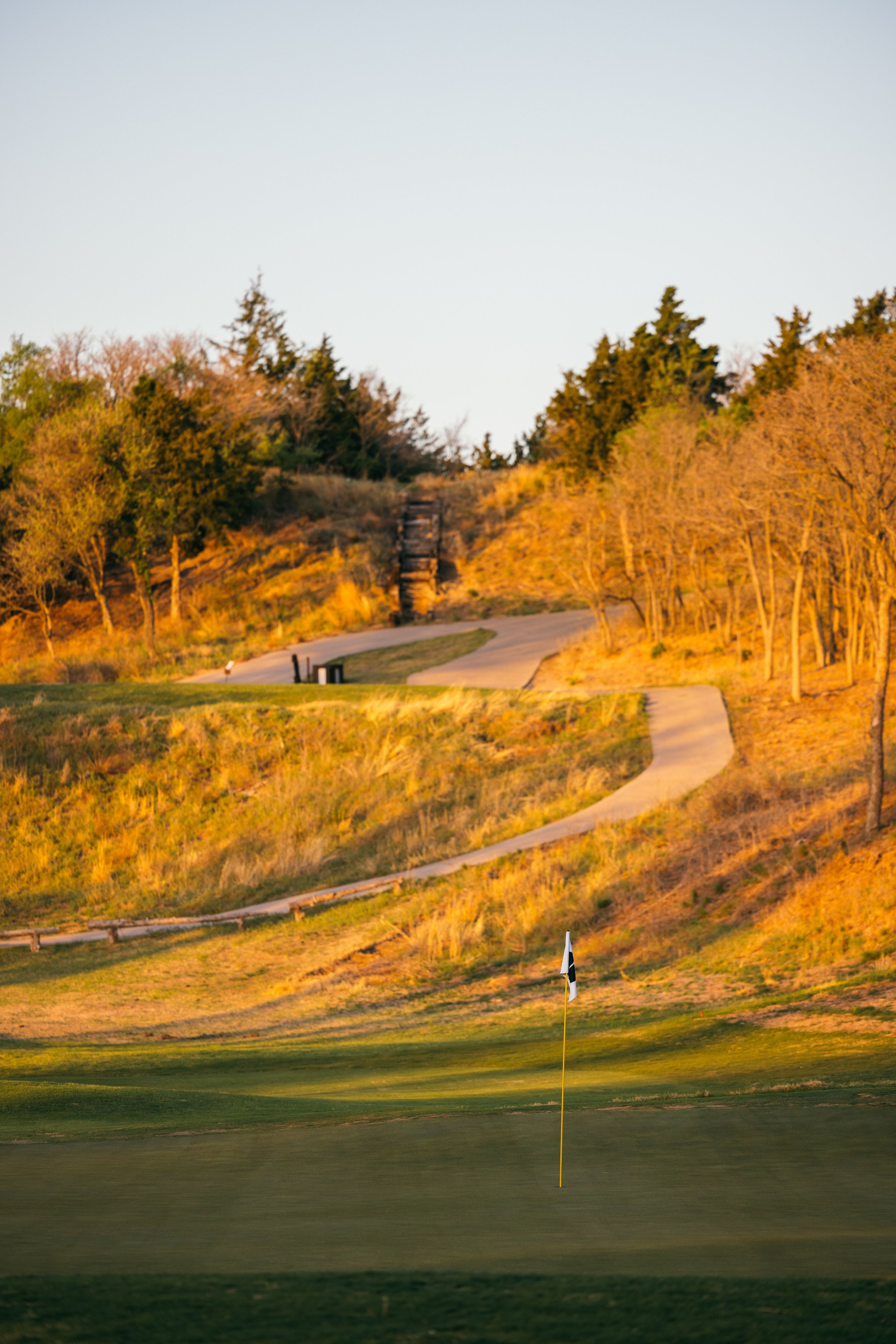

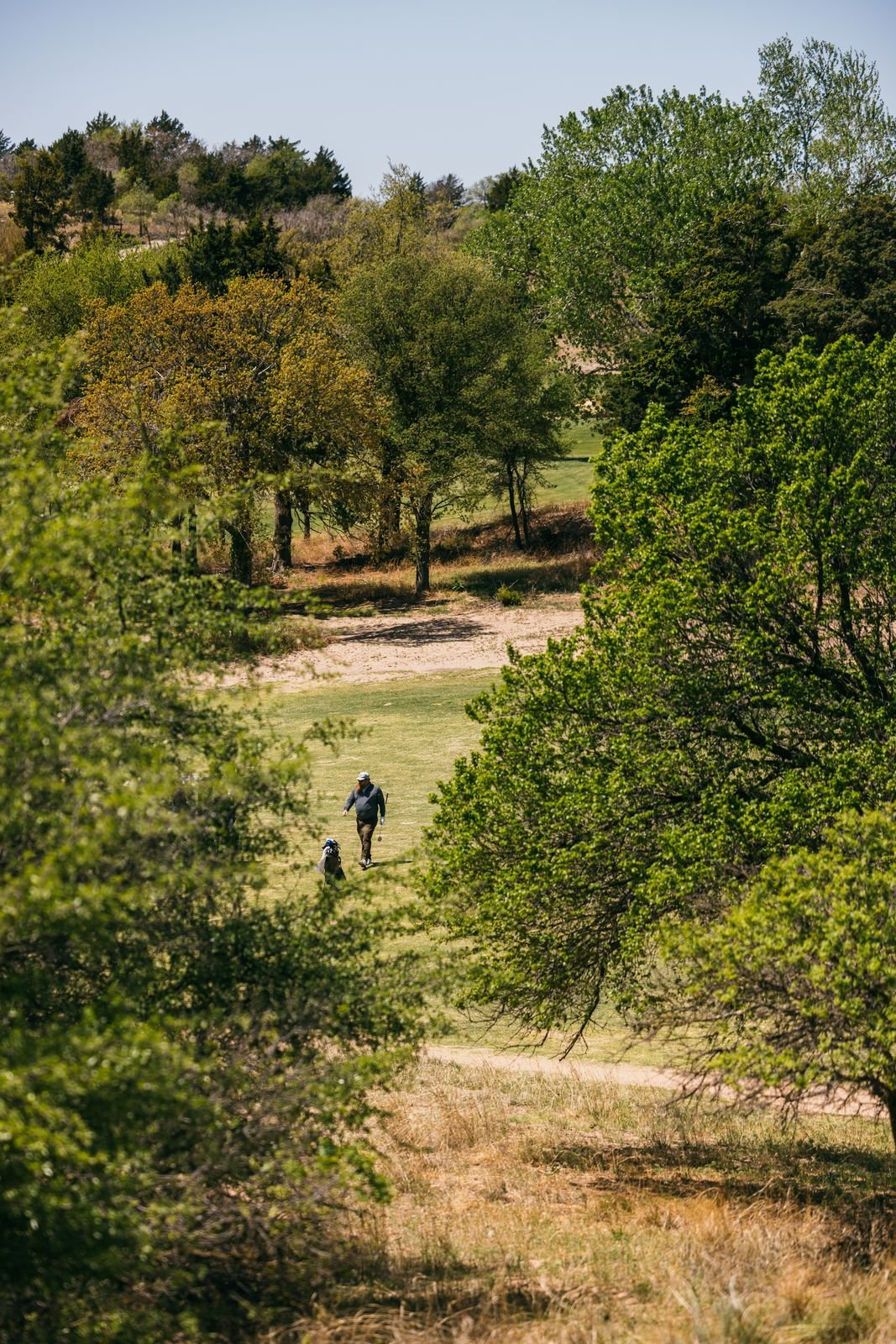


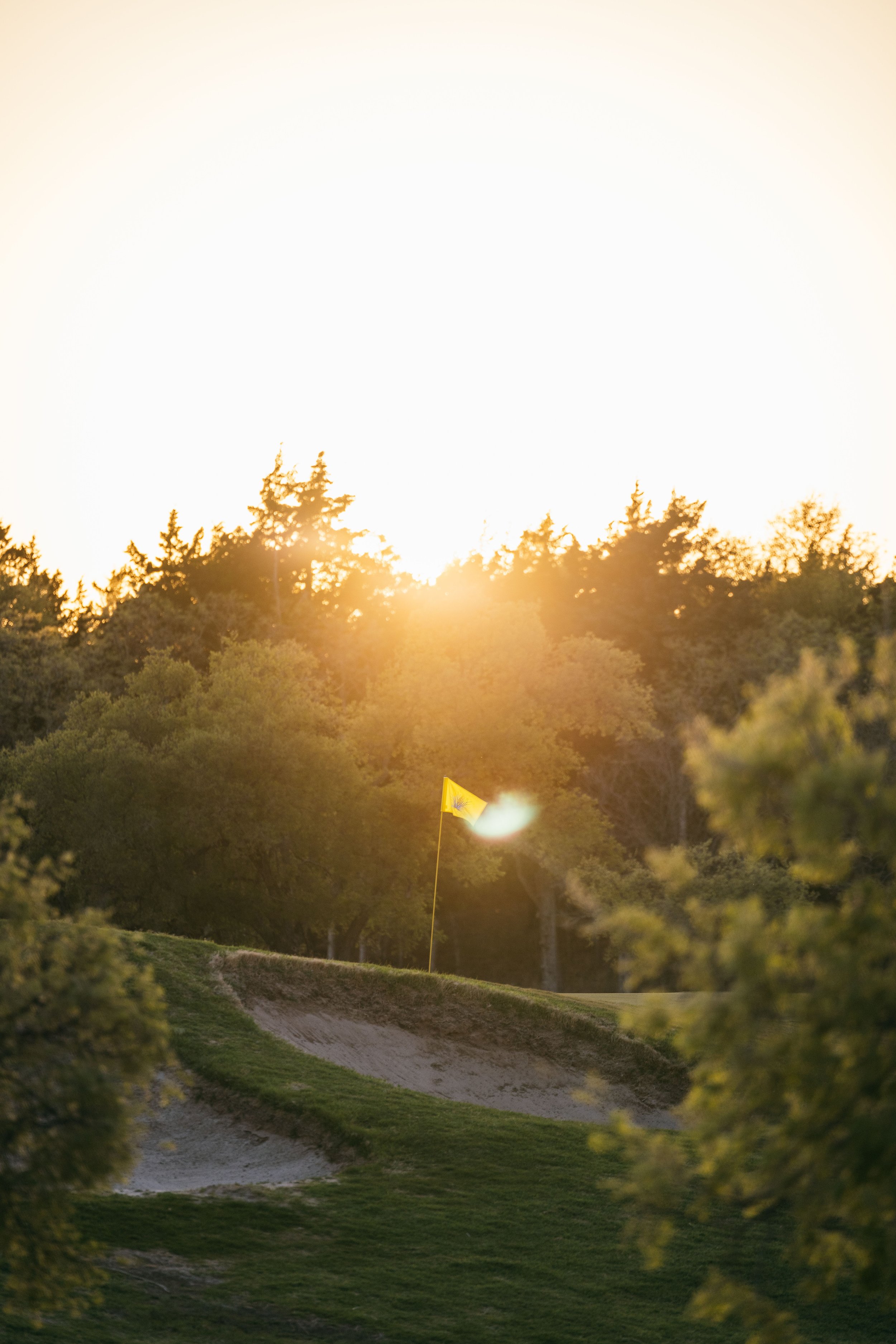
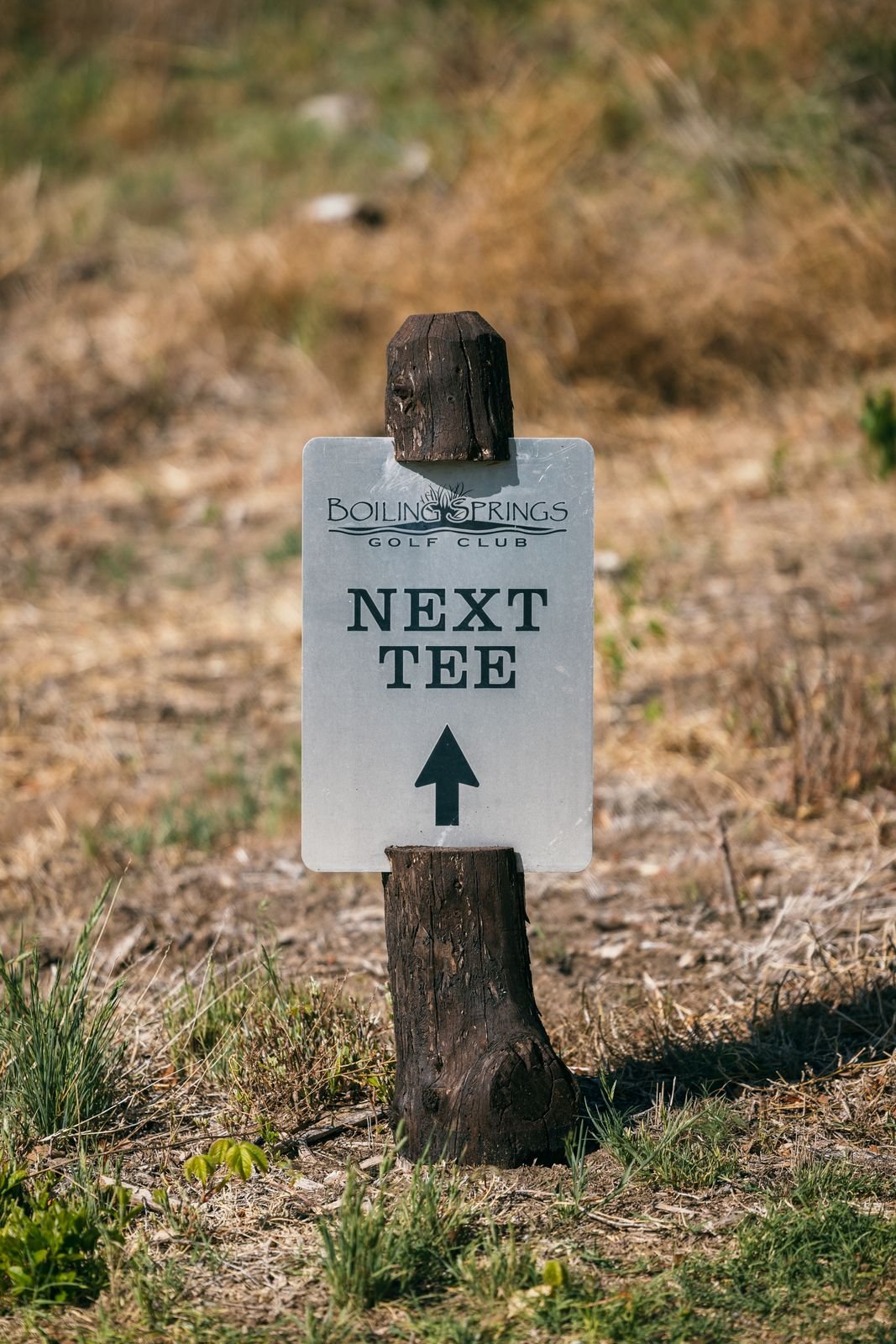
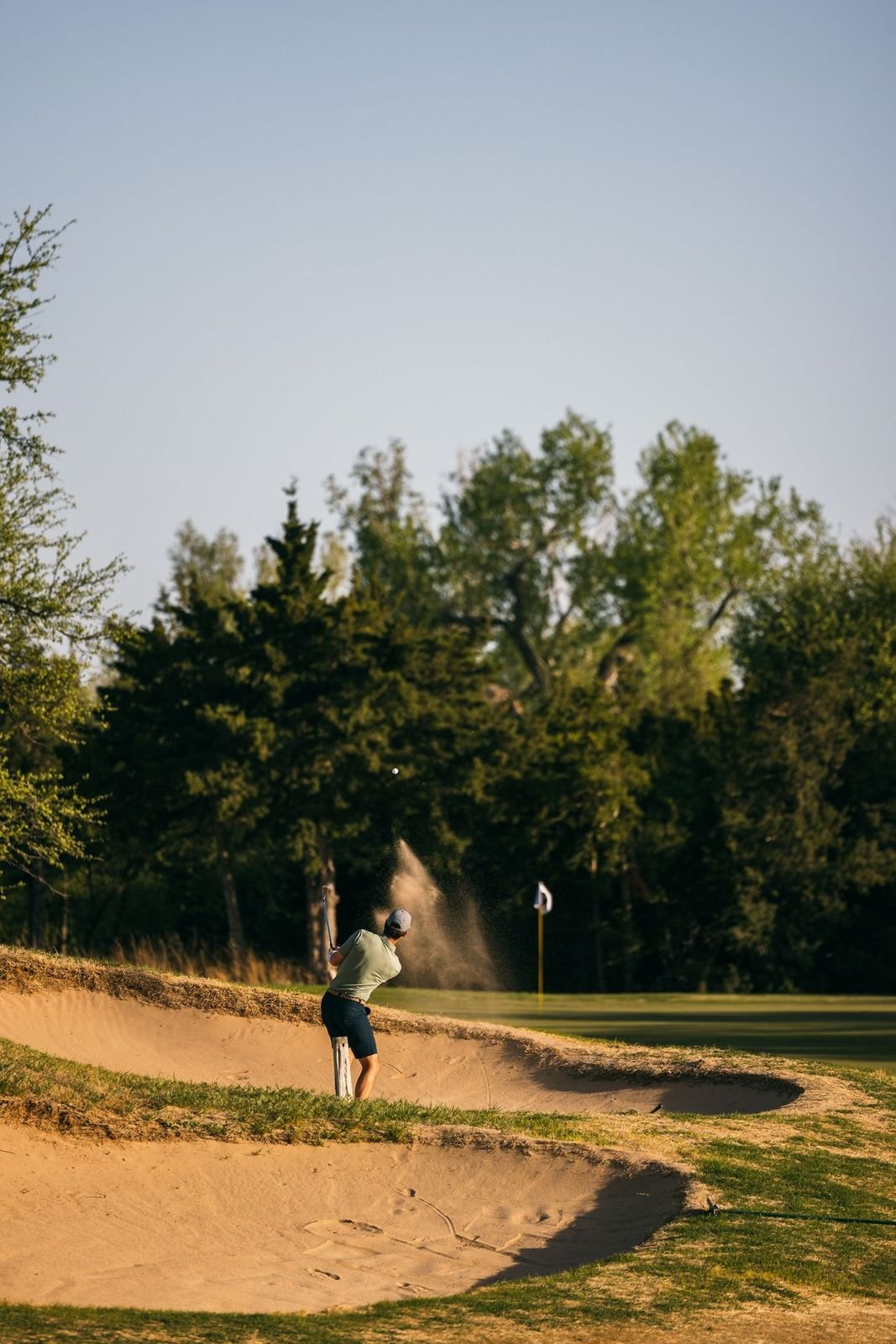
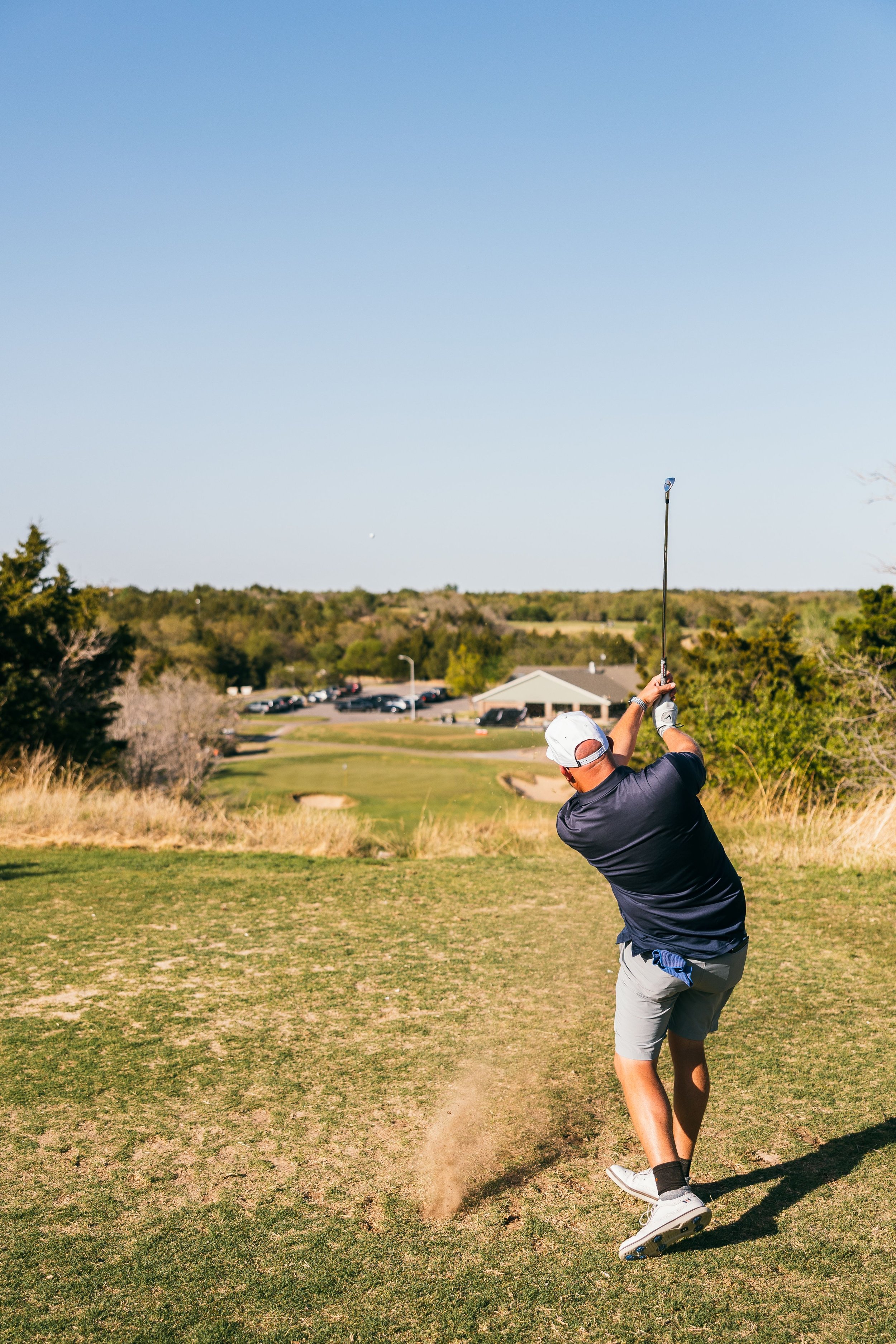
“We have what everyone wants,” Wagner says. And it’s true. Forested sand dunes and dramatic vertical relief are the golden tickets for modern golf enthusiasts. It’s the reason why more and more are willing to travel to no-name communities to get their fix.
For a hundred-dollar bill, Jeff will let you play all you want at Boiling Springs AND give you a hotel room in town with enough cash left over to buy yourself an Oklahoma-bred porterhouse at Al’s Steakhouse on Main Street.
No caddie fees. No dress requirements. No nonsense.
You want sand-based golf? Got it.
You want wildlife? Watch out for cantankerous wild turkey and bad-tempered bobcats.
You want to slam a couple cold ones as the sun sets behind the dunes while Long Hot Summer Day blasts across the 18th green? Be sure to save one for Jeff.
As you wind your way through the dunes, you become intensely aware of your surroundings. The constant Western Oklahoma wind whips at your face. The rumble of a train travels along the distant tracks. A rodent burrows itself into the sand.
Supplied with a torn and tattered canvas, Jeff has reestablished this property’s assets - sandy blowouts, native grasses, unique topography and the best set of $30 bentgrass greens on the planet. His diligence and dedication to the land have revealed a hidden chef-d'oeuvre.
Forget restoring the lost Rembrandt. Maybe he is Rembrandt.
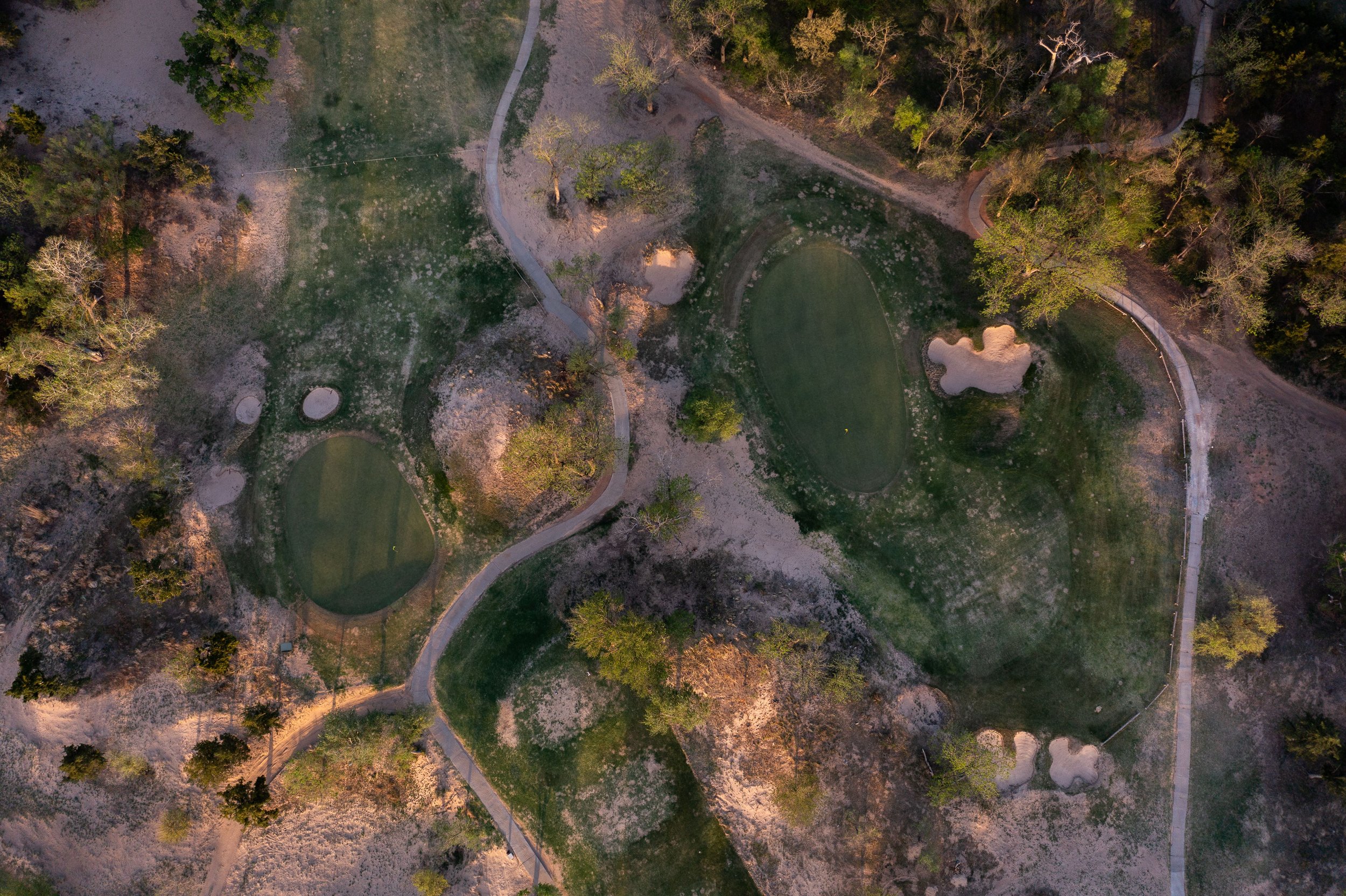

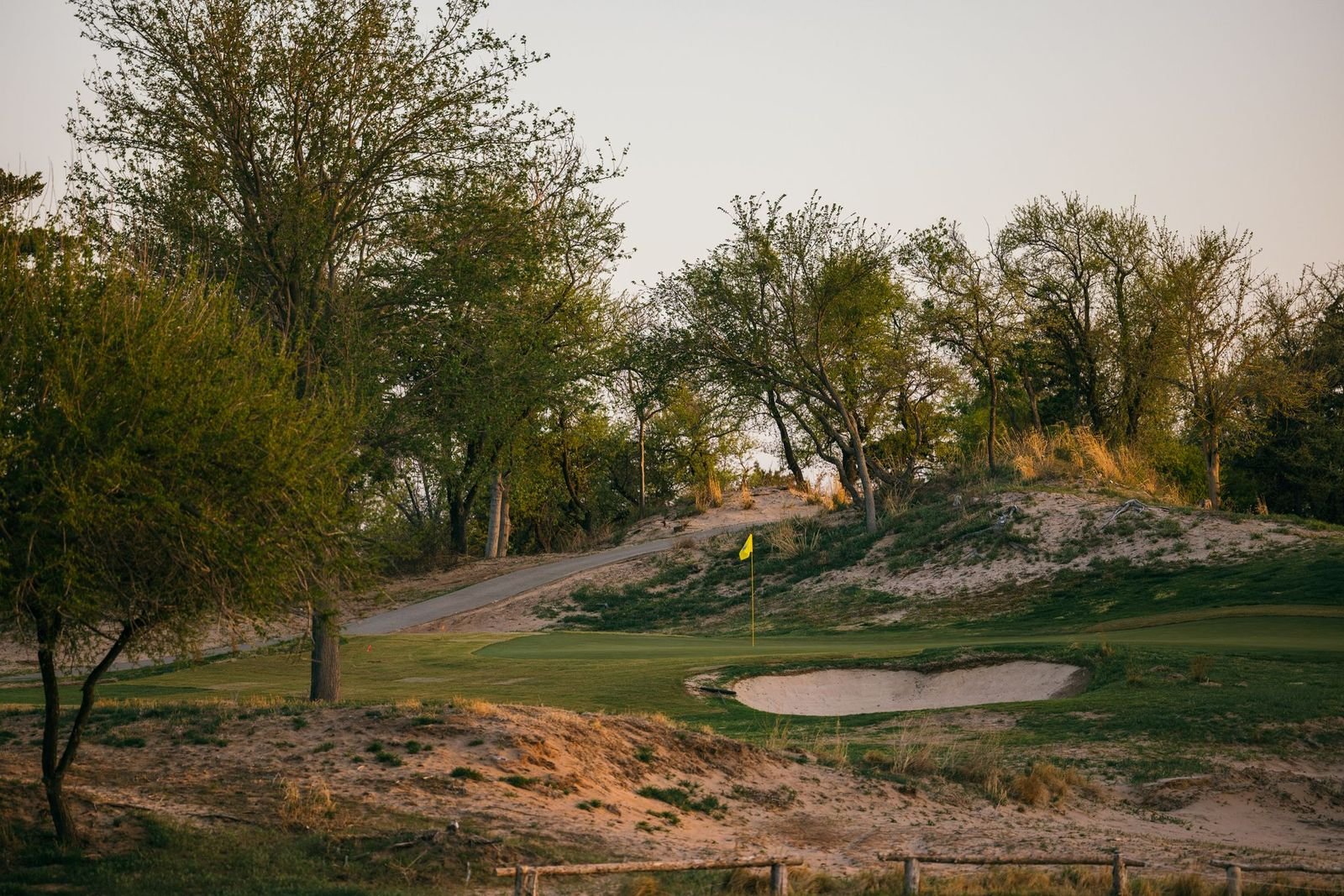
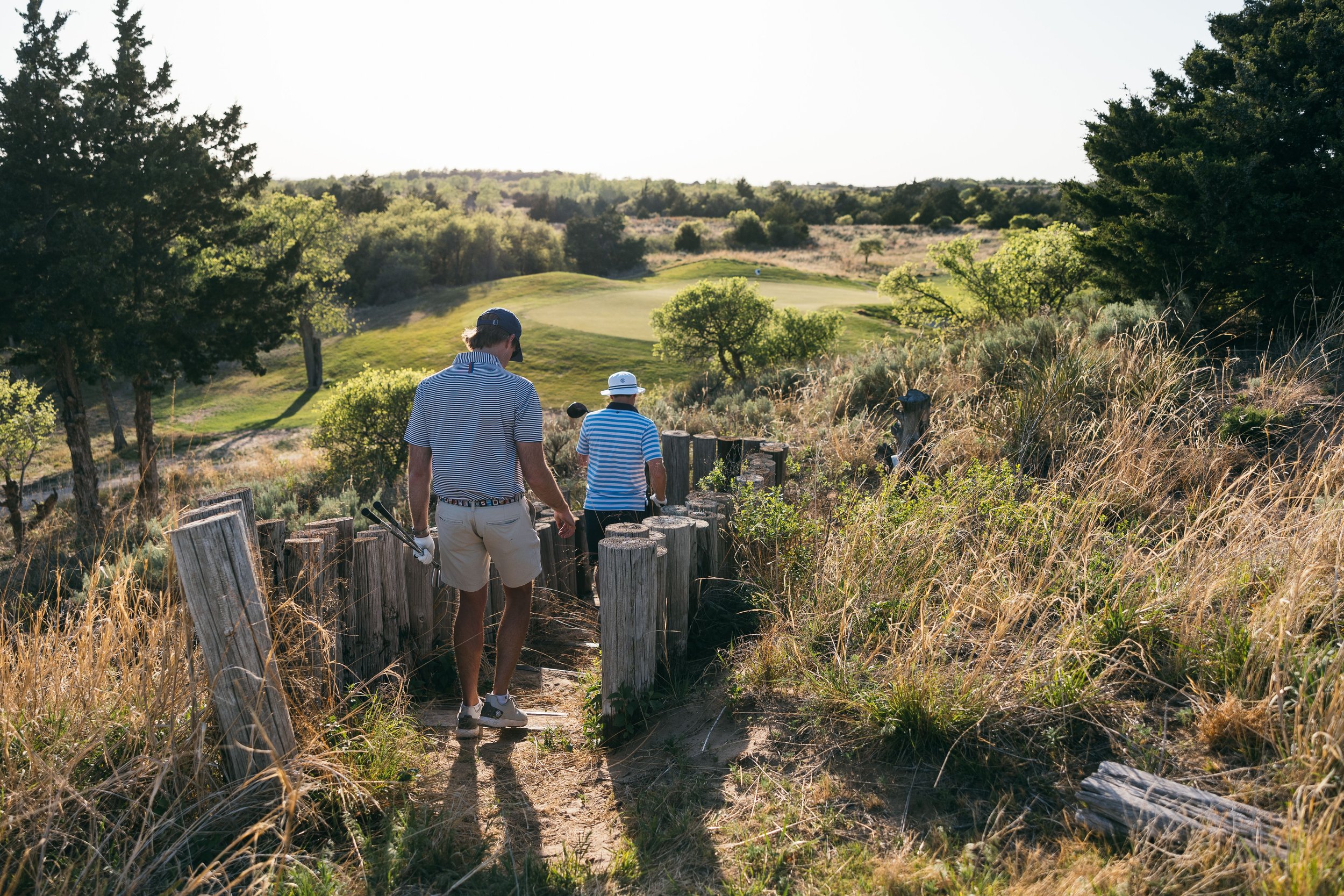
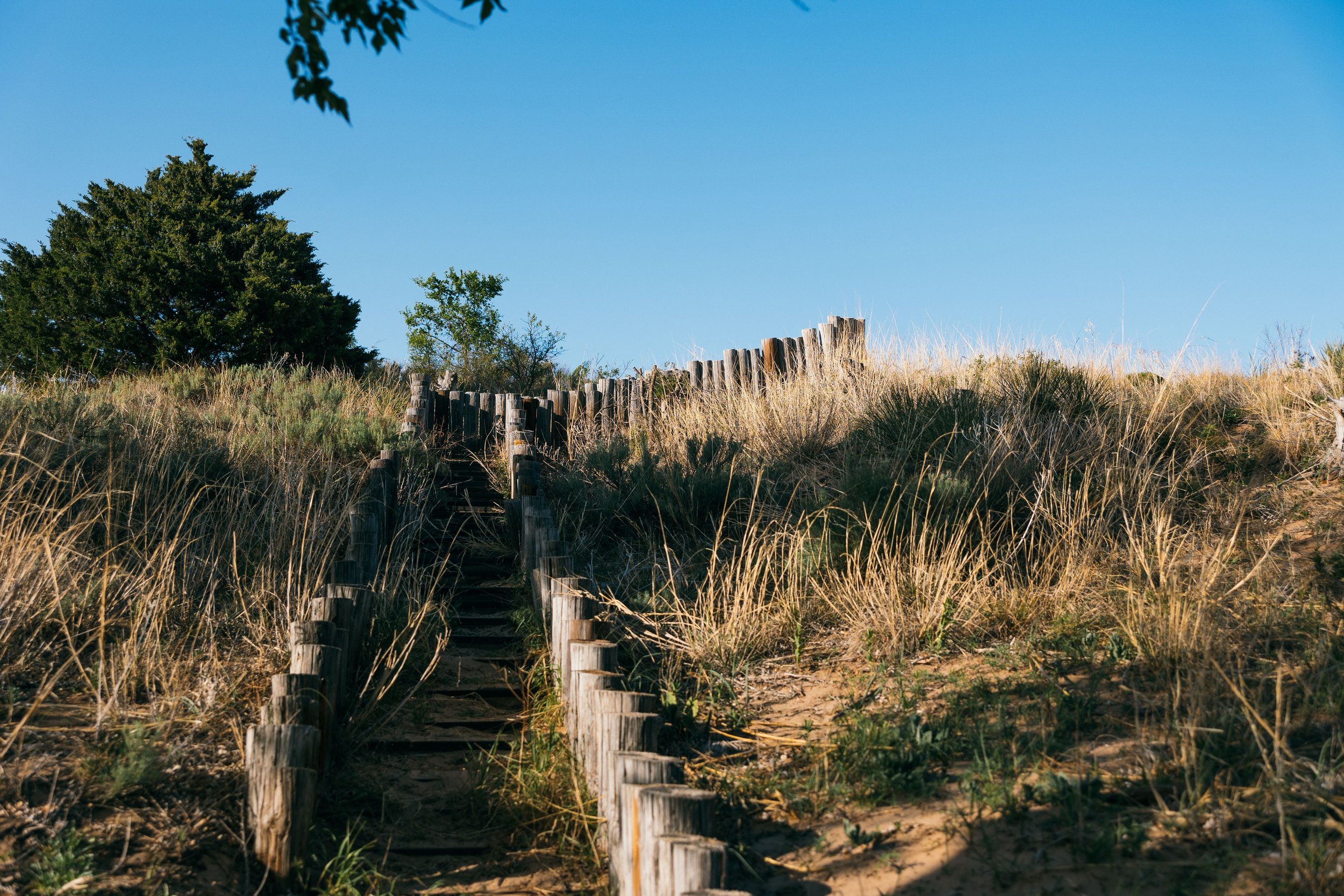

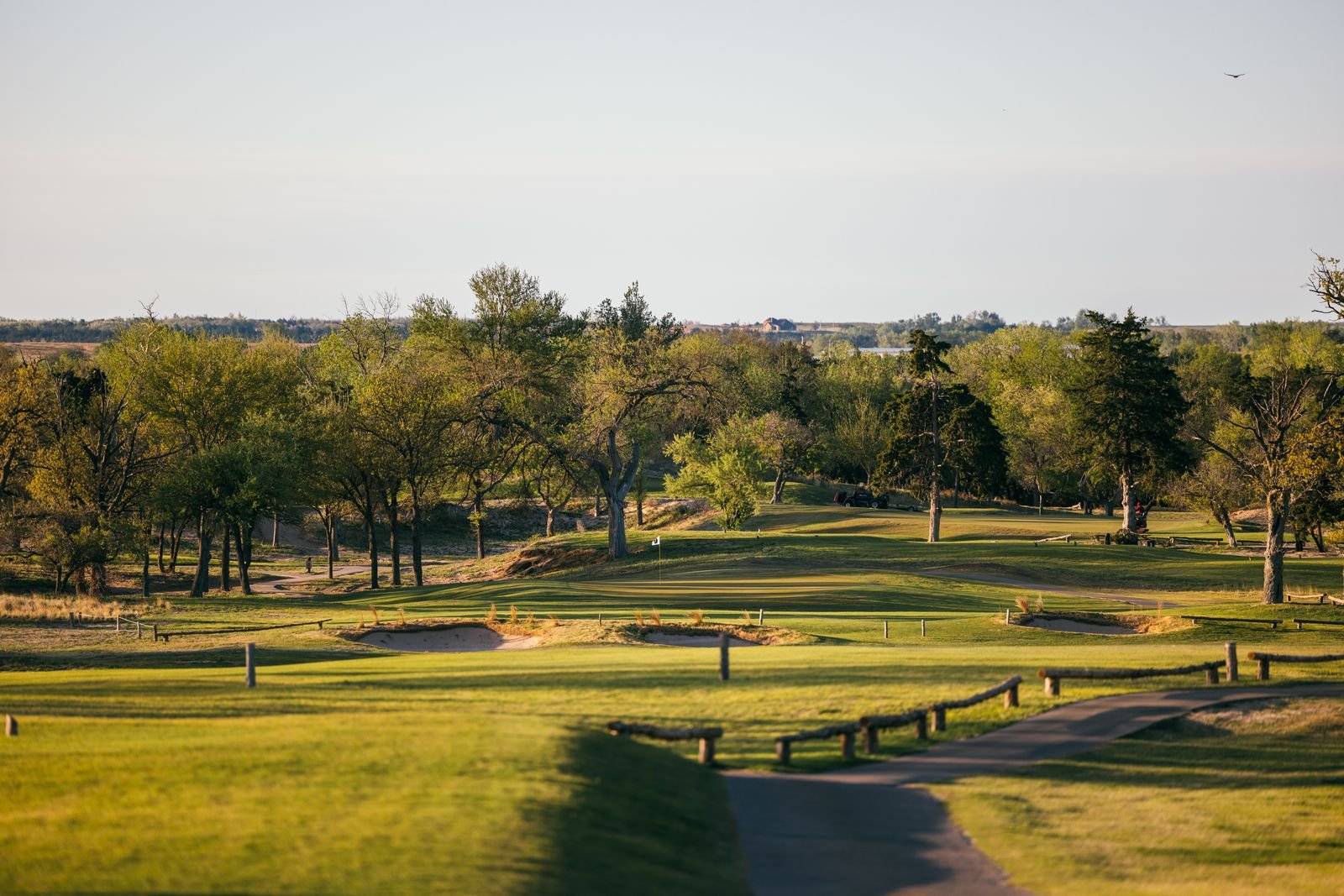
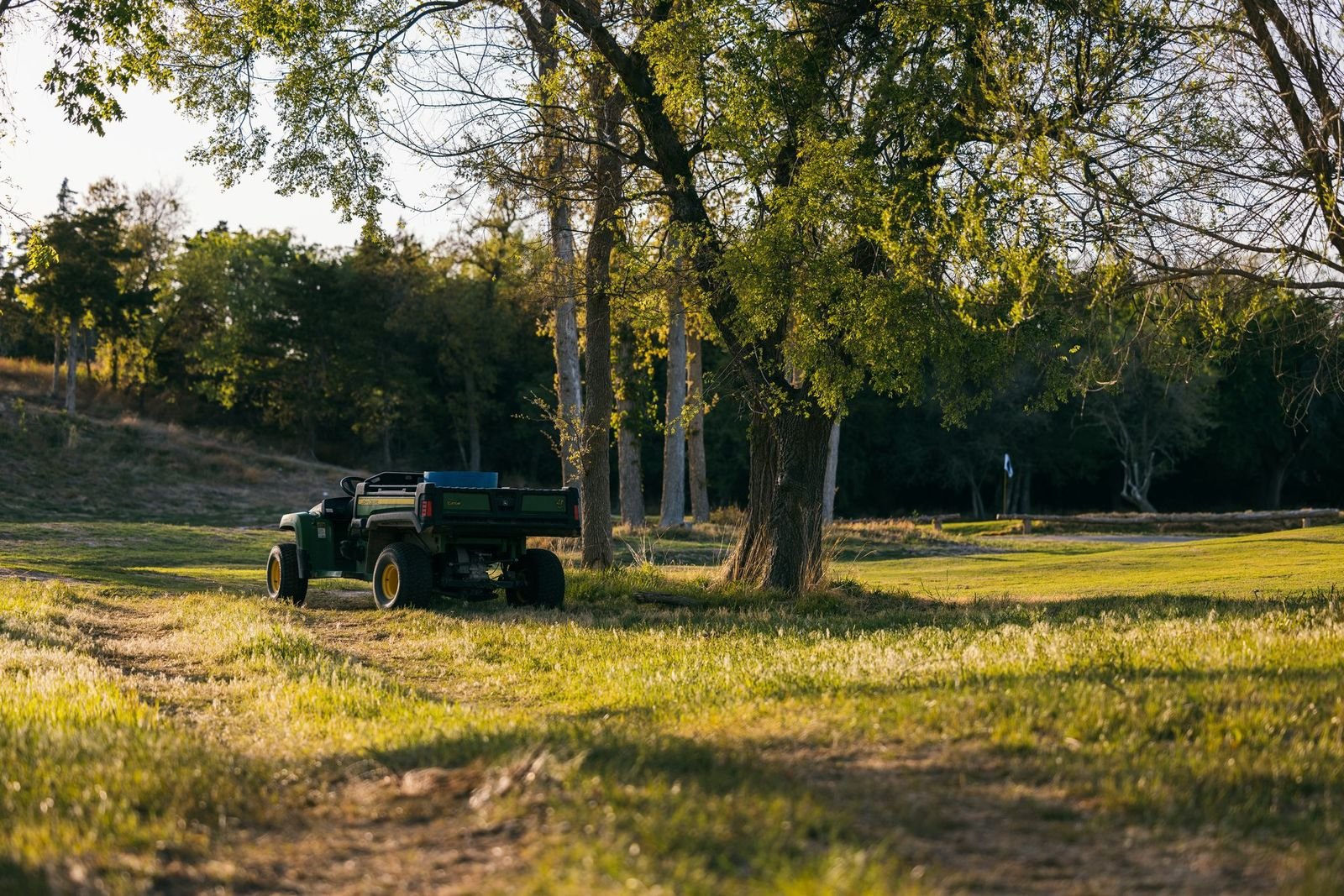
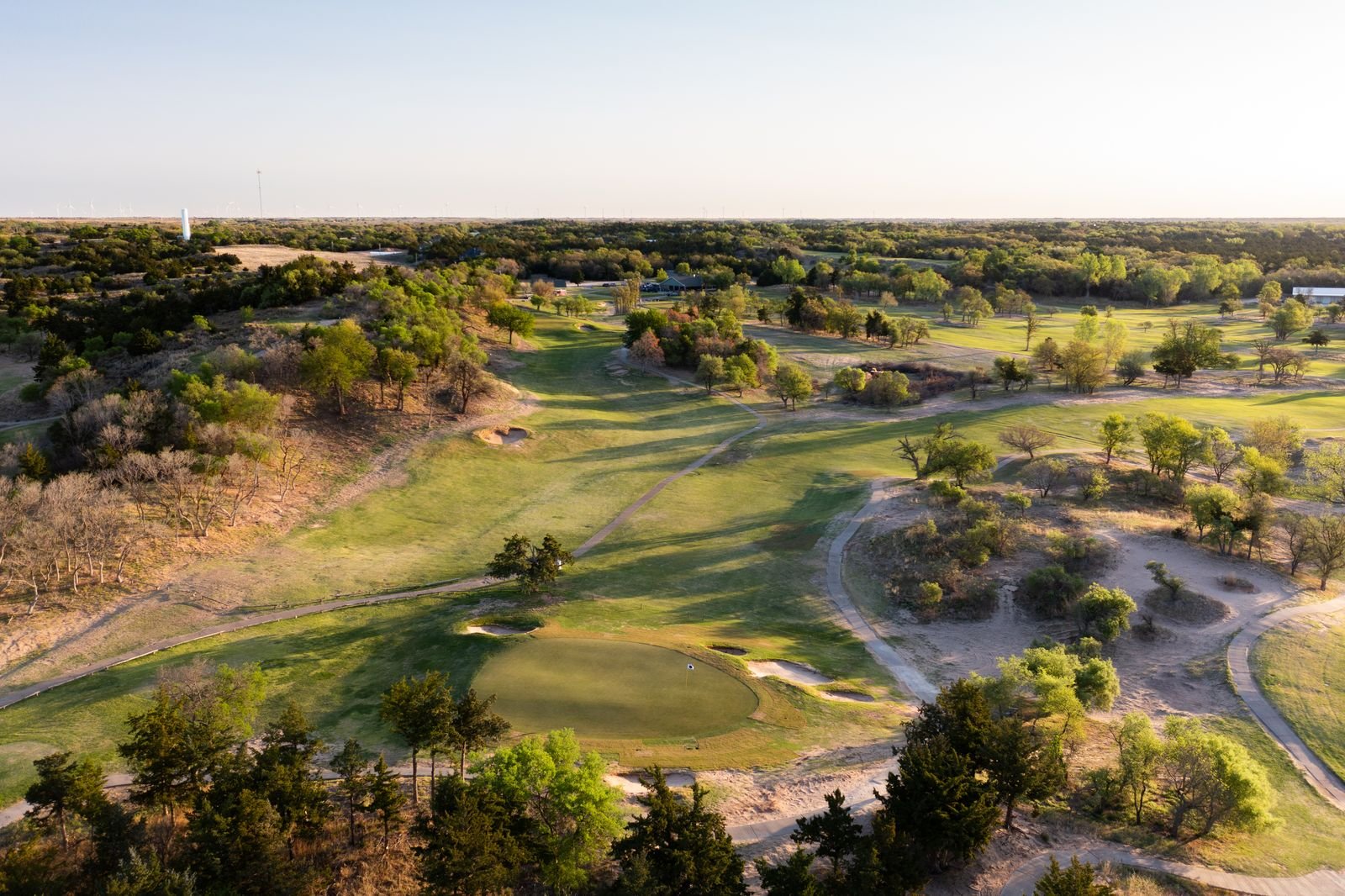
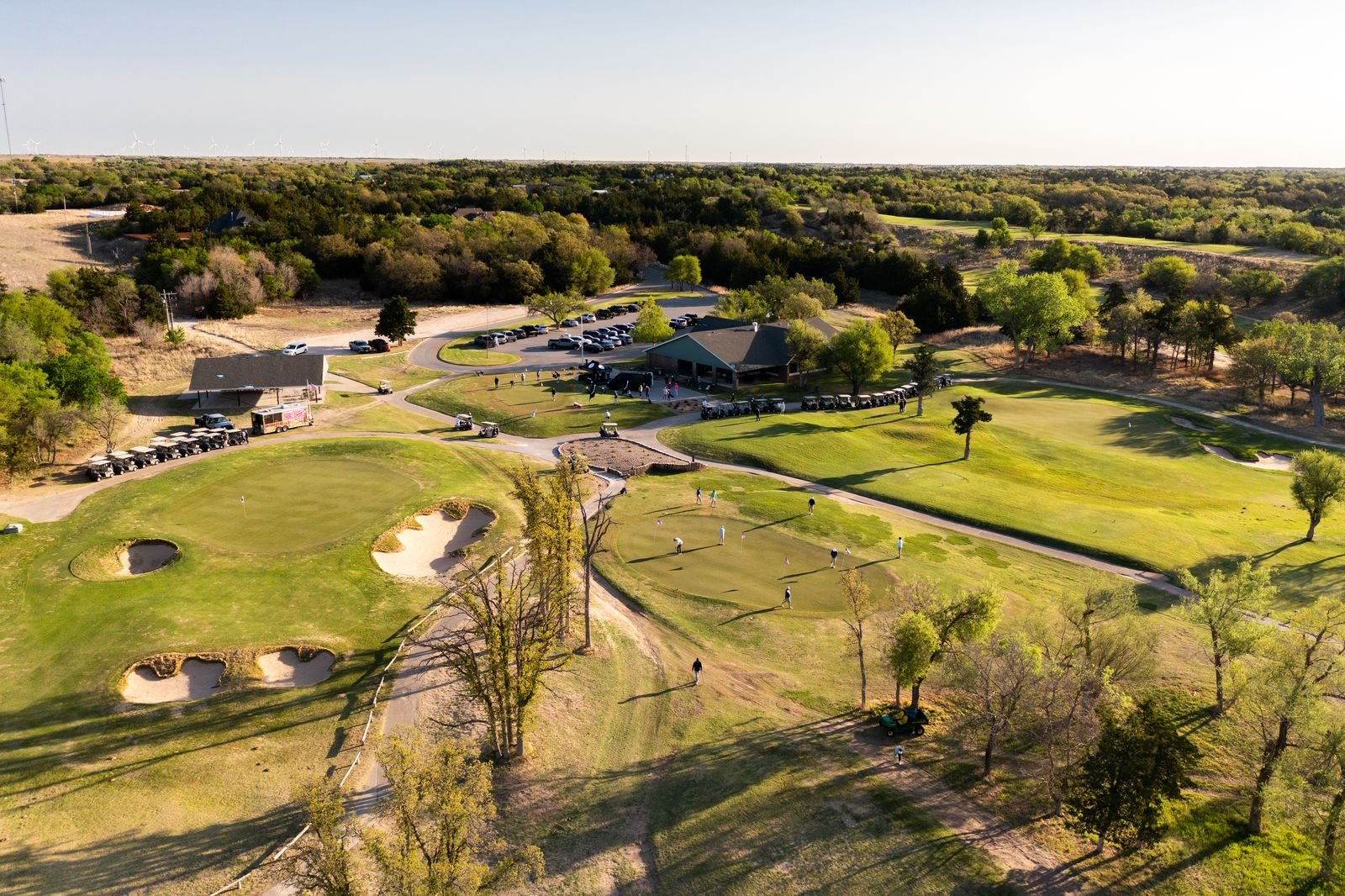

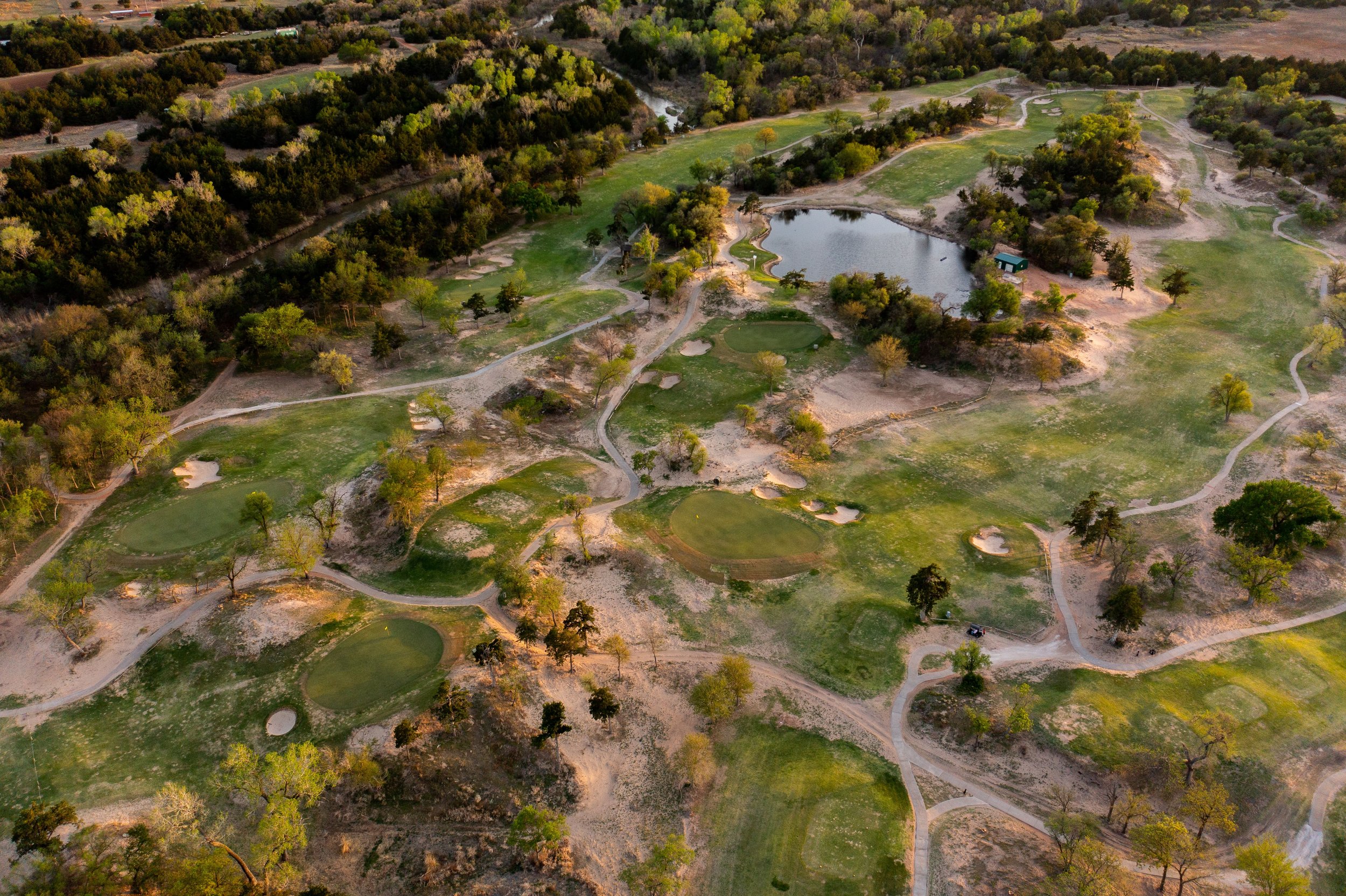


The Entirely Unlikely (But True) Story of Southern Hills Country Club
“The only things we keep permanently are those we give away.” – Waite Phillips
Early sketch of SHCC by Paul Corrubia
Waite Phillips wasn’t about to fork over his money to the two businessmen who approached him about financing a new country club in Tulsa.
This was the Great Depression, after all.
The oilman-turned-banker had already made a name as one of the wealthiest men in Tulsa and - for that matter - all of America. His endeavors alongside brothers Frank and L.E. to build Phillips Petroleum Company before going about it on his own had made him millions, and his impression on the city was everywhere. From his downtown office buildings (aptly named the Philtower and Philcade) to his 72-room Italian Renaissance-style mansion near 31st and Peoria, Waite Phillips had already made his mark on the city.
He arrived in Oklahoma in 1911 at his brothers’ behest. Frank and L.E. had been risking everything for eight years in Bartlesville territory at this point. They drilled their first gusher, the Anna Anderson (named after the eight-year-old Delaware Indian girl who held the land lease) in 1905 and organized the largest bank in town, Citizens’ Bank and Trust, to offset the volatility of their drilling ventures. The Phillips family struck it rich, and Waite wanted his own piece of the pie.
His time in Bartlesville lasted just four years before Waite set out on his own. Moving to Tulsa, he began a career as an individual oil producer. A decade later, he sold most of his holdings to the Barnsdall Oil Company for $25 million.
While he was driven to succeed in his career, his passion was for the land. In 1929, he acquired 770 acres south of Tulsa to be utilized for family recreation and horseback riding. The spread, historically a part of the Creek Nation, covered section 32-19N-13E and section 5-18N-13E along present-day 61st Street and Lewis Avenue. This plot featured dramatic land movement, rising more than 150 feet in elevation in the southeast corner and falling away toward the Arkansas River. A meandering tributary center-cut the property, delivering rich nutrients to the soil beneath.
It was prime real estate at a time when real estate wasn’t prime.
Waite Phillips with his wife - Genevieve - and children - Elliott and Helen Jane at Villa Philbrook.
In 1934, Tulsa businessmen William (Bill) K. Warren and Cecil Canary were two disgruntled members of Tulsa Country Club, an A.W. Tillinghast design northwest of downtown located on the property of prominent Tulsan Dr. S.G. Kennedy. The grip of the Depression had taken hold across the country, and while some Tulsans were insulated to the majority of its effects due to their oil holdings, it was being felt strongly in banking and land ownership. That was the case with Kennedy, who was rumored to announce in the fall of 1934 that once the club’s latest lease on the land expired in 1936, he planned to sell the property.
This would have been a disaster for the club’s current members. What was once a safe haven for Tulsa’s societal highbrow was now on the brink of being shuttered - or worse - flooded by hackers, duffers and ruffians. More speculation arose when members of the Hy Hat Club (Tulsa’s equivalent of the legendary Halcyon Society in Bartlesville, of which Waite’s nephew was a member) began showing up dead on the streets of Tulsa’s posh neighborhoods. Phil Kennamer – the son of a federal judge – was charged with the slaying of John Gorrell – the son of a prominent Tulsa doctor. Kennamer fired two rounds into the back of Gorrell’s head at the intersection of South Victor Avenue and East Forest Boulevard, just a few hundred yards from Waite Phillips’ home, Villa Philbrook. Days later, Sidney Born – the president of the Hy Hat Club and the individual who drove Kennamer to the eventual murder scene – was found dead of an apparent suicide.
Tulsa’s upper echelon was in a panic. One reporter noted, “Have Tulsa’s young been destroyed by their own indulgences? Are they sated and aged before their time? Have they seen and done everything while still in their teens so they must seek in shadowy places for new thrills?”
The same article reported that “one exclusive club for adults sent out a confidential letter to its members asking if they wished to sponsor a series of planned – and supervised – entertainments for Tulsa’s young.”
Those who socialized at the Tulsa Club downtown and golfed at Tulsa Country Club saw a potential opportunity. They formed a plan to merge the two clubs and expand the footprint to include Kennedy Golf Course, a 1925 Perry Maxwell-designed public course adjacent to Tulsa Country Club. This would give members the opportunity to expand their family-friendly activities, including polo, tennis and swimming.
While the group appointed Warren to negotiate a workaround with Kennedy, they made it clear that they weren’t above looking at alternative options. On Dec. 4, 1934, Warren wrote a letter to Phillips, boldly asking the banker to finance a new facility on behalf of the “Tulsa Town and Country Club.” The Kennedy deal nearly happened, but at the last minute for reasons lost to time, the merger fell through and members were left scrambling for other options.
An announcement in The Oklahoma News on December 24, 1934.
Warren knew of Waite Phillips’ property south of town. He knew it was premium land, ideally suited for activities of the day. On Dec. 26, 1934 – two days after it was reported that the Tulsa Country Club would vote on a merger with the Tulsa Club, Phillips summoned Warren to his office to discuss the alternative plan of building a new club on his property. Warren was nervous about facing Phillips alone, so he brought along Cecil Canary for moral reinforcement.
Tulsa businessmen R. Otis Mclintock, Cecil Canary and William K. Warren, Sr.
On the 21st floor of the Philtower – the E.B. Delk-designed gem of the Tulsa skyline, Warren and Canary stepped into Phillips’ cavernous office. A buffalo hide spread across the floor. Chandeliers hung from the arched ceiling. A blue-tiled fireplace lined the wall behind his desk, cluttered with a smattering of letters addressed to the banker and financier.
“Every paper you see here contains a request for money to help start a business venture or support a worthy cause,” Phillips started in on the men. “Not all of the business ventures are worthy of much consideration, Mr. Warren, but yours is ridiculous!”
Bill and Cecil were shocked at the response. Did he not believe in the family values that country clubs offered? Could he not see that Tulsa was starved for wholesome sporting activities? Just when they felt like jumping out the window to spare themselves any more embarrassment, Phillips softened his tone and entered negotiation mode.
“I have a counter-proposal. If your group will pledge to spend $150,000 in two years – one half to be spent the first year to construct the family-type country club you described in your letter, I will donate the three hundred acres you need. However, I will not put up one cent to help build the facilities.”
Warren and Canary left Waite Phillips’ office that day with a formal written offer from the oilman and banker, but little hope that they could actually fulfill his demands.
The letter provided more detail – by January 15, 1935, just 20 days after their meeting, they needed to have 150 commitments of $1,000 each. While both men were considered wealthy by the day’s standards, neither felt comfortable writing a $1,000 check. How they were going to find and convince 148 others to do the same in less than a month was beyond the realm of their imagination.
Another proviso in the letter was where the clubhouse was to be located on the grounds. It stated: “As part of this proposal I stipulate that the main clubhouse must be located approximately in the center of the south line of the acreage used for club purposes. This location was recommended as most desirable by Perry Maxwell when he made a preliminary survey a year or two ago.”
This is the first mention of Maxwell in relation to Southern Hills. It turns out Warren and Canary weren’t the first to approach Phillips with the possibility of building a golf course. In 1933, the golf course architect first proposed to Phillips links on the land. According to Maxwell’s second wife, “He had the rare ability to see a golf course nestled among scrub oaks. He did not like to disturb the land, and it was because he fell in love with this beautiful piece of property that he begged Waite Phillips to allow him to build a course on the land.”
At this point in his career, Maxwell was well-known as a golf course architect. Through his previous banking career in Ardmore, Oklahoma, he knew the Phillips family well. Nearly ten years prior, he designed Hillcrest Country Club in Bartlesville for Frank, L.E. and the prominent oil barons that made up the Halcyon Society. This connection, coupled with his propensity for sticking to a timeline and a budget, made him Waite’s choice for building the golfing grounds of Southern Hills Country Club…if it ever actually got off the ground.
If the project failed, it wouldn’t be for lack of trying. Warren and Canary immediately consulted with Otis McClintock and other interested members from the Tulsa Club and Tulsa Country Club. George Bole, another Tulsa oilman, hosted the first dinner party at his 14,000 square foot Oakwold Mansion catered by John Mayo of the Mayo Hotel.
One hundred and twenty-five prominent Tulsans attended the dinner party and the group elected the first board of governors for the club: Foss Parriott was elected president and S.C. Canary, Rush Greenslade and C.H. Lieb were vice presidents. Jack Padon was elected secretary-treasurer and directors included Bill Warren, Don C. Bothwell, Jack L. Shakely, C.W. Flint, Dudley Morgan and Otis McClintock.
When the dinner party ended, the club had 74 signed pledges…but just three were accompanied by $1,000 checks. All they needed at this point, though, was the signatures. These were the days when a handshake meant something, and they trusted the men who signed pledges to follow through.
By January 14, Bill Warren presented Phillips with a list of 140 men who pledged $1,000 each. Despite being 10 signatures short of their goal, Waite accepted the offer, knowing how difficult this task had been. When the new club was announced, Dr. Kennedy was so upset that he withdrew $600,000 from Phillips’ and McClintock’s First National Bank.
Meetings of the newly formed Southern Hills Country Club board of directors were held in three locations – the Tulsa Club at the corner of 5th and Cincinnati, Foss Parriott’s home near 31st and Lewis and Otis McClintock’s home on the corner of 41st and Lewis.
Don Bothwell, affectionately known to early club members as “Old Rooster,” was selected to be the golf course committee chair. It was he who ultimately tabbed Perry Maxwell to lay out the links – naturally with a nod from Phillips. Within days of the deed being handed over to the club, Maxwell was on-site. Old Rooster was intimately involved in the layout of the golf course, following in Maxwell’s every footstep. One day in early February 1935, the pair were staking off a routing for the 12th hole. Maxwell originally marked the 12th green on the high side of the creek, near the present-day 13th tee. Don leveled off some ground on the approach and whacked a ball that never even sniffed the proposed putting surface. In frustration, Old Rooster asked Maxwell, “Why don’t you put the green down there behind the creek?”
Maxwell studied the potential location for a moment and exclaimed, “Why didn’t I see that before?!”
It was this exchange that led to the creation of one of the greatest par fours in golf.
The iconic 12th green in preparation of the 2022 PGA Championship.
Otis McClintock was tabbed as chair of the clubhouse committee. This was one of the most important roles in the club’s early days, as the clubhouse would provide a central location by which the club’s other activities revolved. To stay afloat, the plan was to open the clubhouse first on the location that Maxwell had stipulated two years before. With this in mind, they were able to open preliminary facilities like the swimming pool, polo field, tennis courts, skeet range and more. These amenities allowed the club to continue collecting dues while the golf course was being finalized.
McClintock had an idea for who would design and construct the clubhouse. A few years earlier in 1932, he was on the hunt for an architect to build his own home. He sought out the recommendation of Waite Phillips, who had recently commissioned E.B. Delk to design “Villa Philbrook,” a 72-room Italian Renaissance mansion. Phillips’ connection with Delk ran deep – the Kansas City-based architect also designed Villa Philmonte on his ranch in New Mexico and the Philtower, his office building downtown.
But when McClintock approached Phillips fully expecting a resounding recommendation for Delk, Phillips said, “I’m going to help you with the selection, for one of the mistakes that I made was that Villa Philbrook is a palace and not a home.”
Ultimately, with the help of Phillips’ guiding hand, he selected two architects – John Duncan Forsyth and Donald McCormick. In 1928, Forsyth had designed the enormous 43,561-square-foot Marland Mansion in Ponca City. McCormick had just completed work on Cascia Hall Preparatory School, not far from Villa Philbrook.
Together, they designed McClintock’s 7,495-square-foot home atop a ridge on the corner of present-day 41st and Lewis. A French countryside design, the family painted the stone exterior a deep red before whitewashing it to expose a delicate shade of pink. The steeply-pitched roof was tiled with maroon shingles. McClintock was so pleased with his home that when he was tasked with finding architects for the Southern Hills clubhouse, he insisted on Forsyth and McCormick.
The McClintock Mansion in 1932. Photo courtesy of The Beryl Ford Collection/Rotary Club of Tulsa, Tulsa City-County Library and Tulsa Historical Society.
Similar to his French countryside home, plans were drawn up for a 17th Century English country clubhouse. The original building stood 12,000 square feet, and that original delicate pink hue that once donned the exterior of the McClintock Mansion has stood the test of time at Southern Hills.
Otis McClintock’s delicate pink can be found on the clubhouse and entrance gate at Southern Hills to this day.
The oil industry was as influential on Southern Hills Country Club as it was on any other organization or aspect of life in Tulsa in the first half of the 20th Century. The club’s first 11 presidents were professional oilmen. It wasn’t until the 12th president in 1948 that the club’s paramount elected position was held by someone outside the oil business.
That man was John M. Winters. A partner at local law firm Conner, Winters, Randolph and Ballaine, John Winters was a founding member of the club. And while he wasn’t directly involved in the oil business, even he couldn’t escape the industry’s influence. Through the Depression, Winters served as lead counsel for many of the city’s prominent oilmen. He was even on the board of directors of Waite Phillips’ First National Bank.
Winters’ impact at Southern Hills and golf’s governing bodies would impact the game for decades. He was fundamental in bringing the U.S. Open to Tulsa in 1958. He served as president of the United States Golf Association in 1962-63 and led the committee that negotiated with the Royal and Ancient Golf Club to unify the rules of golf. He was a member of the R&A, Cypress Point Club and Augusta National Golf Club, where he would personally present the Green Jacket to The Masters Tournament champion on five occasions.
The John Winters Bridge on the 12th hole at Southern Hills Country Club.
Winters was unexpectedly thrust into the spotlight at the 1968 Masters Tournament. When would-be champion Roberto Di Vicenzo signed an incorrect scorecard, he was disqualified from the tournament - giving the Green Jacket to Bob Goalby. Bob Jones, who typically presided over the Green Jacket ceremony at Butler Cabin was feeling ill, so he asked Clifford Roberts and Winters to take over those duties. It was Winters who had to explain the ruling to the world. To make matters worse, it was Di Vicenzo’s birthday.
John Winters explains the ruling against Roberto Di Vicenzo, awarding Bob Goalby the title of 1968 Masters Champion at the Green Jacket ceremony inside Butler Cabin. Starting at the 1:06:45 mark of the final round broadcast.
Even today, Winters’ legacy lives on. His son, Otis Winters, is one of Southern Hills’ longest-standing members. At the club’s first large-scale tournament, the 1946 Women’s Amateur, Otis served as a forecaddie on the seventh hole for eventual champion Babe Zaharias. It was the same year he won the club’s junior championship. In the 76 years since, he has volunteered at nearly every major championship the club has hosted, most recently at the 2022 PGA Championship.
It's because of the tireless efforts of these men who allowed Southern Hills to thrive in those early days. And there have undoubtedly been dozens of members through the decades who have left an indelible impact on Southern Hills Country Club.
While most played more golf, had more dinners and were more involved, none impacted the club more than Waite Phillips. It was his generous offer back on December 26, 1934 – and his strict set of obligations to fulfill it – that set Southern Hills Country Club up for a lifetime of success.
Tulsa Today
Many of the central figures in this story made their mark through the years, whether it was building golf courses or extravagant homes and offices. Here’s an update on a few of these locations.
Tulsa Country Club
Tulsa Country Club in 1929. Photo courtesy of The Beryl Ford Collection/Rotary Club of Tulsa, Tulsa City-County Library and Tulsa Historical Society.
Details are foggy in the years following the failed merger between TCC and the Tulsa Club. Dr. Kennedy would pass away in 1941, but the club remained private and would go on to flourish on the northwest side of downtown in spite of the Great Depression and the accidental shooting of a caddie by the club’s nightwatchman. In the decades since, TCC has hosted NCAA championships, Women’s Amateurs, senior championships and LPGA events. The club celebrated its 100-year anniversary in 2008 and Rees Jones completed a $6 million renovation in 2011.
Tulsa Club
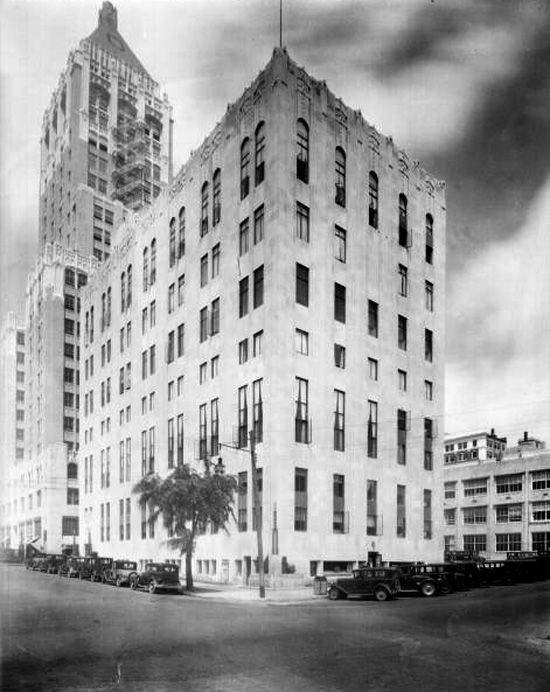
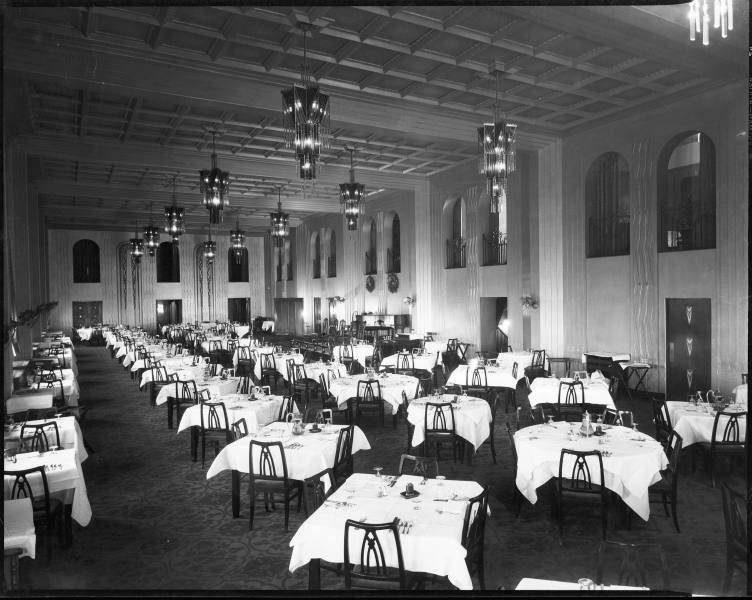
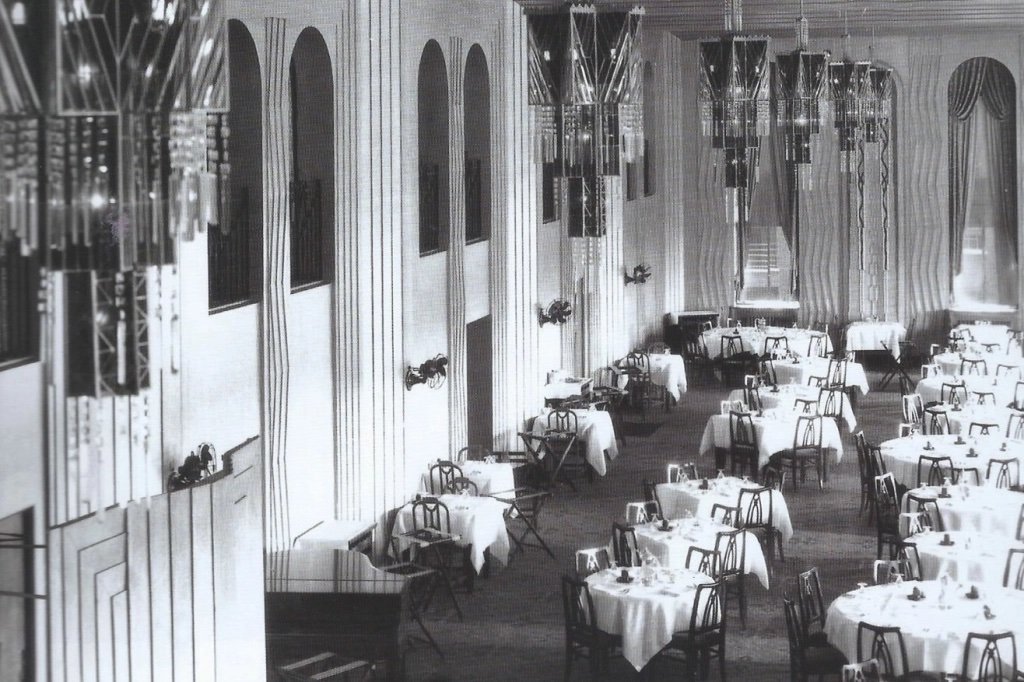
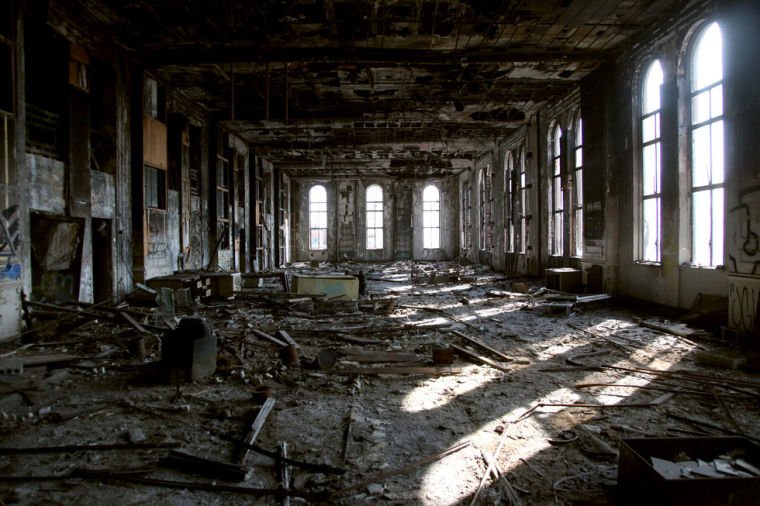


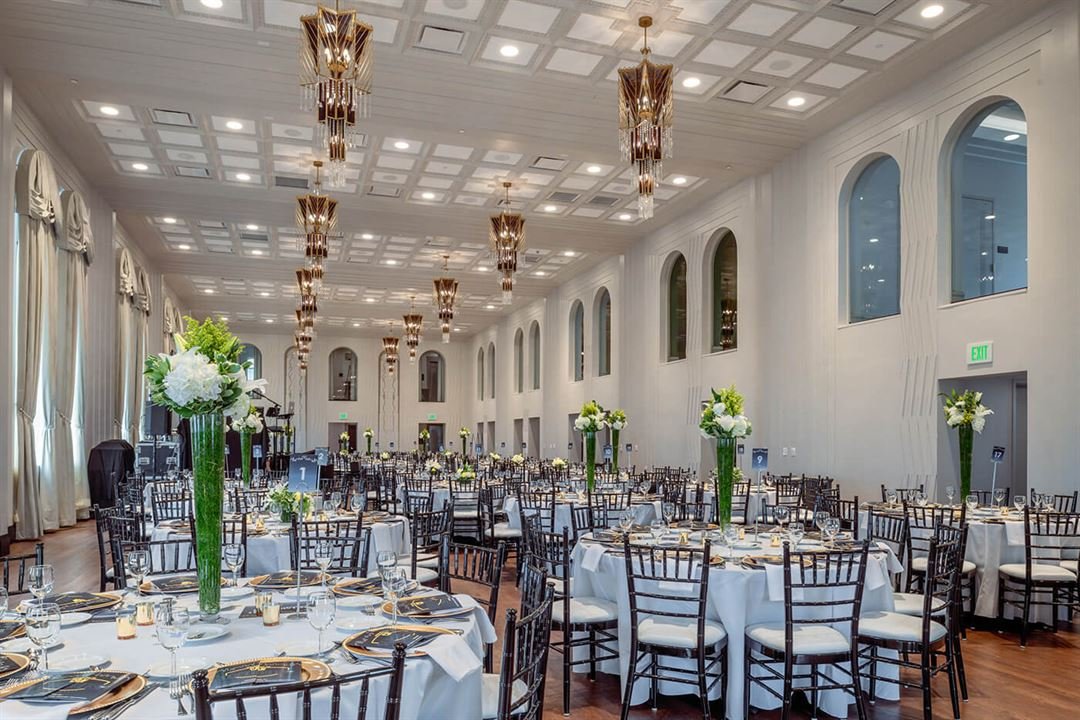
R. Otis McClintock, one of the integral figures in this story, founded the Tulsa Club with three other businessmen in 1923. They first met in a boarding house across from the original Central High School, then in the basement of the Kennedy Building (built and owned by Dr. Kennedy). The Tulsa Club building was designed by renowned architect Bruce Goff and constructed at East 5th Street and South Cincinnati Avenue in downtown Tulsa in 1927, where it served as the home of both the Tulsa Club and Tulsa Chamber of Commerce for decades. The Tulsa Club ceased to exist in 1994 and the building fell into disrepair. The building was saved by investors and today houses the luxurious Tulsa Club Hotel.
Kennedy Golf Club
The Perry Maxwell-designed Kennedy Golf Club was Tulsa’s first public golf course, established by Dr. Kennedy’s son, James A. Kennedy. James was a four-time winner of the Oklahoma State Amateur. Famous gangster Pretty Boy Floyd once held up a day laborer to change the tire on his sedan just outside the golf course. Kennedy Golf Club closed during World War II. The two aerial photos are taken in 1939 and 1943, respectively.
Philtower


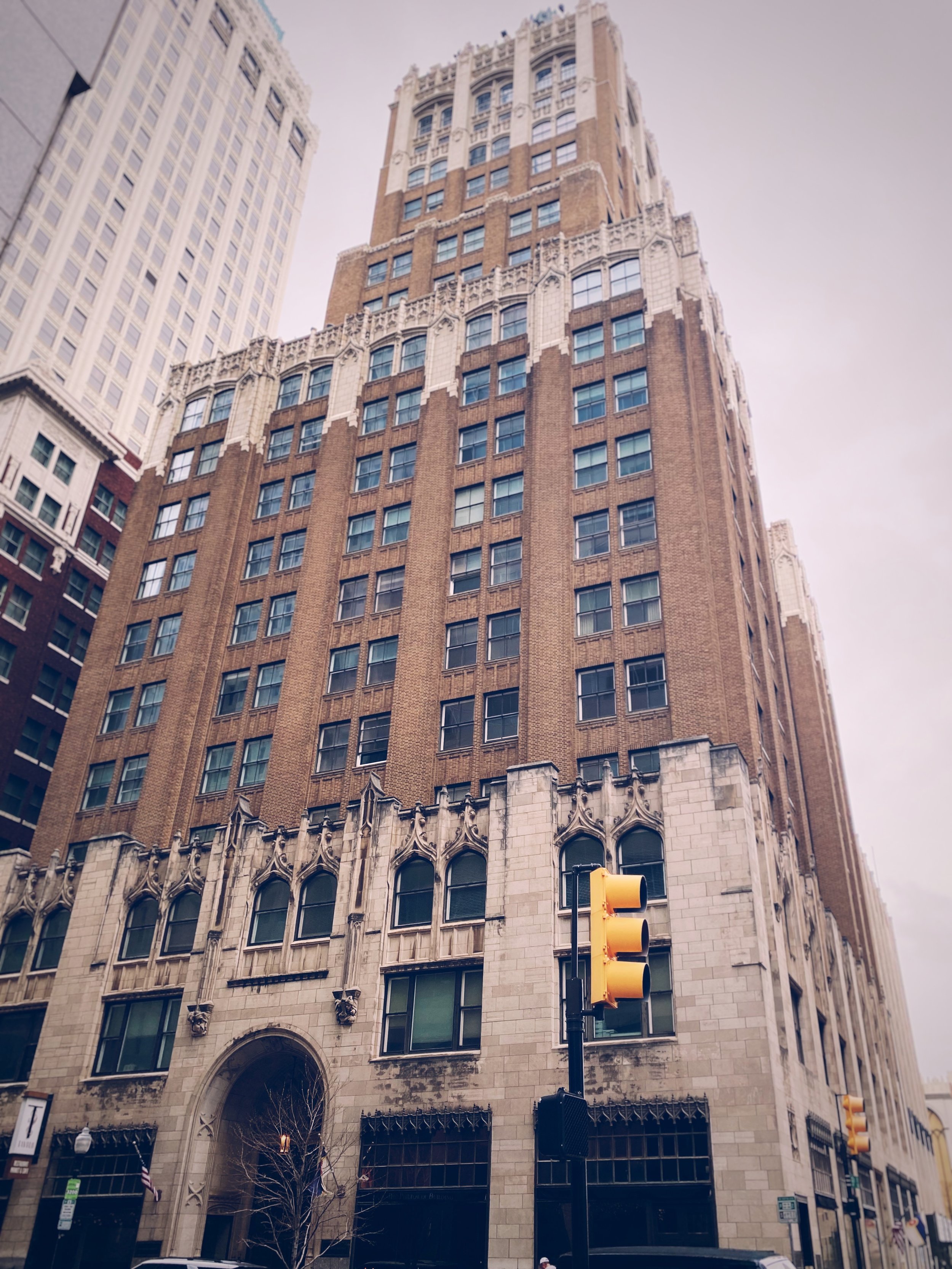


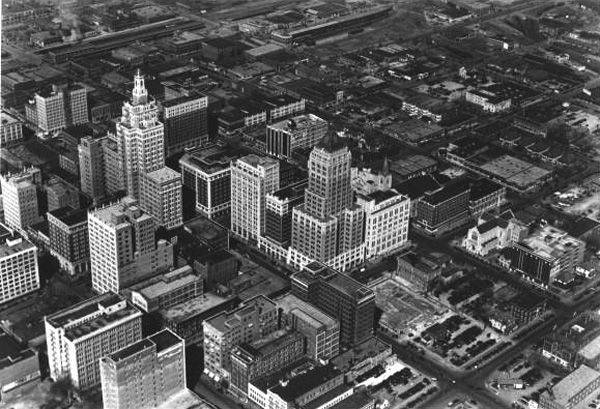
Edward Buehler Delk designed the Philtower in 1927. Topping out at 323 feet, it stood as the tallest building in Oklahoma for two years. Waite Phillips made his office on the 21st floor of the building. Today, another Tulsa businessman offices in the space and spent more than $1 million to painstakingly restore the office to its former glory.
Villa Philbrook
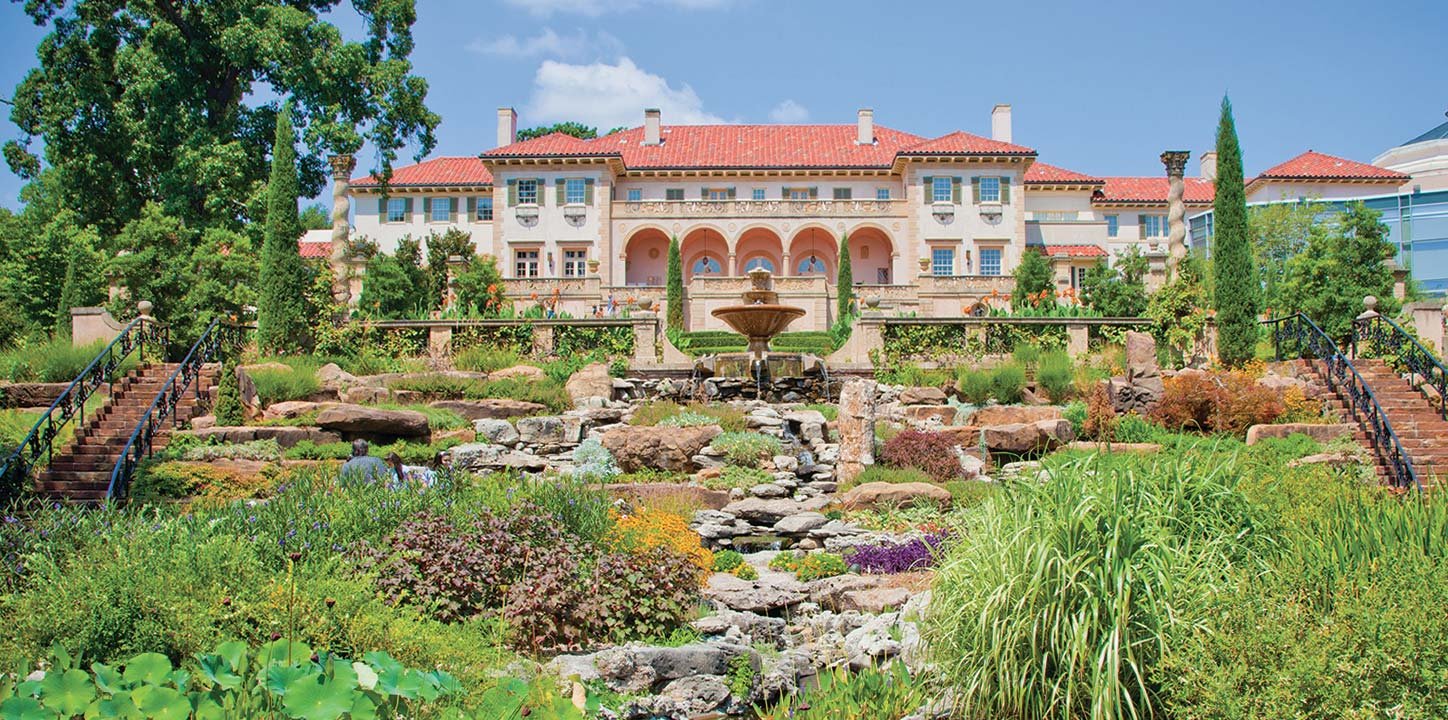
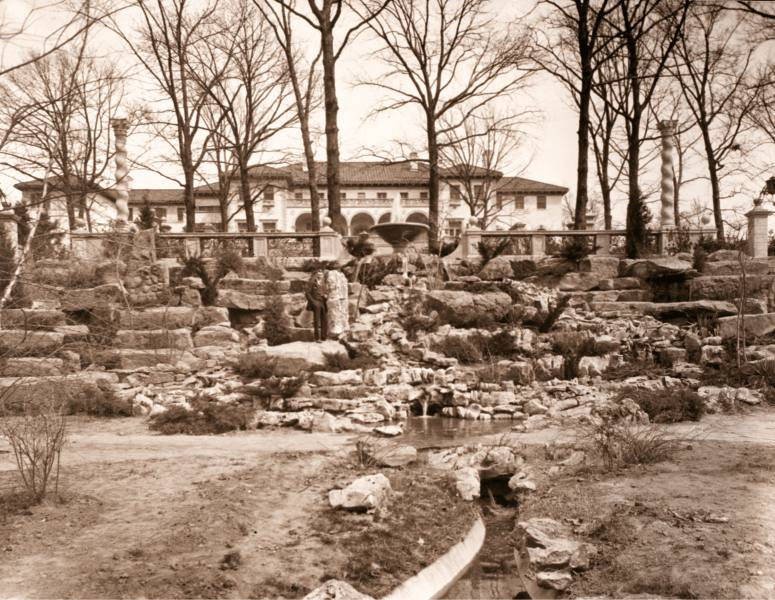
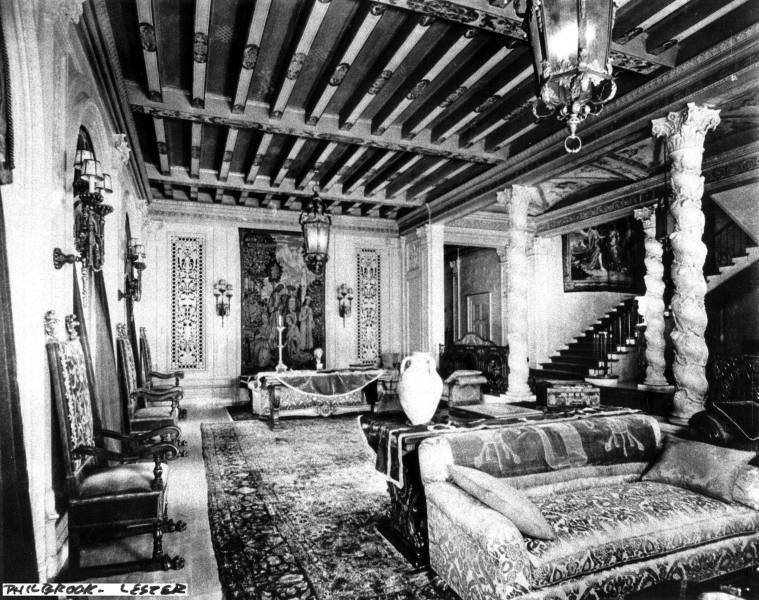
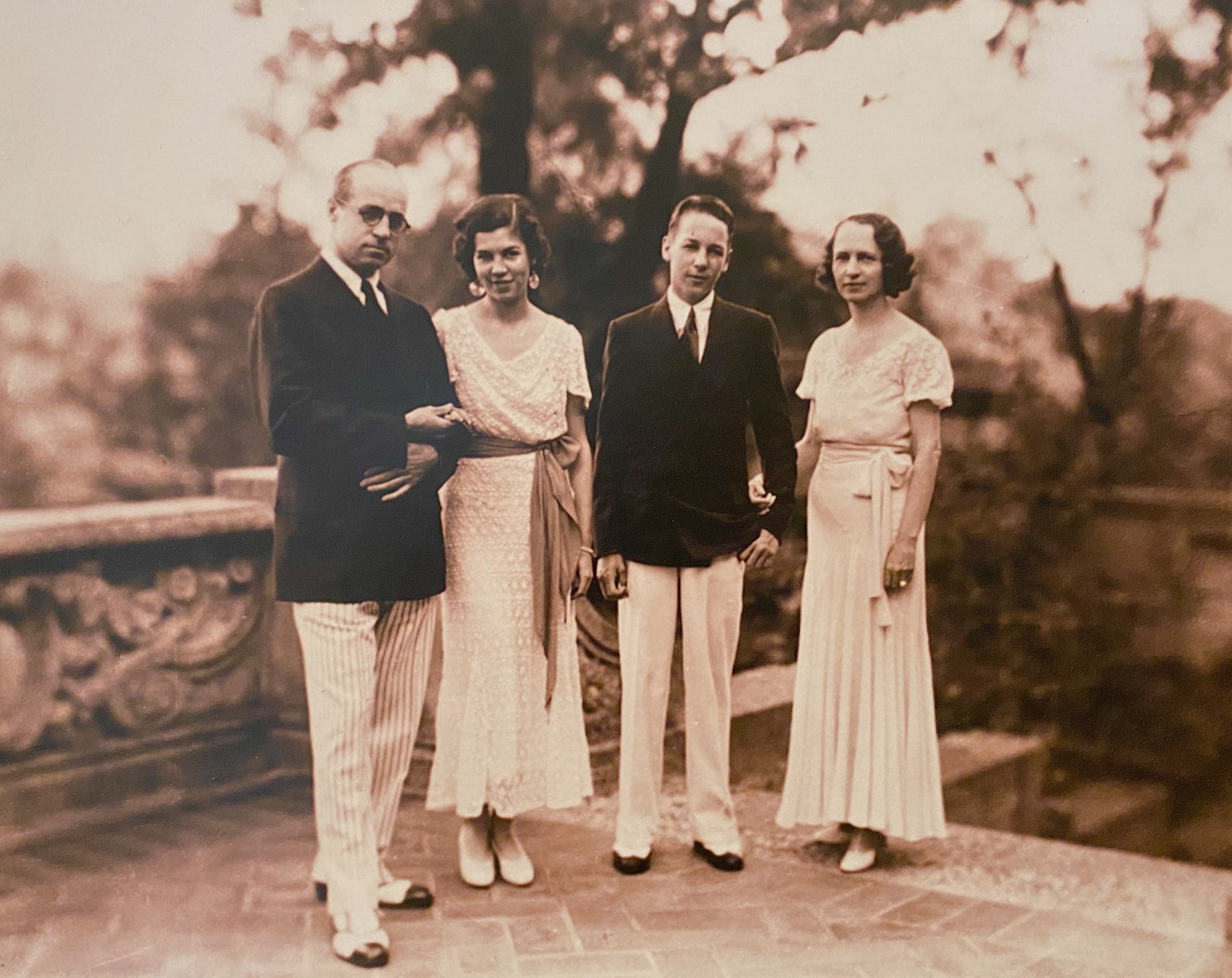
A 72-room mansion also designed by E.B. Delk for Waite Phillips and his family. When it opened in 1927, they hosted a housewarming party for hundreds of friends. Will Rogers, who attended the event, said, “I’ve been to Buckingham Palace, but it hasn’t anything on Waite Phillips’ house.”
The Phillips lived in the residence for a little more than 10 years before giving it to the city of Tulsa to be used as a museum and art center.
Bole Home
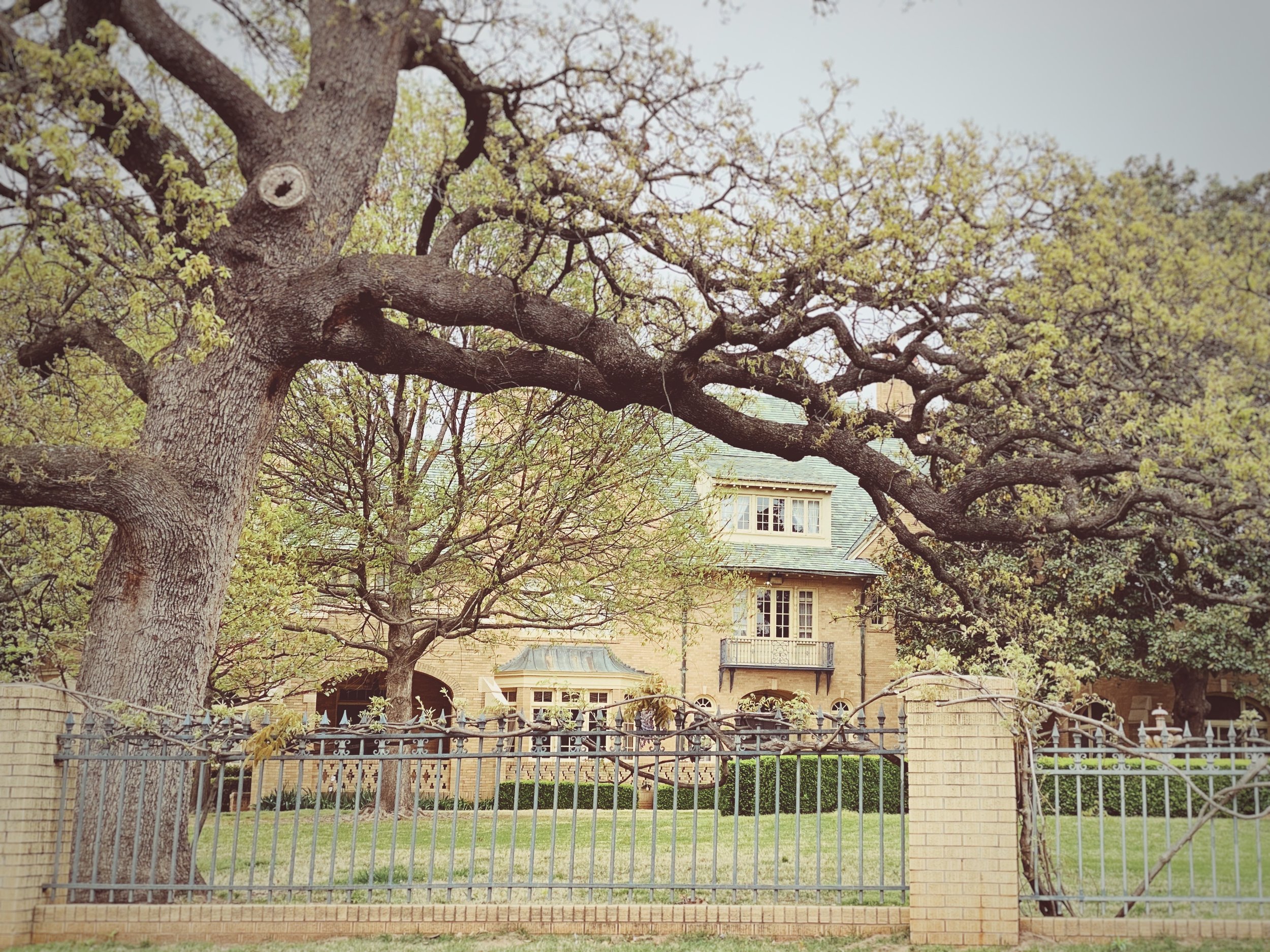
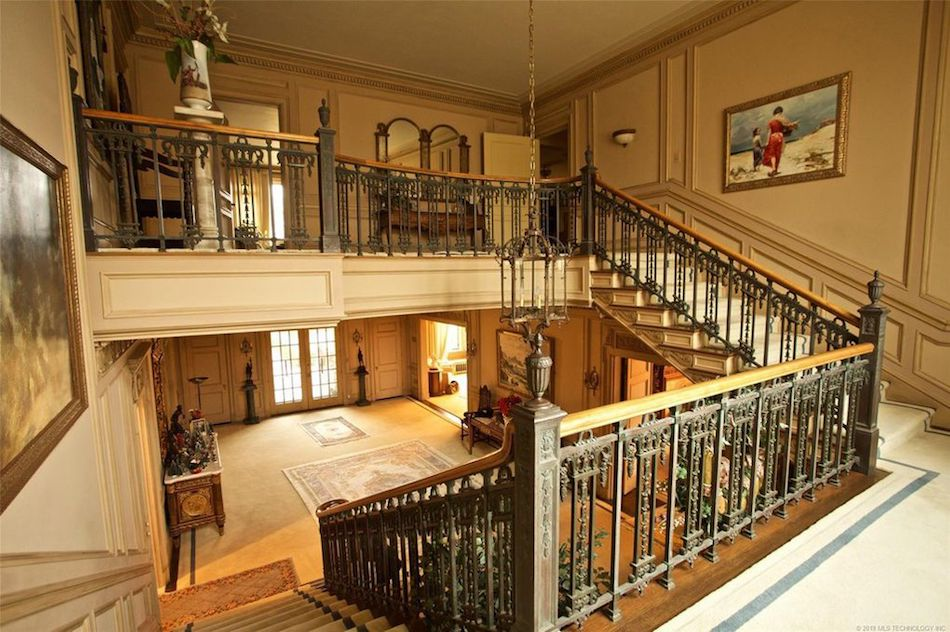

The first financial backers of Southern Hills Country Club were pursued by Warren, Canary and the committee at a dinner party hosted by George Smedley Bole, an independent oil operator, at his home at 4133 S. Victor Court. Named Oakwold Mansion, the home boasts nine bedrooms, nine bathrooms and nearly 14,000-square feet of living space.
Parriott Home
Foss Parriott, the first elected president of the club, hosted early meetings at his home in the historic Forest Hills neighborhood near 31st and Lewis. Built in a Colonial Revivalist style, the home features nine bedrooms, 11 bathrooms and nearly 13,000-square feet of living space.
McClintock Home

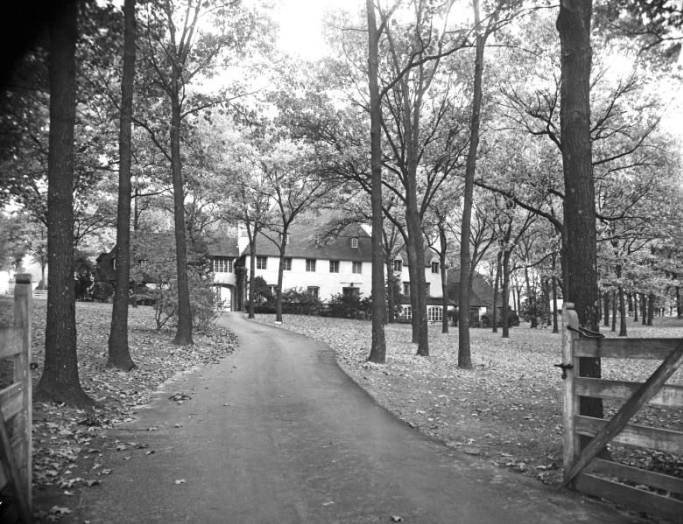
The 1931 French countryside estate designed by John Forsyth and Donald McCormick. The home included unique features, like an art-deco false fireplace with a built-in radio and a downstairs club room reminiscent of an old English pub. The home offers 7,500-square feet of living space. The delicate pink-hued exterior was sadly lost in the following days, but has since been painstakingly restored.
The Oklahoma Kid
The travels and triumphs of Bryan Karns, championship director for the 2022 PGA Championship.
On a warm, sunny day late last May, Bryan Karns sauntered over to a gaggle of reporters standing atop a small bluff in front of a field of American flags. They were there to speak with Lt. Col. Dan Rooney – founder of Folds of Honor – who was soon arriving to announce a partnership with PGA HOPE.
While they waited, they found a young championship director who spends his career behind the scenes, yet has a knack for stealing the show. He answered on-the-record questions in a casual, off-the-record sort of way. He didn’t hesitate or glance over to a publicist behind the lenses of his Ray-Ban Wayfarers. He gave time to each journalist, giving the scrum a one-on-one feel. And when the media time was done, he disappeared on his golf cart – presumably off to court another group of dignitaries somewhere on this 320-acre palace he calls home.
You see, here’s the thing about people who hold the title of “Championship Director” for the PGA of America. These are the guys and girls who have the golden ticket - a conspicuous “All-Access” logo on their credentials, sporting hats and shirts that you’ll never find in a souvenir shop and jetting around world-class courses in their topless Club Cars while the golf world graciously takes in the fruits of their labor. They’re golf royalty when it comes to the PGA Championship and the Ryder Cup.
It sounds badass – and much of it is – but there’s another side to this job you need to know about. What that All-Access badge or the media recognition or the rubbing of elbows with some of the most powerful people in golf don’t reveal is the tireless (and often tiresome) work they put in over the last two years and beyond. They don’t show the double-wide trailer they call an office tucked away in the back corner of some of the most coveted acreage in the country. And they don’t offer a glimpse into the scheduled moves across the country every two years to start over and do it all again.
That's why here and now, Bryan Karns is the luckiest man in the world.
You see, Bryan is an Oklahoma kid. Diplomas from Stillwater High School and Oklahoma State University hang on his wall. His wife is an Owasso Ram. And for someone who’s spent an entire career moving his family to Chicago and Washington D.C. and Louisville (twice) and Rochester, New York and French Lick, Indiana, it’s nice to be back home.
Golf wasn’t necessarily in the stars for Bryan growing up. He did play junior golf at Stillwater Country Club, a 1966 Donald Sechrest design. In 1994, his dad brought him to Southern Hills for the 76th PGA Championship.
“That was a pretty seminal moment for me growing up,” Karns said.
His closest connection to the game growing up came from his uncle, Lynn Blevins. Coming from a generations-deep Oklahoma State family, Blevins was the oddball – signing with the University of Oklahoma to play golf. That set up a career in the game – first coaching, then managing golf courses, then coaching again. His stops have included Regis University, Rogers State University, the University of Florida, the University of Iowa and his very first job – coaching his alma mater for three seasons beginning in 1979.
“He’s always been a PGA professional so it’s cool for me to have always had a connection to an actual PGA pro.”
But Karns was never good enough to play competitively (his words). An amateur sportsman in his younger years, golf just wasn’t a natural fit. When he enrolled at Oklahoma State University, though, he knew a career in athletics was calling his name. At the time, the school didn’t offer a sports management or sports media program, so Bryan studied the next best thing – journalism.
“My first real experience working in sports was as a sophomore at OSU. I had a deal with a couple of local papers. When their teams would come play in Stillwater, they would call me and I’d go out to take a few photos and write a recap for them.”
That initial experience led to a position with the university’s century-old newspaper, The Daily O’Collegian. Whatever high he was riding from seeing his byline in the school paper, it was swiftly and certainly squashed with his first assignment.
“I started out on the beat for Mike Gundy’s first spring and first season as head football coach. And that was a nightmare season. As much as I was a homer, it became increasingly difficult to write objective storylines.”
(In 2005, Oklahoma State finished dead last in the Big 12 Southern Division and suffered seven defeats in their last eight games, including a loss to the Texas Longhorns after leading the eventual national champions 28-12 at halftime.)
“It’s such a cool thing to me though,” Karns remarked. “If you’re an O’Colly writer, the access you get and confidence you get for being able to walk into a press room or go up to an athlete or coach and ask questions – that’s huge.”
His time with the Daily O’Collegian led into a position as a student sports information director for the OSU Athletics media relations office. It was here that Bryan seriously began considering career opportunities in sports.
“As a student SID in the summertime, there’s not much to do and I was looking to add to my résumé, so I found an internship posting outside of the Classroom Building on campus advertising a hospitality internship with the PGA of America.”
By this time, it was 2007 and the PGA Championship was scheduled to be back at Southern Hills.
“Part of what was so incredible about ’07 was you’ve got Tiger winning and the energy and the atmosphere was just unreal. You know, whoever is going to win is great, but Tiger is just different. When Tiger is associated with your club, it just means a little bit more. When he won, somehow I ended up in the ballroom when he was doing his Champions Toast and that was when I knew that I needed to keep doing this.”
When he went back to Stillwater that fall, he knew he wanted to stay in touch. He worked his way into a year-long gig at the 2008 Ryder Cup at Valhalla, where a rag-tag bunch of Americans (J.B. Holmes, Kenny Perry and Anthony Kim, anyone?) pulled off a miracle over a world-class European team.
Following that eye-opening experience in Louisville, he returned home once more to finish his master’s degree at Oklahoma State before taking a job with the Tulsa Shock – the WNBA franchise relocated from Detroit. With legendary head coach Nolan Richardson at the helm and Olympic gold medalist sprinter former UNC Tarheel point guard Marion Jones coming off the bench, the Shock won six games in their first season…out of 34.
“That’s a great talking point when you’re talking to people from Tulsa. They’re like, ‘you remember the Shock?!’ It was a grind but it showed me here’s one extreme and then there’s the other when it comes to job satisfaction. I remember when I interviewed to get back with the PGA, the guy that hired me said, ‘If you can sell that product in Tulsa, you can probably sell anything.’”
During the second half of 2010, Bryan was hired on to work the 2012 Ryder Cup. Following the American team’s meltdown at Medinah, he returned to Louisville to begin working on the 2014 PGA Championship in a corporate hospitality/marketing role. It was on the grounds of Valhalla Golf Club that he decided to work toward becoming a championship director.
“If you go and talk to most people on our staff, their goal professionally is to become a champ director. And they come from all different backgrounds. You have to be willing to be out in front and speak publicly. Not everyone is totally wired for it, but that’s the goal.”
After a year of selling corporate hospitality, the PGA of America signed a deal with French Lick Resort in Indiana to host the 2015 Senior PGA Championship. Louisville was the closest market to the resort and the team had done so well selling out Valhalla that Karns got his shot. He successfully operated the event in a town of 1,500 people and earned the same role for the 2017 Senior PGA Championship at Trump National Golf Club in Washington D.C.
“Both of those events were totally different for several reasons, but both were great because it prepared me for so many things. In the spring of 2017, I was kind of at a crossroads. Once you get into the champ director role, you say ‘alright I’m happy to do a Senior PGA, but now I want to do a PGA.”
The timing for Karns couldn’t have been better. A week after Bernhard Langer squeaked past Vijay Singh at Trump National, the PGA of America announced that Southern Hills Country Club would host the 2021 Senior PGA Championship and a PGA Championship at some point by 2030.
“That really kind of served as a boost to me because I knew that I was going to be able to come home in a few years, and in the meantime, we got to go to Oak Hill in 2019. Rochester and Oak Hill are fantastic. One of the best memberships I’ve ever been around.”
After a successful two-year stint in New York, the Karns family packed up and moved home. Little did they know what was to come.
The Karns family packed up and returned to Oklahoma - and Southern Hills Country Club - after the 2019 Senior PGA Championship.
Tulsa was hoping for a PGA Championship sooner rather than later. When the 2021 Senior PGA was announced, the governing body also promised a PGA Championship by 2030. Karns, who had moved his family to Tulsa to start work on 2021, was realistic about Tulsa’s chances.
“I know everyone here wanted it to be as soon as possible, but everything was pointing toward 2030,” Karns said.
He arrived in Green Country with the PGA of America constituency for their customary initial site visit for the Senior PGA Championship in 2018. They met with Southern Hills general manager Nick Sidorakis, staff and members of the club to discuss logistics and planning. By the end of the visit, the championship team was able to put together a preliminary corporate budget. Southern Hills was so excited that Sidorakis mentioned the possibility of going on sale before the end of 2018.
“I said, ‘Nick, it’s way to early. It’s like, so early it’s absurd,’” Karns said.
The issue is hyping the event too soon and losing your leverage with the community before the event actually happens. Sidorakis asked Karns to trust him, though.
“I told him, ‘Nick, if you can line up ten meetings, I’ll come back down there.”
In a week, Sidorakis had a full itinerary for Karns. Ten meetings later, they had sold seven chalets and three suites.
“That never happens,” Karns said. “We had such tremendous corporate momentum.”
Over the course of the next year, it looked like Southern Hills was primed for one of the most successful events in senior golf major championship history. Then the world stopped.
There’s not much more to write about COVID-19 that hasn’t already been written. We remember the details vividly. On March 11, 2020 NBA superstar Rudy Gobert tested positive for COVID-19. Within minutes, his team’s game against the Oklahoma City Thunder was postponed.
Within days, the entire world was shut down.
Planet earth was living in a scene from Contagion.
No one knew what was happening. No one knew if they were safe. No one knew if life would ever be the same.
The PGA Tour Champions shut down for five months. The 2020 Senior PGA Championship – scheduled for May of 2020 in Benton Harbor, Michigan – was canceled. Even into the first weeks of 2021, Karns and his team were scrambling in Tulsa.
“We got to January and were thinking this is brutal because everything we wanted to do from a tent standpoint, the City of Tulsa Health Department wouldn’t sign off on it,” Karns said. “There were also companies who were saying they couldn’t invite people because of their new corporate entertainment policies.”
Then January 6 happened. Call it what you want – we’re not here to get political – but there was an immediate backlash on properties owned by the former POTUS. Within 96 hours, the PGA of America announced that the 2022 PGA Championship would not be played at Trump National Golf Club Bedminster in New Jersey. And that’s when Karns really got to work.
“The first moment (it was announced), I picked up the phone and called Nick (Sidorakis),” Karns said. “Here’s this perfect pivot. We can go to all these companies that have committed a record amount for the Senior PGA Championship and say, ‘if we were able to get the PGA Championship, would you commit?’ This would allow us to move a lot of hospitality to 2022 and give us an opportunity to offer some hospitality at the Senior PGA in the form of open-air structures and things like that. And within 48 hours we had enough commitments that when the potential venues were being evaluated, it was a no-brainer.”
By the end of the month, we would know the fate of the 2022 PGA Championship. Before Tiger’s wreck; before Phil’s triumph at The Ocean Course and subsequent self-imposed downfall a handful of months later, Southern Hills was once again in the spotlight of the golf world.
Karns shows off the Wanamaker Trophy during a football game at his alma mater, Oklahoma State University.
In the 14 months since that announcement, Karns and his team have pulled off the unthinkable. They successfully completed a Senior PGA Championship amid a throng of health and safety hurdles thrown their way. They planned an event in less than a year and a half that will bring in more than $140 million economically to the City of Tulsa. And they played the storylines to perfection.
Will Tiger return to the site of his 2007 PGA Championship victory? Will Phil defend his Wanamaker Trophy as the oldest PGA Champion in history? Will one of the Oklahoma boys shock the world and win in their home state?
However it plays out, you know Karns will be somewhere out there living his dream with a pair of Wayfarers and a soft smile on his face. Because no matter how many people show up or who holds the Wanamaker on Sunday evening, he knows that he’s home.
“You go to a lot of places out there and people are like, ‘yeah that’s my hometown, but I don’t get back much.’ I grew up in Stillwater. I went to Oklahoma State. For me, being able to take this and help grow that brand of being Oklahoman – that’s special to me.”
Karns celebrates with his wife, Ashlie, after a United States victory in the 2020 Ryder Cup.
The Baron of Bartlesville
Frank Phillips never set a course record, but his influence has no doubt influenced the game of golf along the banks of the Caney River.
On a bluff above a small lake in far eastern Osage County, a simple structure built from native rock is cut from the hillside. Quaint and unassuming, it’s not until the thick bronze door swings open that one realizes the opulence and once-lavish taste of those who permanently reside there. The 12-inch-thick steel-reinforced walls are adorned with thousands of colorful mosaic tiles. Columns of Italian marble rise to the ceiling. This is the final resting place of Frank Phillips, a serial entrepreneur and the subject of this story.
By trade, he was identified by many titles. Barber. Banker. Oil Baron. By interest, he was a conservationist, an aviation enthusiast and a civil servant. But it was the names given to him by others – “Wah-Sha-She Hluah-Ke-He-Kah” by the Osage and “Uncle Frank” by the community – that he chose to be remembered by.
Much has been told about the life and legacy of Frank Phillips in Oklahoma. About his early employment as a barber, first in Iowa, then Aspen, then Ogden. About his rise to power drilling black gold out of the Osage hills. About his partnership with brothers L.E. and Waite on various enterprises. About the legendary Phillips Ranch southwest of town, a 17,000-acre domain filled with exotic species from every corner of the earth.
Our story begins not with the rise, but in the prime of Phillips’ wealth and influence.
As the earliest days of oil boomed and Bartlesville swelled, the need for recreation in the area became apparent. The first mentions of a country club came in early 1908, when E.F. Blaise formed a committee of interested parties. Judge J.J. Shea was appointed to organize the club, with stock dues valued at $100 per share. On December 11, 1908, the Bartlesville Country Club was incorporated, with plans to lay out golf links the following year. Frank Phillips was elected as an inaugural officer of the club. Almost immediately, however, the club ran into roadblocks. By March of 1910, the officers and membership had still not settled on a permanent home. This matter would linger another year before firm plans were decided on.
It wasn’t until March of 1911 that L.E. Phillips claimed, “I have found the most available spot in the country for a country club.” Upon his suggestion and the approval of the club’s officers, plans for the first golf course in Bartlesville were laid. An organization comprised of stockholding members purchased a parcel of land from Pawhuska’s Paul Mason. The allotment was three-quarters of a mile west of the Osage / Washington County border line, on the Pawhuska Road (present-day Frank Phillips Boulevard). The site was “just beyond the mound,” near the present-day Bartlesville Municipal Airport. The club, which hired the services of Scottish-born George C. Fernie of Independence Country Club to lay out the course. L.E. served on the club’s original Board of Directors and was charged with traveling to Kansas City to gather ideas for the construction of a clubhouse. When bids for the construction were reviewed, the contract was awarded to local firm Hatcher and Moffet at the price of $4,200. On Wednesday, Nov. 29, 1911, the game of golf in Bartlesville was born. Invitations to the opening ceremonies were sent to delegates as far as Muskogee and Independence, Kansas. In preparation of the festivities, the Morning Examiner noted, “The ground (is) shaved, shampooed and manicured, so to speak, and a golf expert has laid out the links which have been pronounced by those who know to be the most perfect and complete in the entire southwest.”
Original members of Bartlesville Country Club included Huntington B. Henry of Henry Oil and Gas Company, Henry Vernon Foster of the Indian Territory Illuminating Oil Company, attorney John H. Kane, judge J.J. Shea and of course, the three Phillips brothers – Frank, L.E. and Waite.
Original Bartlesville CC
This original nine-hole, par 35 track featured one water hazard off the first hole and five mounded bunkers (some with sand in them). As it was outside city limits, Judge Shea offered his car as public transportation to the club.
The honeymoon between the club and its members was short, however. Less than five months following the grand celebration, the club required $20,000 in improvements to the grounds, golf course, clubhouse and furnishings. What took less than $5,000 to create now ballooned in cost. By the summer of 1912, William Brown, another Scot, had been hired to take over as the club professional. Golf course maintenance was by committee, and the membership added bunkers on the seventh and ninth holes. The track stretched to 3,100 yards and the greens were covered with “well-oiled sand.”
The next few years proved rocky for Bartlesville’s first club. As it was outside city limits, the site demonstrated to be significant effort visit on a nice day, and nearly impossible with rain or other inclement weather in the forecast. Financial concerns of upkeep mounted, and membership began to hemorrhage. By June of 1915, what remained of the membership began discussions of moving the club to a more appropriate and accessible site near Tuxedo Park. Instead, it was decided that the Bartlesville Interurban Railway would run a route out to the site of the club and it would be reorganized as the Oak Hill Club. Frank, as an elected member of the Interurban’s board of directors, was integral in the establishment of this line.
It was also during this time that Frank began to show interest and leadership in the club. When a committee representing Henry Latham Doherty’s Cities Service Company – which would later become the Citgo Corporation – visited town, a luncheon in their honor was to be held at the club. When inclement weather washed out their plans, Frank offered his home on Cherokee Avenue to host the event on short notice. Doherty’s representatives were impressed that one could host nearly 70 men on short notice without importing so much as a single piece of silverware.
By the early 1920s, the road to the club had once again fallen in disrepair, but Oak Hill was thriving. Local newspapers were filled with notices of dinner parties and other fine affairs at the club. Ed Dudley had taken over at Oak Hill as head professional, coming from a similar position at Miami, Oklahoma’s Rockdale Country Club. He would spend three or four years in Bartlesville, marrying the daughter of Mr. and Mrs. W.F. Johnson before becoming the head professional at Pawhuska Country Club. Dudley would go on to have a successful career in golf, winning the Oklahoma Open twice, finishing his career with 11 Top-10 finishes in major championships and boasting a 3-1 record in Ryder Cup matches. Off the course, he would accept a position to be the head professional at Oklahoma City Golf and Country Club before answering the call to be the first professional at Bobby Jones’ Augusta National Golf Club in 1932, a position he would hold until 1957.
Ed Dudley and Bobby Jones
But despite the dinner parties and nine-hole amusement that Oak Hill provided on the other side of The Mound, a small group of influential men in town believed Bartlesville was ready for a more refined establishment. Frank and H.V. Foster, both members of the original club, put their best men on it. For Frank, that meant tabbing Paul Endacott for the project. Paul was born in Oklahoma but grew up in Lawrence, Kansas. As a child, he spent time at the local YMCA learning the game of basketball from Dr. James Naismith. He would go on to play for Phog Allen at the University of Kansas, leading his team to two national championships and earning national player of the year honors. As a student at K.U., he heard L.E. Phillips speak at a banquet and he decided to pursue a career with Phillips Petroleum. After graduation, he moved to Bartlesville and began a career that would see him move up the ranks in the organization, eventually to president and chairman. But before that, Paul was tasked with finding prospective land for a new country club. When he returned to Frank, he reported on a parcel south of town hugging the opposite bank of the Caney River, surrounding the Silver Lake Delaware Indian cemetery.
Paul Endacott
By this time, Frank’s only son – John Gibson Phillips – had established himself as one of the young executive socialites of the town. With the Roaring Twenties raging across America’s high society and Bartlesville choc full of oil-rich families, a new social class of young, raffish men emerged. In Bartlesville, the “Halcyon Club” was established. This association, with John G. Phillips in the middle of the pack, enforced what was happening on the local social calendar, and who was included. If it was a new country club they wanted, it was a new country club they would get.
This spoiled egotism was always a point of contention between Frank and his son. From his earliest days in Bartlesville, John grew accustomed to Frank showering him with lavish gifts in an attempt to make up for his countless hours working. It was customary for Frank, as the head of the most popular bank in town and no less than 15 other corporations, to work 18-hour days. In his formidable years, John developed a thirst for the bottle and an intense craving to stay in the spotlight. This led Frank to many sleepless nights, frustrated with the antics of the younger Phillips.
The Halcyons ran the social scene in Bartlesville in the 20s, throwing parties for any occasion and searching for every opportunity to gamble the night away, leaving trashed out establishments and tainted reputations in their wake. Once, the Halcyons threw a “come as you are” party on a whim. One party goer – still hungover from the night prior – arrived to the party in a hospital bed. John Phillips, ever the Dapper Dan, wore his tuxedo with no shoes. He would remain barefoot throughout the evening.
The Halcyon parties were the stuff of legend, rivaled only by those fictitious Fitzgeraldian tales of Gatsby in the East. On the edge of the Osage – these privileged few weren’t to be outdone by the Boston Brahmin or Manhattan elites. And this high society wanted a new playground.
Frank and John G. Phillips
On November 4, 1925, The Morning Examiner announced that a new club would be established, and be named Hillcrest Country Club. The article stated that the club was to be positioned on the Tulsa Road, and touted rolling hills, tall trees and beautiful home sites with open spaces. John G. Phillips was appointed to the financing committee on the project, which was assessed to cost $125,000.
Oak Hill members were offered right of first refusal on stock membership to the new club at the price of $250, limited to 200 stockholder memberships. Within two weeks, the committee had sold 177 memberships to the new club. Championing the new club alongside the young John G. Phillips was Fred L. Dunn of First National Bank, M.E. Michaelson and William Dana Reynolds, oil prospector. By the end of November, the membership was capped and 30 more were left on a waiting list. The Phillips family accounted for five memberships.
But if the project was to be associated in any way to the family, Frank insisted that it would be done right. He offered a $50,000 gift to the club (more than $750,000 today) on the contingency that they spare no expense in its design and construction. With this in mind, members of the Engineers’ Club and the Bartlesville Chamber of Commerce contacted famed golf course architect Walter J. Travis to design the golf course. Travis, a three-time U.S. Amateur champion, was 64-years old at the time and in the midst of designing Sea Island Golf Club. Due to his age and his responsibilities in Georgia, The Old Man refused an invitation to visit Bartlesville without a signed agreement.
Next on the committee’s list was Albert Warren Tillinghast of Philadelphia. He had ties to the area, designing both Tulsa Country Club and Oakhurst Country Club, now known as The Oaks. Others in his early repertoire included Baltusrol in New Jersey, Philadelphia Cricket Club, Winged Foot in New York and Kansas City Country Club. Despite attempts to contact Tillinghast, he never returned communication.
And so, it was Perry Maxwell, the banker-turned-golf course architect from Ardmore, who the club retained to build the course. Prior to the decision, Maxwell made an original survey of the land on which the club was to be built and deemed it worthy of his standards to host a quality golf course. The decision to hire Maxwell was announced on January 13, 1926, the same day Frank Phillips purchased 120 American bison for his ranch located a few miles southwest of the proposed club site, making his herd the second-largest in the state of Oklahoma.
Perry Duke Maxwell
Three individuals were vying for the contract to build the Hillcrest clubhouse in early 1926. Arthur Gorman was a well-established contractor in Bartlesville, and his ties with the Phillipses ran deep. He had just completed work on the lodge the Phillips Ranch a year prior. His design plans included a nearly 18,000 square foot clubhouse, with a 30-by-40-foot dining room, an open-air porch, locker rooms for men and women, a pool, dance hall and more. The design was “dignified by a forty-foot tower.”
The second plan was submitted by Albert Joseph Love, a Tulsan who proposed a design similar to Indian Hills Club in Catoosa. His plan included a Scotch-influenced clubhouse built with native sandstone.
But the chosen architect, Edward Beuhler Delk, also had connections with the Phillips family. An expert in Spanish Colonial Revival, he had recently designed the Country Club Plaza in Kansas City. The owner of the Country Club Plaza development, J.C. Nichols, was married to the sister of John Kane, Frank’s legal advisor. This fortuitous connection led Delk to designing the south side expansion of Frank’s home on Cherokee Avenue. He would go on to build Villa Philbrook and the Philtower in Tulsa, and Villa Philmonte in New Mexico, all for Frank’s younger brother Waite. The plans Delk submitted for the clubhouse included – unsurprisingly – a Spanish / Mediterranean villa style that was immediately approved by the building committee, on which John G. Phillips presided.
By Thanksgiving, Perry Maxwell had crafted 18 holes with sand greens and Delk had completed the Hillcrest clubhouse. The club planned opening ceremonies for Dec. 11, 1926. Other prominent names on the original membership list included F.L. Dunn, H.V. Foster, Arthur Gorman, John Johnstone, John H. Kane and Harold C. Price, namesake of Frank Lloyd Wright’s Price Tower.
The club wasn’t without its hierarchy. With a final price tag of $165,000, more than half ($90,000) was given through private gifts. In a dinner with committee members for these benefactors, known locally as the “Kings of Oildom,” Frank remarked that the clubhouse was an inspiration to him and compared it to the best of New York’s finest country clubs.
John’s affinity for the bottle may have been a fortuitous turn of events in the history of Hillcrest Country Club. Many times, when his binge got the best of him, Frank would banish John from town, sending him to the Broadmoor Club in Colorado Springs to get right. It was here in 1925 that John and his wife Mildred would celebrate the birth of their second child, John G. Phillips Jr. Through this connection, and John’s position on the committee for the creation of the club, they hired Jimmy Gullane from Broadmoor to become Hillcrest’s first professional. Gullane - as were many of the state’s early professionals - was Scottish, coming to America from North Berwick in 1914 as a highly touted amateur golfer. With him, Gullane carried more than a decade of impressive experience, spending time at Merion Golf Club in Philadelphia in addition to eight years at the Broadmoor Club.
The grand opening celebration at Hillcrest was an ostentatious affair. Hundreds of industrial titans and social elites from all across Oklahoma flocked to the club for dinner and dancing. For the first dinner service, the Halcyon Club had a party of 32. Frank, L.E. and John Phillips all attended the party with their wives and guests. In an attempt to sum up the evening, the Morning Examiner exclaimed, “In size, (Hillcrest) may bow to great metropolitan organizations, but in appointment, setting and completeness, it acknowledges no master.”
Beyond the opening of the club, the Phillips name continued to dominate the influence of the club. The Halcyons hosted dinner parties and bridge contests at Hillcrest, at which John and Mildred always attended. Less than a month following the opening, John was voted onto the Board of Directors. But his leadership in the club often proved to come with the caveat of self-interest.
In the club’s infancy, and due to the reputation of the Halcyon Club’s proneness to debauchery and overstuffed pocketbooks, some of the country’s seedier characters found their way to Bartlesville. One of these was the legendary golfer-turned-gambler, “Titanic” Thompson. A native of the quaint Ozark town of Monett, Missouri, Titanic was born into a gambler’s home in 1893. Learning the trade from his nomadic father, he began hustling well-to-dos for anything they had, in nearly any game they wanted to play. Cards, dice, billiards, horse shoes…it was all on the table for Titanic Thompson.
Titanic Thompson
His golden goose, though, was his unique style of integrating golf and prop bets. He taught himself the game at a young age, and was blessed with both extraordinary eyesight and an ambidextrous swing. Armed with this skill, he would travel from club to club across the country, towing young, prodigious talent with him. He would seek out the best golfers with the fattest wallets and challenge them to a big-money round. “I’ll bet my caddy and I can beat your two best guys!” he would say. Some of his “caddies” throughout the years included a young Ben Hogan, Herman Keiser and Lee Elder.
It was said that Titanic killed five men in his life, none of which he spent time in prison for murder. In 1928, he was playing in the high stakes poker game that left Arnold Rothstein – the boss of the Jewish mob and the man who fixed the 1919 World Series – murdered for debts he incurred during the game.
And so it was this smooth-talking, blood-thirsty gambler from the Ozarks who was drooling at the prospects of easy money at the hands of Bartlesville’s wealthiest socialites. Armed with his golf clubs and a young boy named Ky Laffoon, Titanic would come to Hillcrest at least three times for some healthy competition.
In May of 1931, Thompson and a 23-year-old Laffoon arrived at the club for their first match with head professional Jimmy Gullane and city amateur champion V.T. Broaddus. More than 200 spectators followed as they watched the visitors take down the celebrated Bartians, 2 and 1. The rumored side bet was more than $5,000. Laffoon would go on to have a celebrated career in golf, participating on the 1935 Ryder Cup team and finishing with 12 Top Ten finishes in major championships.
One night during their barnstorming tour through Bartlesville, Thompson hooked up with John Phillips in a high stakes card game at the elegant Maire Hotel at the corner of 4th and Johnstone. The Maire, built to host clientele and dignitaries of the city’s barons, was celebrated across the state for its one-of-a-kind chandeliers, ceiling fans and electricity. The hotel was rivaled in Oklahoma by only The Mayo in Tulsa and The Skirvin in Oklahoma City. As if Thompson needed an easier target that night, Phillips – ever tormented by his thirst – was polishing off a bottle of 90-proof bootleg bourbon. It wasn’t long before Thompson had wiped out all the cash John had on hand in the game of Seven Card Stud, but Phillips – blinded by the bottle – wasn’t ready to give up easy. On what would be the final hand, he put up the deed to his house on Cherokee Ave., the one Frank had built for John, his bride and his family. The cards were dealt, and John never stood a chance. Titanic Thompson walked away that night with a pocket full of cash and the deed to the Phillips house.
When Frank heard about the fiasco, he was livid. Despite the gambler’s killer reputation, the elder Phillips approach him with an offer he couldn’t refuse. He bought the house back from Thompson on the condition that he never approach John Phillips again. When the deal was done, Frank put the title to the house not in his son’s name, but his six-month-old grandson’s.
Thompson would continue to return to Hillcrest for years to come, but he never again tried to go after the gullible John G. Phillips.
While a Hillcrest member for the rest of his life, Frank was more apt to spend his time at the club in the dining room rather than on the golf course. It wasn’t for lack of trying, however. Ever the overachiever, Frank would try to master the game but would become frustrated and lose his patience. In his later years, he resigned much of his free time to the ranch, later known as Woolaroc. He became well-known for throwing massive barbecues at the ranch, which were often accompanied by rounds of golf in the morning at Hillcrest.
On Uncle Frank’s 66th birthday in 1939, the Bartlesville community threw him a party that carries legend to this day, beginning with a birthday dinner at the club. More than 150 friends and associates joined him for the dinner, with speeches made by John Kane, brother L.E. Phillips and Boots Adams, who had succeeded Frank as the president of Phillips Petroleum. After the tributes, Frank stood and said, “I just want to say that there are a lot of swell fellows here. As much success as I may have enjoyed, my riches are not in worldly goods so much as they are in friends and neighbors, who have gathered here tonight. Money is worth only what it will do for my friends, my country, my state and the youth of the nation.”
As the guests stood to applaud Phillips, a massive cake with 66 candles burning was wheeled into the room. Thus began a 48-hour birthday celebration that saw the influx of nearly 30,000 people into Bartlesville and festivities that to this day are considered one of the greatest birthday celebrations ever witnessed in American history.
The Frank Phillips Men’s Club, an organization created for men employed by Phillips Petroleum, would host their annual golf tournament for years at Hillcrest.
For decades, the Phillips family left a footprint on Hillcrest and Bartlesville unable to be filled by the likes of any other. Frank continued his philanthropic efforts for the rest of his life, paying off the debts of churches and establishing the Frank Phillips Foundation, which still impacts the community to this day. He passed away in 1950, followed by the sudden passing of John just five months later. Beyond the immediate relations, the tendrils of Frank Phillips’ business dealings resonate to this day. The descendants of original Phillips Petroleum employees like Boots Adams, John Johnstone and John Kane still positively influence the Bartlesville community today.
While Frank, L.E. or John may have never set a course record at Oak Hill or Hillcrest, it’s no doubt their direct influence – and the influence of those friends, family and Phillips employees – have left its mark on the game of golf along the banks of the Caney River.
Home to Me.
A Tuesday evening in April.
Many of the world’s top professional golfers are preparing for their week - mapping approach lines or studying green complexes or relaxing in their rented homes in Augusta, finalizing their strategy for the year’s biggest golf tournament.
Eight hundred and ninety-six miles from the security gate off Washington Road, the 67th-ranked golfer on the planet welcomes us inside his home. Rather than Pinkertons, we’re met at the door by Knox, a friendlier (and fluffier) version of home security. The Siberian Husky and his owner lead us inside, which could be mistaken for any suburban Oklahoma City home, sans a few minor details. To the right of the entryway – where a study or a formal dining room should be – you’ll find a floor-to-ceiling, glass-encased wine locker that would rival any of the city’s fine steakhouses. Don’t stare too long, or you might trip over the tour bag in the corner of the room. Stuffed with putters, the orange, black and white Callaway bag dons the name of our host in big, bold letters:
TALOR GOOCH
“You guys like wine?” Talor asks as he walks Spencer and me over to the wall of vintages, stuffed to the ceiling with bottles of limited-edition Dom Perignon and aging Napa cabs.
Well yeah, but this is a far cry from the house merlot I order with my fettuccini alfredo at the Olive Garden across from Penn Square Mall. Prying open one of the giant glass doors, Talor reaches high and grabs a Willamette Valley pinot noir.
“I took Wine Tasting my last semester at OSU,” Talor said. “I only needed two electives to graduate and it was only the second or third year they had the class. We learned about the winemaking process for the first couple of weeks and then we just drank a bunch of wine after that. It worked out because we had hot yoga at 6 a.m. on Fridays, so we would drink some wine on Thursday nights, swing by Murphy’s for a bit and then go sweat it out in the morning.”
As he uncorks the bottle and measures out four even pours, we reminisce about memories past. We’re joined this evening by Austin, one of Talor’s closest childhood friends. We realize that all four of our paths had crossed before – at the 2011 NCAA National Championship. Hosted by Karsten Creek Golf Club in Stillwater, Talor was a freshman on the Oklahoma State Golf team. Spencer held court in the golf shop while I was sweating through my shirt in the cart barn or picking up range balls. Austin followed Talor all week, leading a group of young, rowdy supporters and hecklers at the behest of Talor’s swing coach, Steve Ball.
Whether it was the heckling, the home field advantage or the prodigious play of one of Oklahoma’s finest amateurs, it worked as Talor dominated his match play opponents that week – Ohio State’s Alex Redfield, 4&2 and Augusta State’s Olle Bengtsson, 7&5.
We take in our first notes of the pinot and ask Talor to start from the beginning. Long before the wine and the orange and black, Talor was your typical Oklahoma kid, just trying to make it at John Conrad Regional Golf Course.
“My dad was in the car business when I was growing up and he’d work six days a week, but on Sundays he would go golf with his three brothers and he would take me out there with them so he was literally out there changing my diapers on the golf course,” Talor said.
When his parents were working, he often let John Conrad be his babysitter.
“I grew up literally across the street from the course. There were times when I would just walk down there and spend all day playing. They had this practice green they called ‘Old No. 8’. It was kind of their nursery green but it had an extended fairway leading up to it, so basically inside 80 yards, I just had the run of the place. I didn’t want to go pay two bucks for a bucket of balls every time, so I spent a lot of time bringing my own shag bag and getting a lot of work in there.”
It was on tracks like Conrad, Lincoln Park and Lake Hefner that the young golfer grew his game. Fighting through the Oklahoma wind and hardpan, he honed his putter and short irons. The emphasis on his short game worked out, winning 19 individual titles in 40 career events and a state championship in his time as a Carl Albert Titan. More impressively, he was making a name for himself on a larger scale, winning his first national tournament as early as nine years old.
But it wasn’t until he arrived in Stillwater – and Karsten Creek – that his game began to fully develop.
“Walking around Karsten every day, you have to get comfortable with being uncomfortable. There are a lot of shots that won’t sit well to your eye and you just have to overcome that. When you’re not comfortable with a situation, Karsten forces you to just man up and hit a good golf shot. The par fives are gettable, but a lot of the par fours can play really long and tough, so you have to be pretty precise with your mid-long irons.”
The wind, the rough and the long walks drove his pursuit for excellence. On a team stacked with All-Americans, Talor managed to start all 13 events as a true freshman. Peaking at the right time, he had his best finish of the year – a tie for third – at the NCAA Regional in Colorado. But the pressure was building for the top-ranked Cowboys, and they were coming home to host the National Championships.
“The previous year, we had lost in the finals and had all but one of our starters returning. In 2011, it was pass or fail. We were easily the best team in the country and you could absolutely feel the pressure. Unfortunately, we didn’t have a great week as a team.”
The adversity for Talor didn’t end with a disappointing loss to eventual national champion Augusta State in 2011. Suddenly, he found himself without the leadership of All-Americans Peter Uihlein, Morgan Hoffman and Kevin Tway. In 2012, Oklahoma State failed to qualify for the national championship, the first time since 1947. The next year director of athletics Mike Holder made a coaching change for just the third time in program history. Mike McGraw, who had recruited Talor since the age of 13, was suddenly heading to Alabama as an assistant coach for the Crimson Tide.
But Talor continued the grind. A senior in 2014, he led the Cowboys back to a national title appearance after defeating Stanford star Maverick McNealy with a 30-foot birdie putt on the 21st hole of their semifinal match. This set up a showdown with Alabama – and former coach Mike McGraw. The Tide rolled to a 4-1 victory, securing their second of back-to-back titles.
“As bummed as we were to not finish the job, I wouldn’t have wanted to lose to anyone else besides Coach McGraw,” Talor said.
As the pinot ran low but the conversation continued strong, Austin uncorked the next bottle on our journey of the vine – a 2009 Granja Remelluri Gran Reserva. A Spanish blend bottled only in the best vintages, this was full-bodied and packed with mouth-watering spices, notes of tobacco and dark fruits. A perfect potation for unpacking the next phase of Talor’s career.
After years of relentless work on mini tours and Q-School, Talor has solidified his position as a PGA Tour member and one of the elite golfers on the planet.
“It’s so cliché, but it’s been a journey,” he said, swirling the wine in his glass and unlocking the warm, expressive aromas. “I’ll never forget the first Q-School I competed in, I played with a guy who was 40-something with a couple kids and this dude is out here grinding. It made me realize that I used to think I worked hard, but this guy is out here and if he doesn’t succeed, his kids don’t get fed.”
“I used to just put the time in and thought I was working hard and things were going to happen. But then it became a balance of everything being tailored to performing at my best, but also not allowing the game to become my identity.”
Talor is grateful for the grind, though.
“I’m so thankful that it took time to get where we are now, because I was not prepared as a person to be on the PGA Tour. I would not have been able to sustain any success at this level, because my life was not ready for it. It’s incredible to see what Viktor and Matt and Morikawa are doing with their sustained success, because when you get out to the Tour it takes a lot more than just hitting a great golf shot.”
With a few years on Tour under his belt, the processes and competition levels are becoming more comfortable to Talor, and that’s apparent in his recent finishes: a top 15 at The Genesis Invitational and three top fives since October, most recently at THE PLAYERS. For the most part, he’s traded in his grind at John Conrad for more appropriate practice facilities at Oak Tree National and Gaillardia Country Club. But the boy from Midwest City stays true to his roots. When he’s home, it’s all about Braum’s burgers and beer rounds with the boys.
With the night running long and their Ted’s Café Escondido delivery getting cold in the kitchen, it was time to wrap things up. But I had one more question – I was curious why Talor didn’t follow the Tour trend of moving to some exotic location like Jupiter or Scottsdale or somewhere income tax doesn’t exist.
“When I’m not traveling, I want to be with my family and friends. This will always be home to me.”
Opportunity - Not Obligation
Have you ever played a course you haven’t played in years and just allowed yourself to see it in a different light?
A couple of weekends ago, my wife surprised me with a round at Cimarron Trails in Perkins, followed by a baseball game at the newly-consecrated O’Brate Stadium and a night on The Strip, the latter two being a story for a different time.
When we pulled in the parking lot, the course came back to me. It was chilly - much colder than I normally like to play in, but this was a memory for her and I, so a little nip in the air damn sure wouldn’t stop this moment from being great.
When I was in school at Oklahoma State, we played this course all the time. It was a break from Karsten and not as heavily trafficked as Lakeside. It was a place you always felt you could throw on some Turnpike, crack a cold one and enjoy yourself with some buddies. Little did I know, at that time, what a gem this course really is.
The Golf Club at Cimarron Trails
The greens aren’t overly complicated and the bunkers are in your standard muni course shape (terrible) but the layout? Boy, that’s a whole other story. For as mundane a hole as the opener is, No. 2 comes up and slaps you in the face with a long par three over water. No. 3 is no cakewalk either, especially if your normal shot shape isn’t a draw (mine isn’t), but it’s short enough to reach it in two (I didn’t). No. 4, from the tips, has a great tree-lined tee shot. The rest of the front nine is close to what you’d expect from a muni in Oklahoma. Out and back par fours. A par three with a barbed wire fence in play.
Once you get to No. 9, you start to feel the energy. You can feel the course shift. You’re about to embark on the signature stretch. The next few holes will take everything you have, be it skill, creativity or just dumb luck.
If you can get to the turn unscathed, the punches get heavier. No. 10 is a great test of a par three with the only dry land being the green or a pretty bad miss. Following this up with back-to-back par fives feels like half opportunity, half punishment - I guess this is where your own life philosophy comes. On this day? I viewed them as an opportunity. That is, until I topped a shot on No. 11 and found myself plugged in a greenside bunker on No. 12. Funny how quickly your perspective can change.
COVID-Era muni bunkers for the win (or loss).
By the time you find yourself standing on the No. 13 tee box, you can see the clear path to par - straight down the middle, in the little gully. I found myself in the fairway, looking up the small hill toward the green. If you look to the north and west, you’ll see fields and vast space. If you look up, you see a grand Oklahoma sky, ready to swallow you whole. This was where my thoughts turned to nostalgia. This 72-yard wedge shot took me down memory lane - the friends I made in school, the intramural tourney where everyone thought we cheated and the first time I heard the musician Adam Hood (which happened on No. 14) all took place on this course in college.
Opportunity was back.
From there you play on, finding yourself amongst houses, massive wooden Pistol Pete’s (I really should have snagged a picture of this) and a little breather down the stretch - which feels like a completely different course than it did a few holes back.
If you’re stuck on trying to find a course to play this weekend - I can’t recommend The Golf Club at Cimarron Trails enough. It’s affordable, a great layout and I’ve never seen it in bad shape. Perkins offers plenty of small town golf to enjoy. And when you’re done, head up the road for some world-famous cheese fries at Joe’s Jumpin’ Juke Joint and maybe a ball game or two.
This summer, go find a course you haven’t been to in a while. They say your taste buds change every seven years (I didn’t fact check this) so that track you took for granted years ago might look a lot different. It’ll probably be more fun. Those holes you used to hate will turn into your favorites. New opportunities, not old obligations.
The Golden Age.
It’s something the people of Tulsa know too well. In the early 20th Century, it’s what brought to town names like Getty, Phillips, Skelly and Sinclair.
In the shadow of towering wooden oil derricks among the rolling hills of Green Country, a boom began. A boom that swelled Tulsa’s population to more than 100,000. A boom that would bring the world’s finest luxuries to what was once known a few years earlier simply as Indian Territory. A boom that would transform roughnecks and rabble-rousers to Tulsa’s country club elite.
So – on piles of cash and a motivation to enjoy the finer things in life – the game of golf in Tulsa was born.
Tulsa’s original ties to Albert Warren Tillinghast are foggy. But just as the oilies honed their craft with every barrel they produced, so Tillinghast polished his in the northeast United States. What is well-documented is that the man who became known – and often feared – by names like “The Mad Master” and “Tillie the Terror” had already created a celebrated career in golf course architecture by the time he ever stepped foot into Oklahoma.
Finding a desire for the game after meeting Old Tom Morris while visiting St. Andrew’s with his father in 1896, Tillinghast became a competitive amateur golfer, eventually leading into a passion for course design that would leave its mark on championship golf in the United States more than 100 years later.
His portfolio is remarkable – Bethpage Black, San Francisco Golf Club, Baltusrol and Quaker Ridge. Tillinghast’s magnum opus – Winged Foot – strikes fear into the hearts of every golfer.
But before “The Massacre in ’74” and all the other championships, Tillie brought his virtuosity and verbose to Oklahoma.
After completing Tulsa Country Club on a perch overlooking downtown, it was on to another high point south of the city – to the community of Oakhurst. Col. William P. Weichel, new to the boomtown in 1920, found himself on the outside of high society when he was turned away from Tulsa Country Club on account of an extended waiting list. Similarly, Walter Ahrens of the Southern Mill and Manufacturing Company had been stirring interest for a second country club in town. By June of that year, the pair had created a 45-member charter called the Golfer’s Country Club.
Within six months, the membership purchased more than 300 acres on southwest Tulsa’s second highest peak and began clearing more than 2,000 native blackjack oaks for a course and clubhouse. The membership acquired the young, boisterous Tillinghast to design the course and in 1921, Oakhurst Country Club was opened.

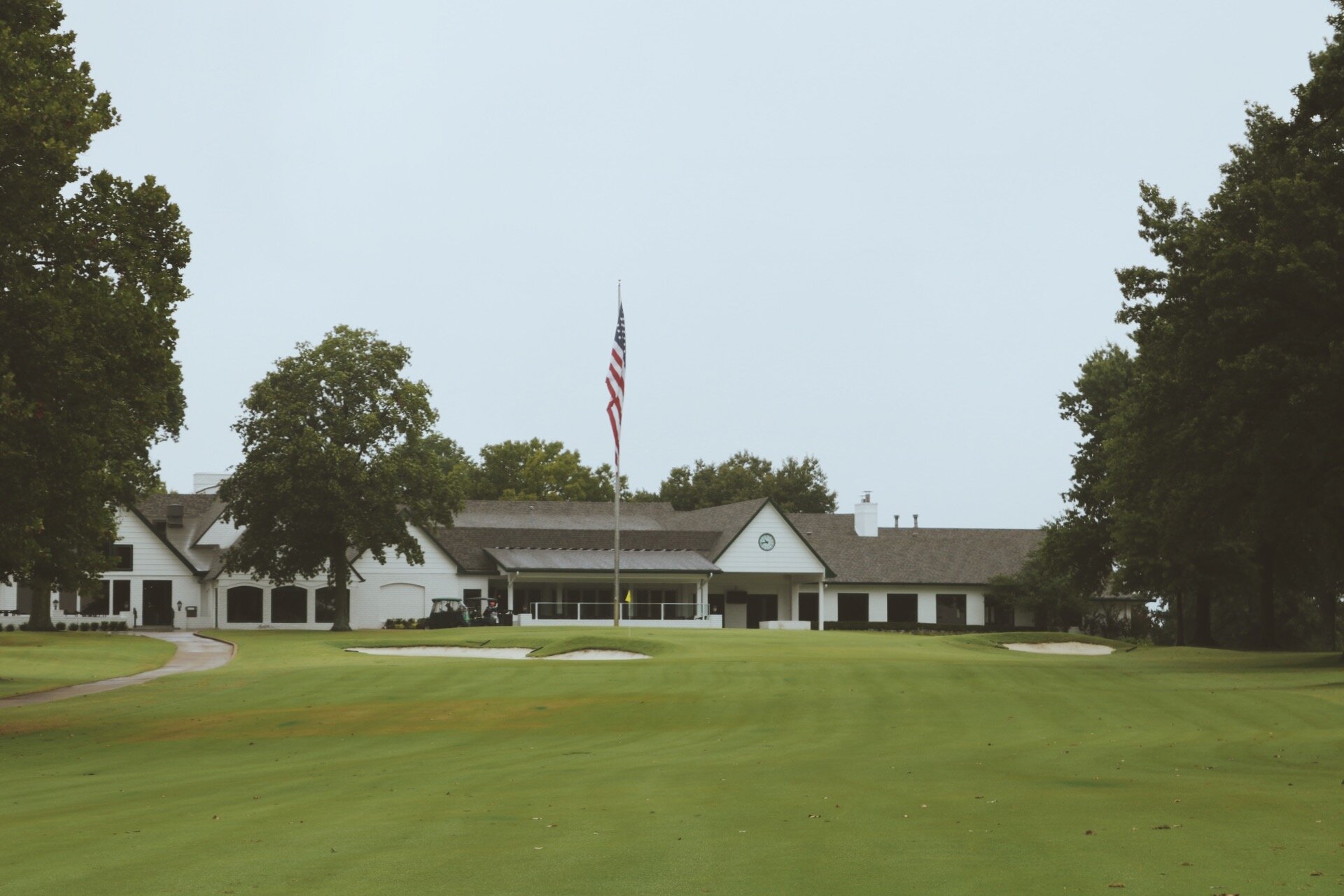
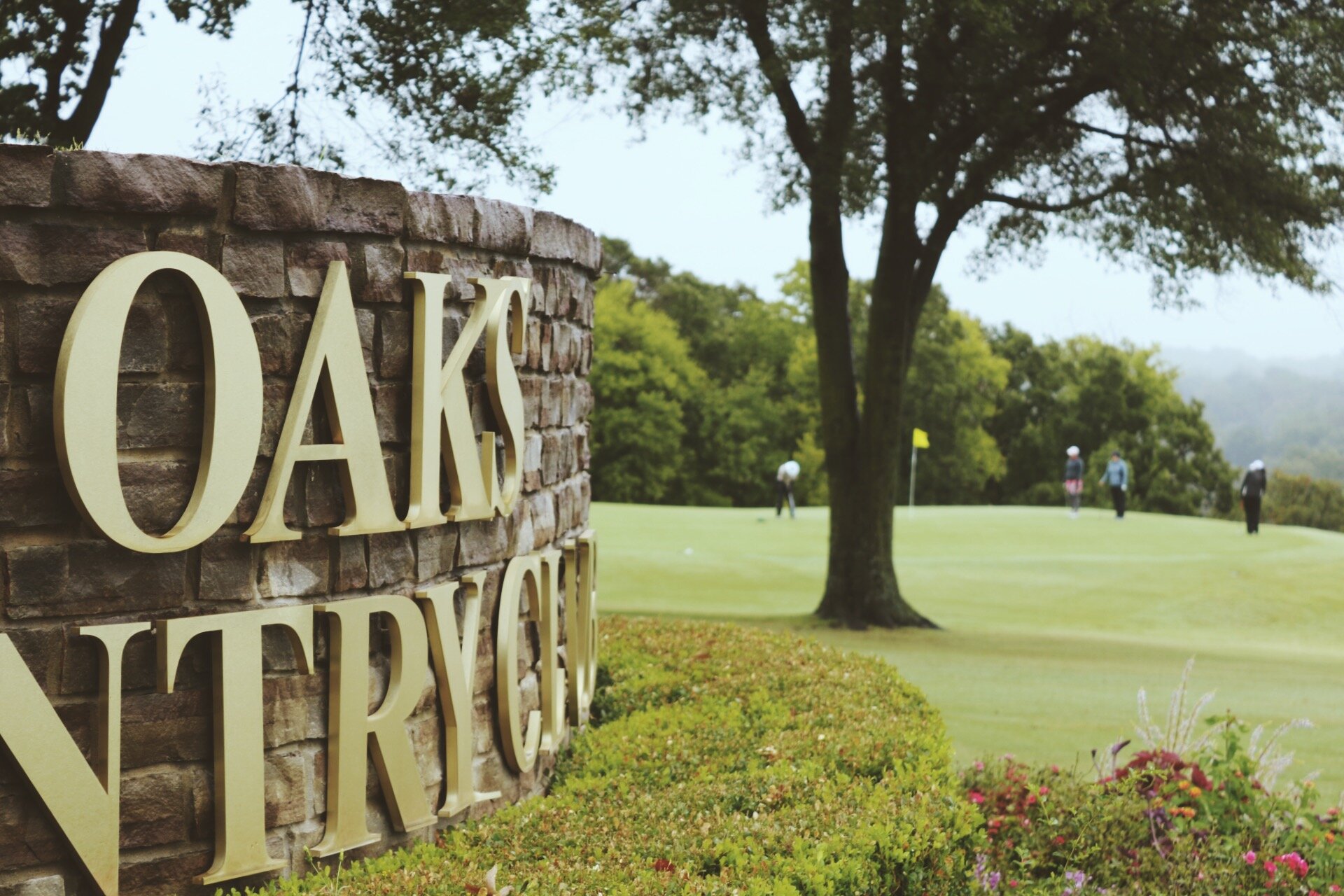
The first 15 years of the club saw dramatic changes. Originally sand surface greens, they introduced bermuda grass in 1924 and bent grass in 1930. In 1937, deep in the grip of the Great Depression, the club called on Oklahoma’s own Perry Maxwell to rebuild seven of the putting surfaces, who had just completed work on six others at Augusta National Golf Club in Georgia.
Despite the brilliance and stature of two of the world’s greatest golf architects, the club couldn’t escape the bust of the Depression and World War II. In 1944, Oakhurst was foreclosed on and purchased for $38,600, a mere fraction of the nearly half a million dollars for which it was created just two decades earlier.
Over the years, the track on the hill in southwest Tulsa now known as Oaks Country Club has served as a paramount example of A.W. Tillinghast’s work. Known for his vehement belief of marrying the game to the land on which it is played, Oaks stands unique, even to his other local body of work just seven miles north on the other side of the Arkansas River.
Despite his highly held belief that each course should be unique in its own skin, there are several iconic “Tillie Terrors” that paint the landscape of Oaks Country Club, most notably his elevated greens, closely guarded by deep, imposing bunkers. Tee boxes blend to the natural surroundings and offer a variety of angles, another Tillinghast staple.
According to the architect, “A course stands or falls through the character of its one-shot holes.” This statement is such that a round at Oaks Country Club could be considered a success or a failure by the time you putt out at the sixth hole. Nestled in the far northeast corner of the property, this downhill Par 3 is the embodiment of Tillinghast’s iconic “Tiny Tim” golf holes. Stretching to 133 yards at the back of the Tour Tees, you are faced with disaster on all sides of the putting surface. A miss to the left will undoubtedly find the sand with a touchy look back toward a severe false front. Testing the front and right side of the green will either fall off into a collection area or – more than likely – a treacherous pot bunker. Anything long and you’ll be flirting with out-of-bounds.
Par 3 Sixth at Oaks Country Club
Perhaps the most evident display of Tillinghast’s creativity is in the routing of Oaks Country Club. Leaning into his belief that a round of golf “should present eighteen inspirations,” take the opening four holes:
Hole One: Approach plays right-to-left down the hill to the southwest.
Hole Two: Approach left-to-right up the hill to the northeast.
Hole Three: Drive plays left-to-right and approach plays right-to-left down the hill to the northwest.
Hole Four: Drive plays right-to-left and approach plays left-to-right up the hill to the southeast.
Four opening holes. Four drastically different approaches. Not only are you competing with the varying elevation, but each offers a variety for the near-constant barrage of Oklahoma wind.
The club underwent a year-long, $4 million renovation in 2015, tabbing Atlanta native Bill Bergin to restore many of Tillinghast’s original green contours and bunker designs. Bergin – a former PGA Tour professional who also transformed Oklahoma City’s Quail Creek Golf and Country Club – studied countless photographs from the club’s early days to understand Tillinghast’s intentions. What resulted was a longer test with fairways restored to their original width, subtle rolls in the putting surfaces and grass-faced bunkers inspired by Tillinghast classics like Baltusrol and Winged Foot.



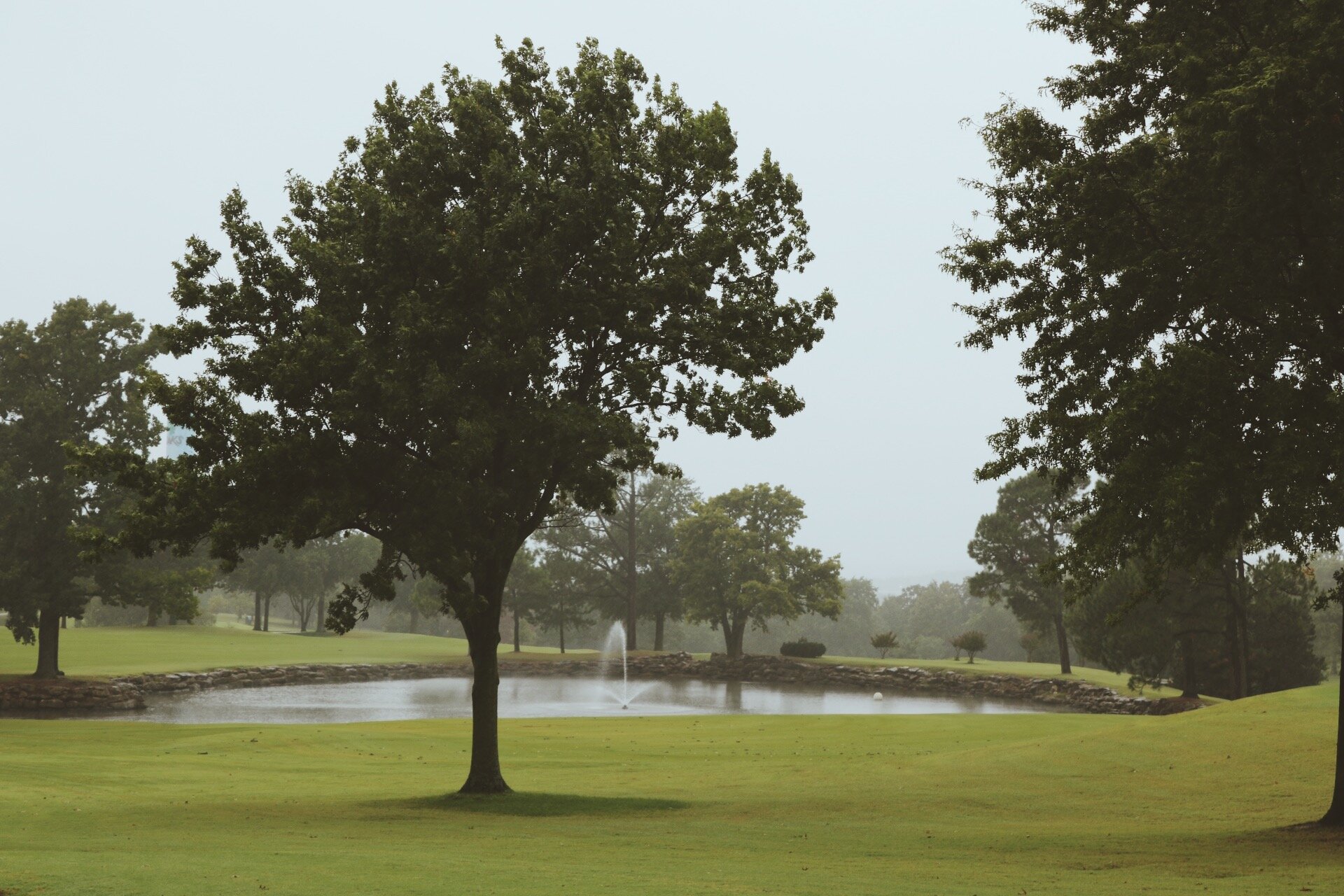
Closing in on a century of golf, Oaks Country Club is packed with classic Tillinghast risk/reward examples, from his “right side, wrong side” fairway positions to his propensity for his small, tightly defended greens.
Whether it was the “raffish, juvenile delinquence” in his formidable years or his Twainian-like abuse of American excessivism, Tillinghast’s Philly thrill style of golf course design led him to be hailed as “the forgotten genius of American golf.”
One thing is certain: atop one of Tulsa’s highest peaks – amid the booms and busts of the last 100 years – a Golden Age of golf remains.

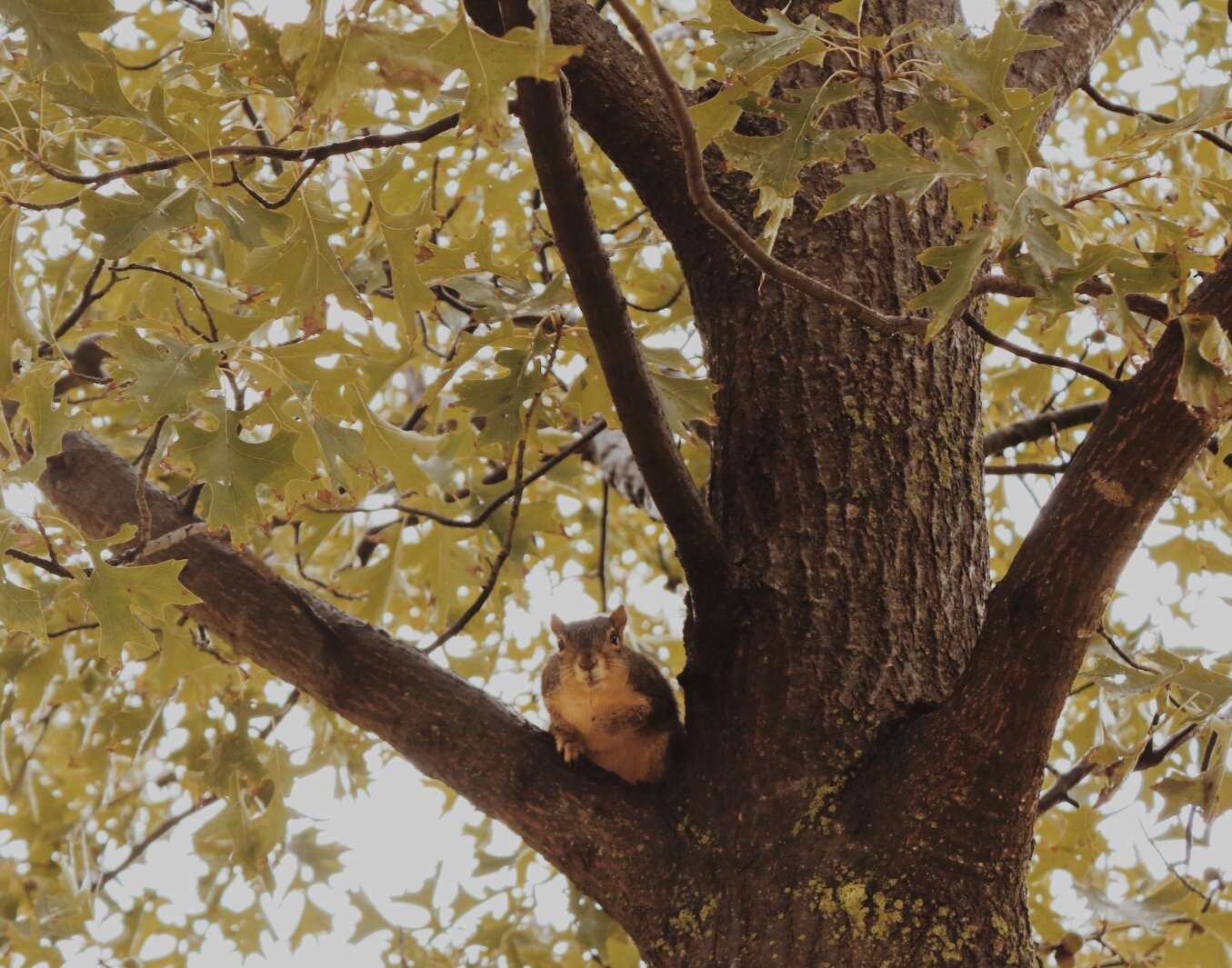


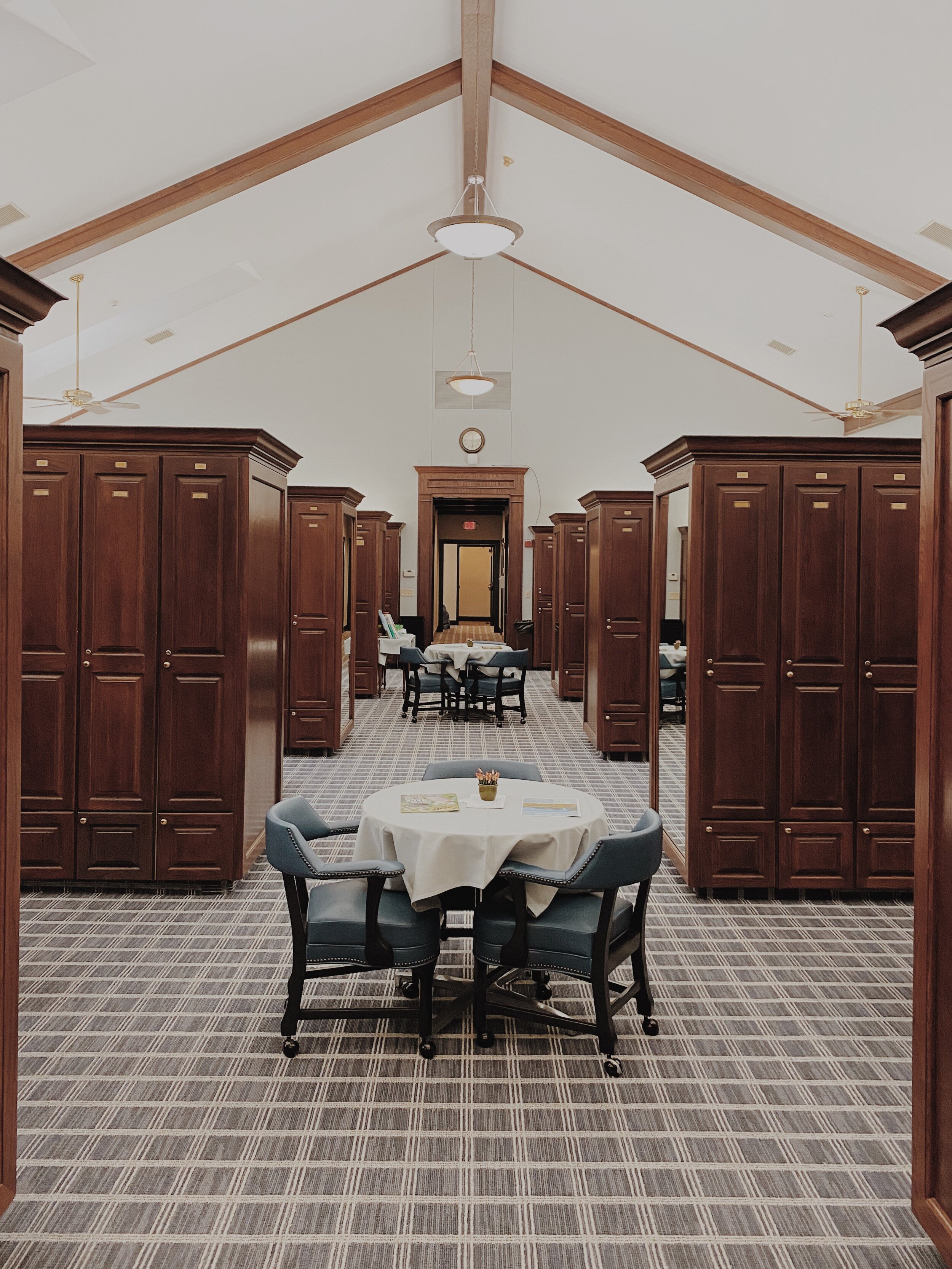

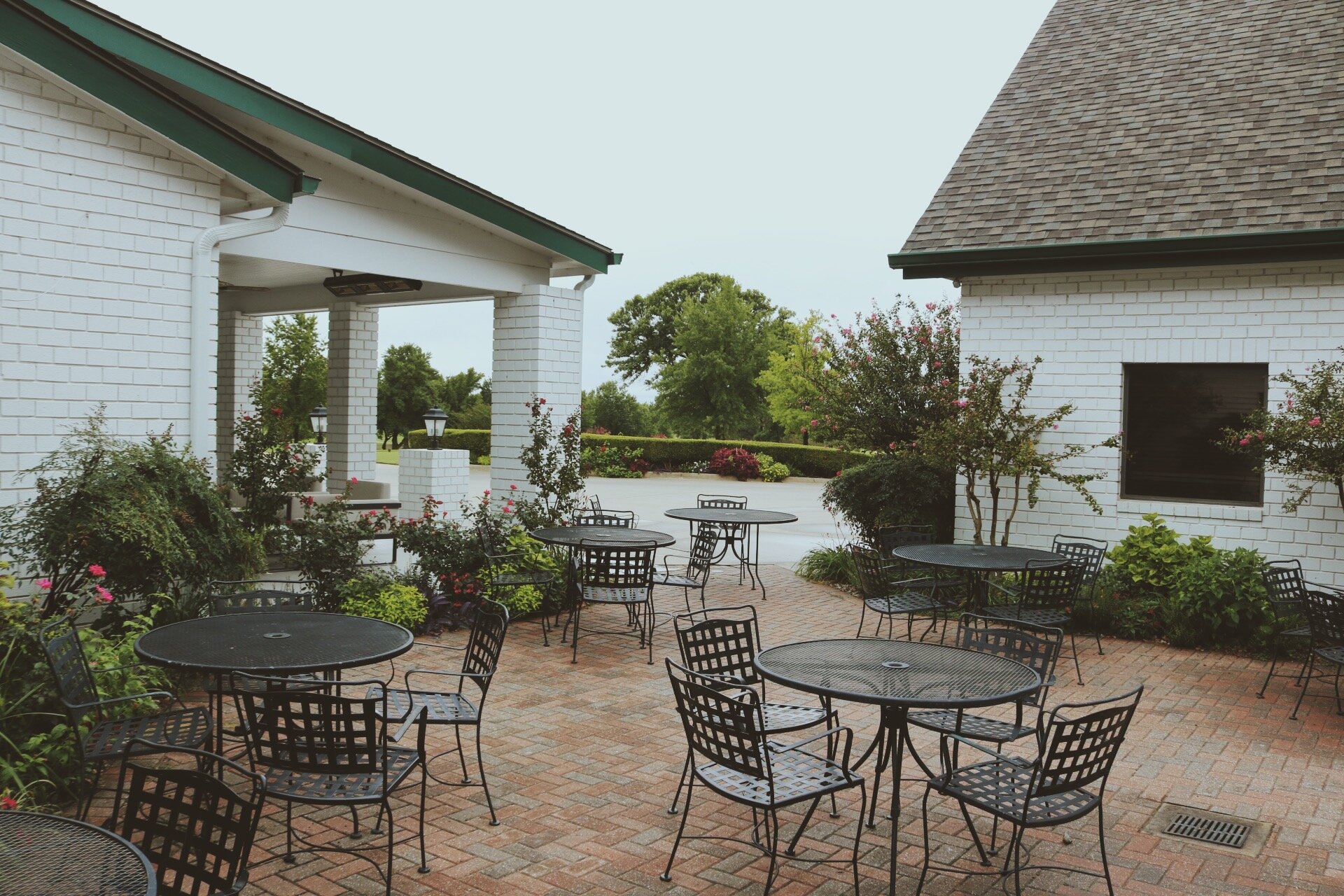
“Now on the tee…”
It began in the throes of Amen Corner on a blistering Oklahoma summer day.
“We should start our own thing,” Spencer said.
As simple as that. Right there on the tee box of the par five 13th at Cimarron National Golf Club – in the same town that the game first breathed life in this territory 120 years ago – our idea was born.
It was simple – tell the stories and promote the game of golf in Oklahoma. I’m not sure that we’re the right people. I’m not even sure we’re qualified. But the stories are there, and they deserve to be heard.
According to Del Lemon’s definitive guide on the game in Oklahoma, Guthrie Golf Club was organized in the new territory on May 10, 1900. Annual dues: six bucks. Since then, Oklahoma’s account of golf goes as Oklahoma’s history itself: ups and downs; twists and turns; highs and lows. Names like Maxwell and Coe, Berning and Harris grace the pages of its history. PGA Tour events, USGA championships and countless of competitive rounds have been played on our tracks – and not just the ones you think of. From The Coves in Afton and The Elks in Altus to Cedar Creek in Broken Bow and the Cimarron County Nine in Boise City, the impact of this game stretches to every corner of the state.
We’ll highlight unique routings, quaint clubhouses and larger-than-life personalities. We’ll curate a variety of quality visual content to help paint the picture. We’ll loop courses all around Oklahoma with the goal of producing engaging content – and want you along for the walk (or ride).
We’re average golfers. Okay – I’m an average golfer and Spencer is decent. But if our passion for the game in this state was a measure of our talent, we’d be Tiger in 2000.
Whether it’s the hard, red clay of your local muni or the immaculately groomed upper stratum of championship-level clubs, there is a story to be told. And we plan to tell it, one swing at a time.





























